Sergio Bartelsman
El tercer ojo «un compendio de encuentros improbables»
Abril 15 a junio 15 2016/ Fundación Espacio Interferencia-Cali
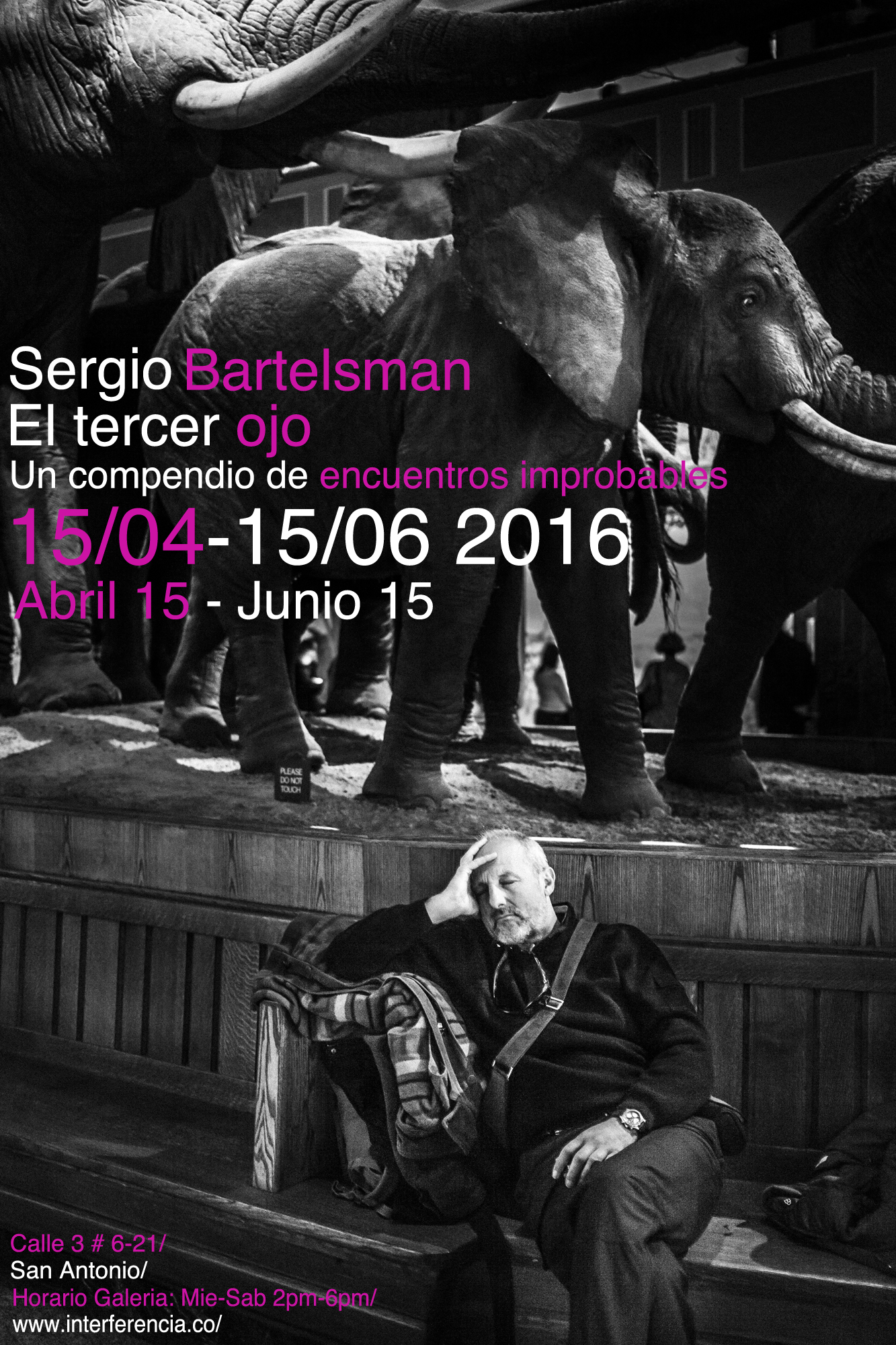




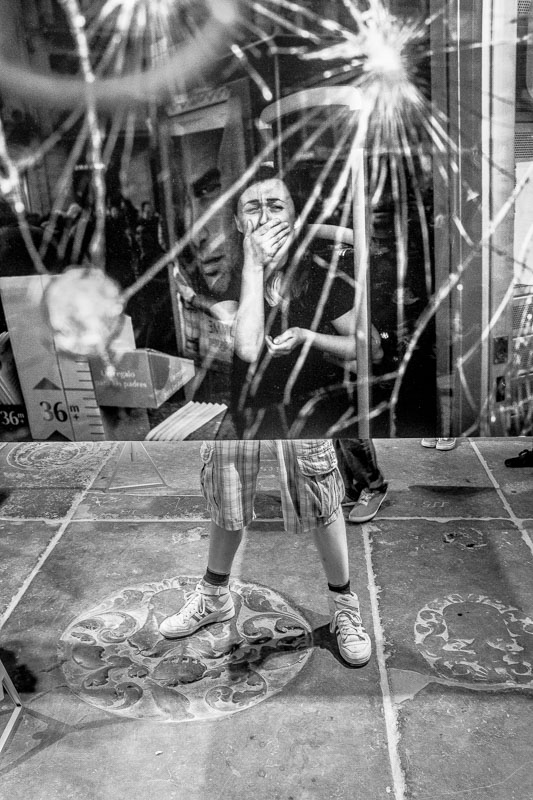

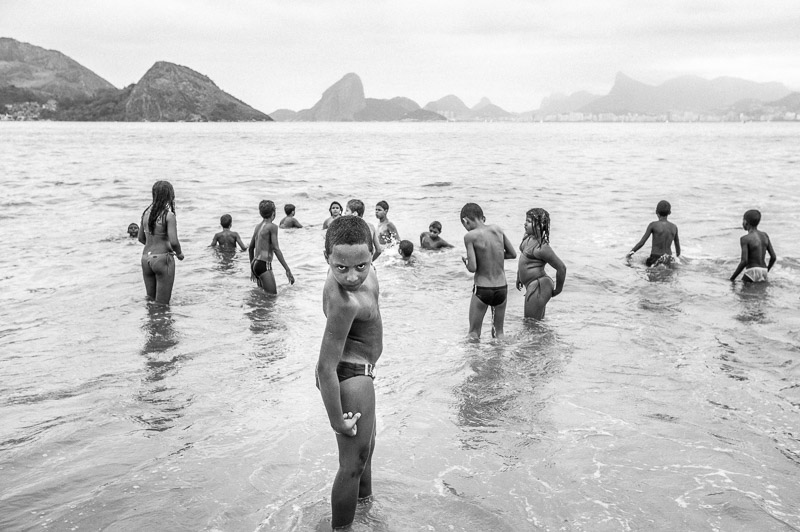
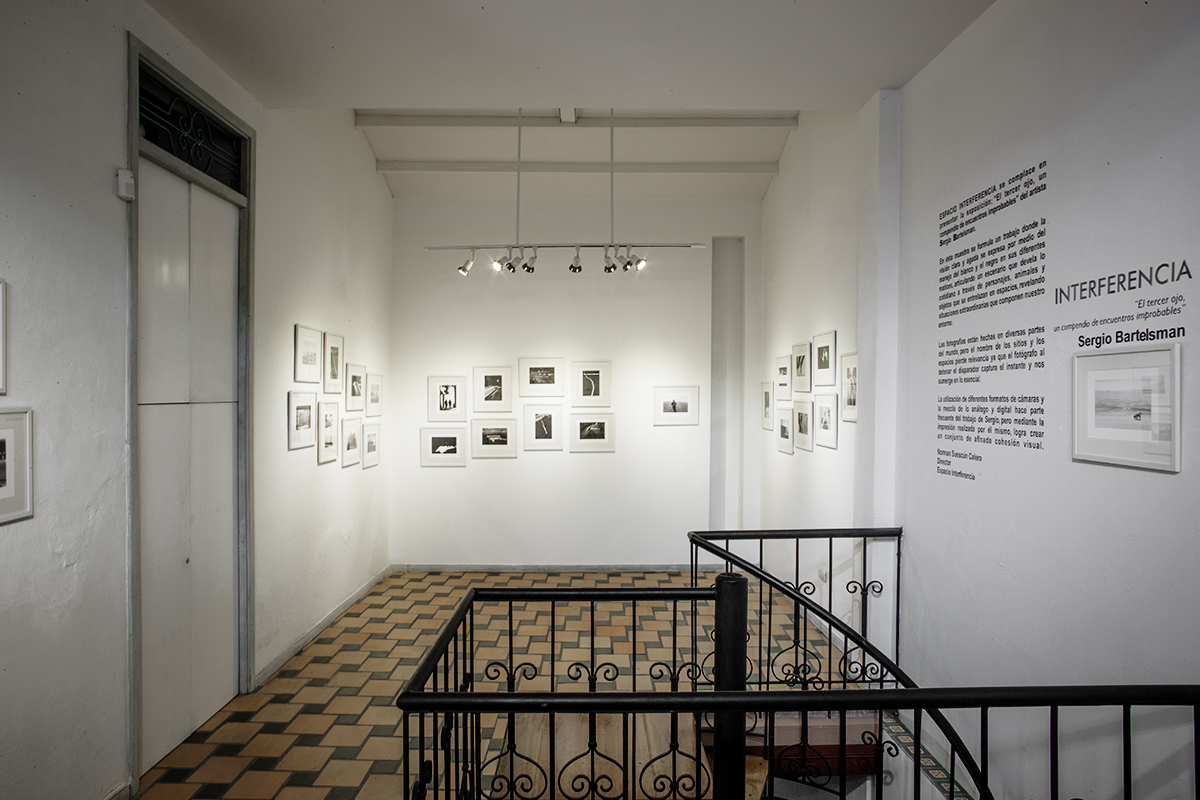
En esta muestra se formula un trabajo donde la visión clara y aguda se expresa por medio del manejo del blanco y el negro en sus diferentes matices, articulando un escenario que devela lo cotidiano a través de personajes, animales y objetos que se entrelazan en espacios, revelando situaciones extraordinarias que componen nuestro entorno.
Las fotografías fueron tomadas en diferentes partes del mundo, pero el nombre de los lugares y espacios pierde relevancia, ya que el fotógrafo al detonar el disparador, logra captura el instante y sumergirnos en la esencia del momento.
La utilización de diferentes formatos de cámaras y la combinación de lo análogico y lo digital son una parte frecuente del trabajo de Bartelsman. Sin embargo, mediante el proceso de impresión, logra crear un conjunto visual de afinada cohesión.
Curaduría: Norman Suescun Calero
Artista y Director Fundación Espacio Interferencia
In this exhibition, the work is formulated with a clear and sharp vision that is expressed through the handling of black and white in its different shades, articulating a scenario that reveals the everyday, through characters, animals and objects that are intertwined in spaces, revealing extraordinary situations that make up our environment.
The photographs are taken in various parts of the world, but the name of the places and spaces loses relevance since the photographer, when detonating the shutter, captures the moment and immerses us in the essence of the instant.
The use of different camera formats and the mixture of analog and digital is a frequent part of Bartelsman’s work, but through the printing process he manages to create a finely cohesive visual set.
Curator:Norman Suescun Calero
Artist y Director Fundación Espacio Interferencia
Jesús Hdez-Güero
Síndrome de Proteus
Diciembre 01 2017– febrero 01 2018/ Fundación Espacio Interferencia- Cali




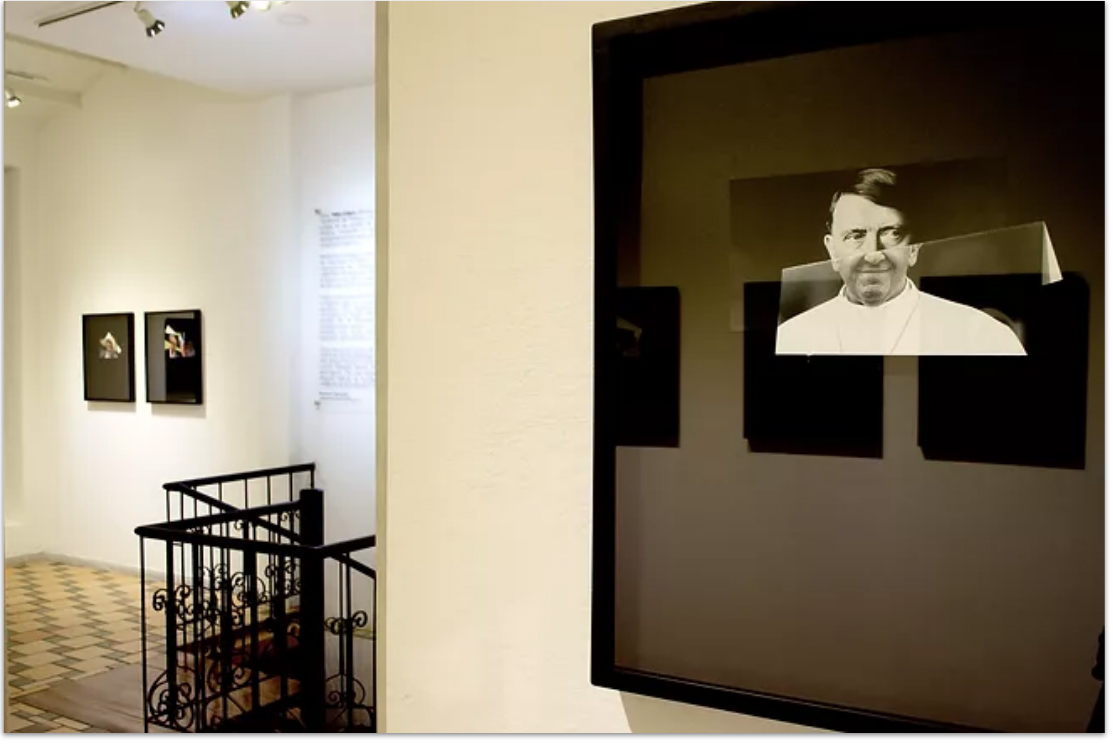



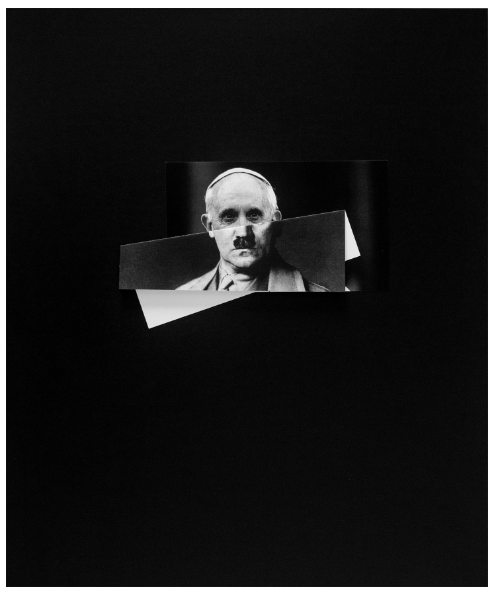
A través de la exhibición «Síndrome de Proteus», Jesús Hdez-Güero realiza una reflexión incisiva sobre los retratos de grandes personajes de la historia, revelando el poder de lo simbólico y desvelando los conceptos ocultos que se asientan en el imaginario colectivo.
Con un trabajo comprometido, el artista muestra las relaciones de poder y dependencia dominantes, desafiando las convenciones sociales mediante la técnica del collage, que le permite combinar imágenes de distintas épocas, lugares y contextos en un mismo soporte.
Utilizando el concepto del Síndrome de Proteus (una patología congénita que se caracteriza por la deformación paulatina del organismo), Hdez-Güero desmitifica y corrompe la imagen idealizada, transformando el sentido de la fotografía original y generando composiciones donde el choque de dos realidades produce una nueva posibilidad perceptiva, otra expresión desarticulada, anormal y subversiva.
Esta desestructuración del espacio visual se asemeja al síndrome, donde etimológicamente se hace referencia al dios griego Proteo, quien podía mutar y asumir múltiples formas para no ser encontrado o descubierto. Así, se ejecuta una eficaz alegoría donde se manifiesta la mutación de la conducta de los sujetos que ejercen el poder.
Curaduría: Norman Suescun Calero
Artista y Director Fundación Espacio Interferencia
Through the exhibition «Proteus Syndrome,» Jesús Hdez-Güero offers an insightful reflection on the portraits of great historical figures, revealing the power of the symbolic and unveiling the hidden concepts that are entrenched in the collective imagination.
With his committed work, the artist shows dominant power relationships and dependencies, challenging social conventions through the technique of collage, which allows him to combine images from different eras, places, and contexts on the same support.
Using the concept of Proteus Syndrome (a congenital pathology characterized by the gradual deformation of the body), Hdez-Güero demystifies and corrupts the idealized image, transforming the meaning of the original photograph and generating compositions where the clash of two realities produces a new perceptual possibility, another disarticulated, abnormal, and subversive expression.
This deconstruction of the visual space resembles the syndrome, where etymologically it refers to the Greek god Proteus, who could mutate and assume multiple forms to avoid being found or discovered. Thus, an effective allegory is executed where the mutation of the behavior of those who exercise power is manifested
Curator: Norman Suescun Calero
Artist and Director Fundación Espacio Interferencia
Gabriel Ángel, Salomé Bravo, María Chalela , Diana Santa Fe, MUDO
Y-Painting
Julio 13 – septiembre 13 2019/Fundación Espacio Interferencia- Cali


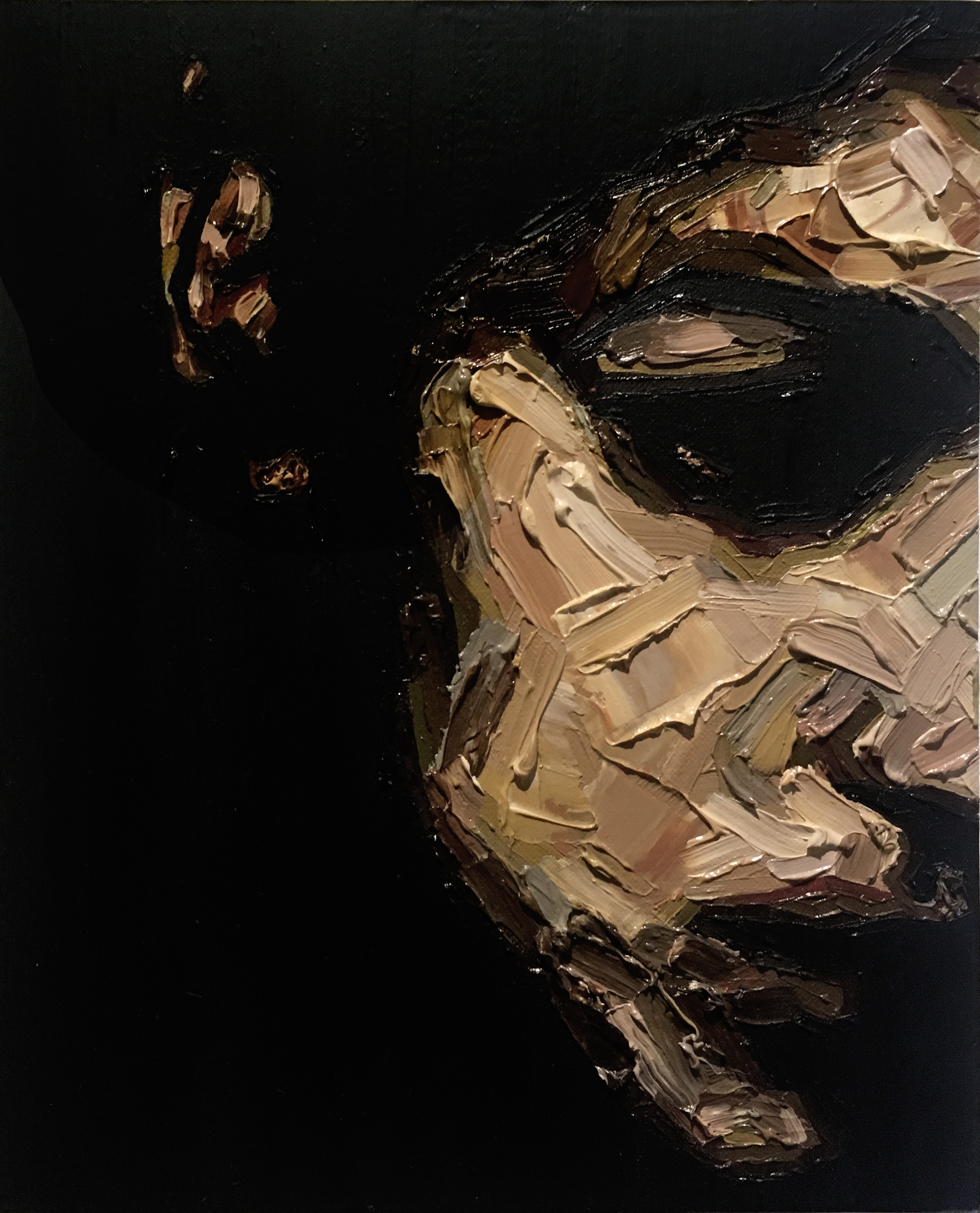





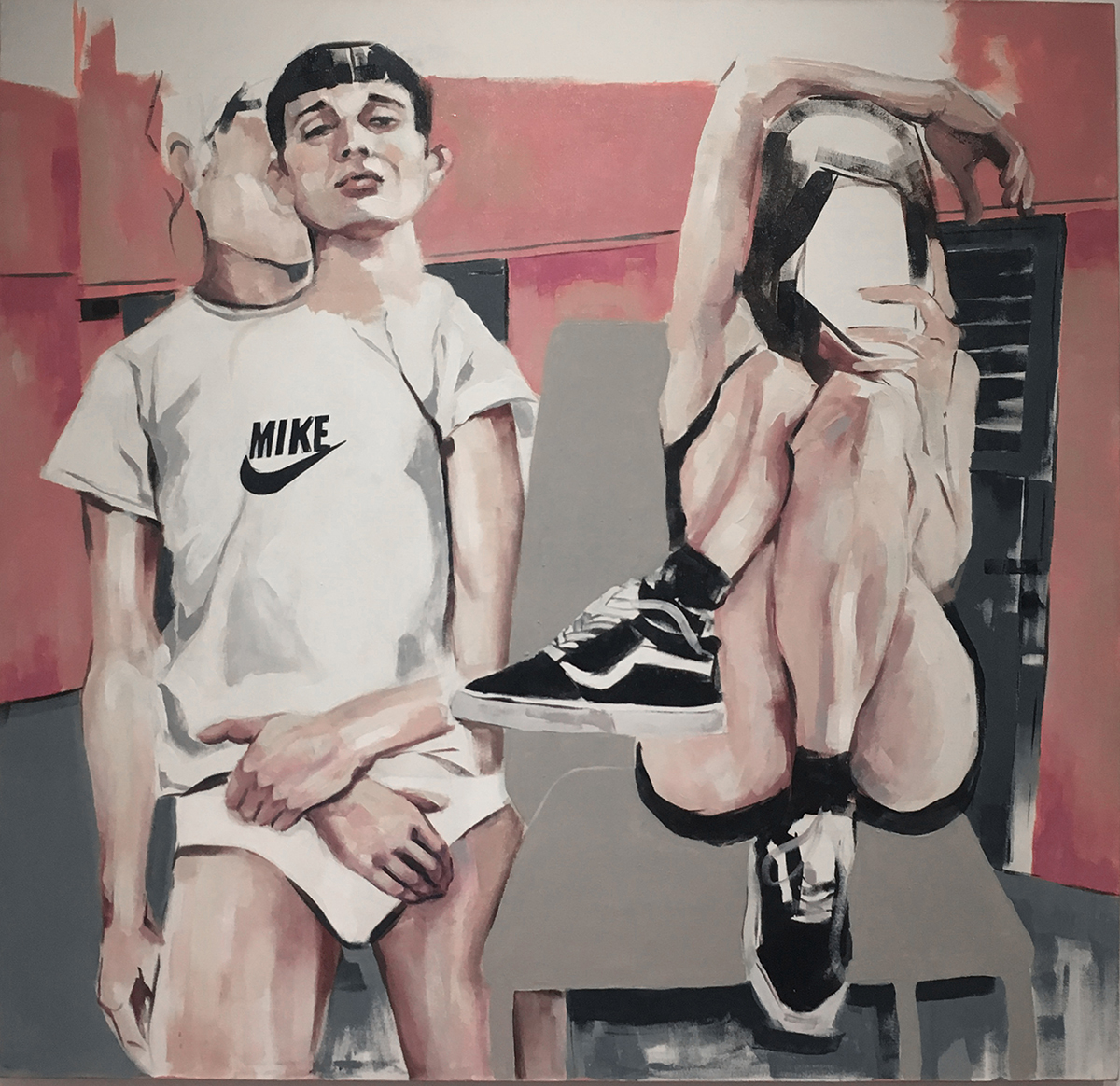
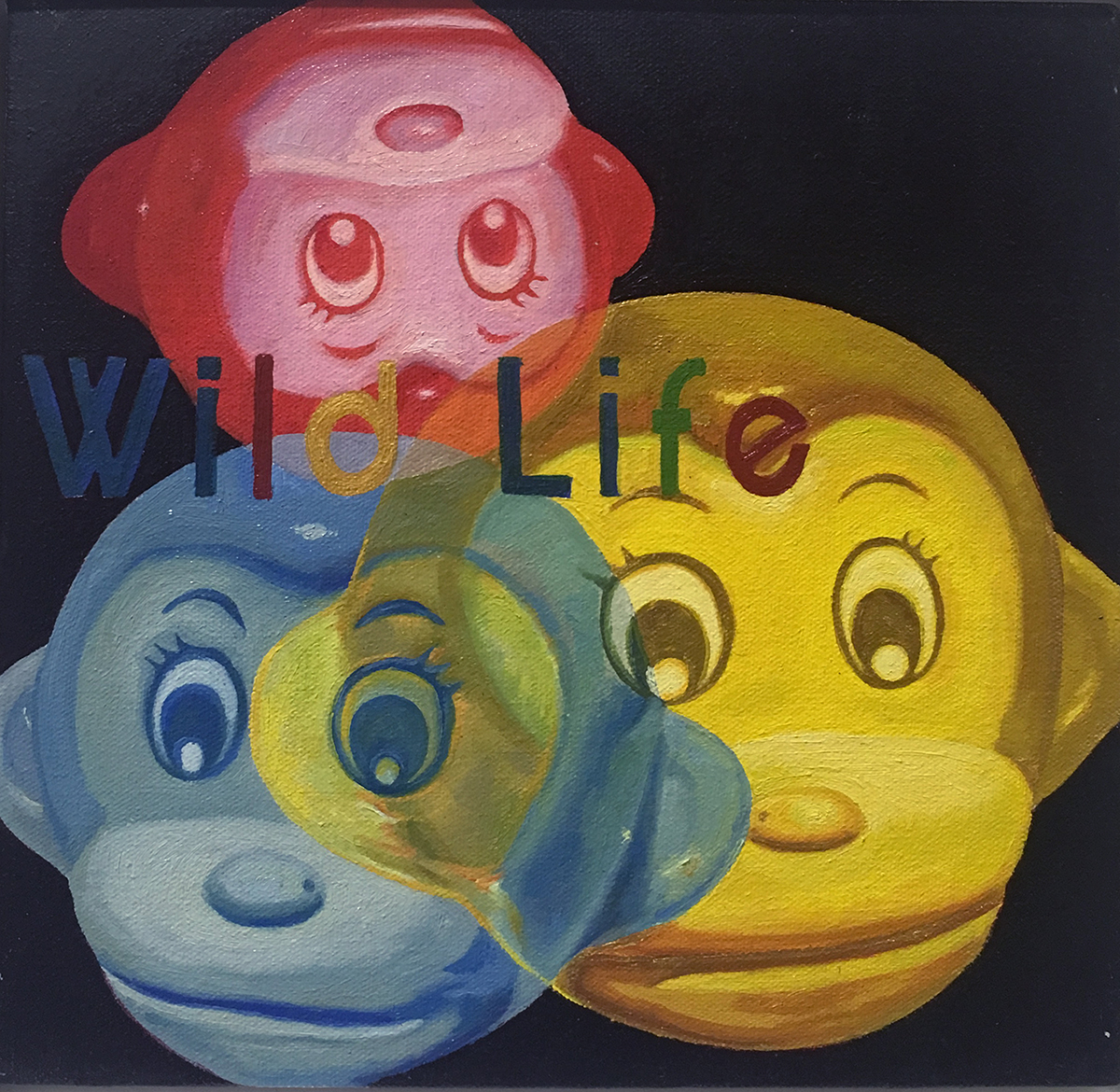


Y PAINTING es una exposición que plantea examinar las diversas formas en que se aborda lo pictórico en la actualidad.
La pintura como una de las expresiones más antiguas en la historia del arte, se ajusta al cambio constante y se relaciona intrínsecamente con la época en que se concibe, revelando lo que los artistas perciben en los diversos contextos en que se desarrolla la obra.
A pesar de la proliferación de los medios digitales, la pintura sigue proyectando los paradigmas contemporáneos y las múltiples necesidades del artista. Cada individuo como un universo en sí mismo se esfuerza por comprender el caos que lo rodea, cada uno desde su peculiar desesperación crea formas a través del trazo, el gesto y el color, aspirando a enfrentar emociones tales como el vacío, la soledad, la ansiedad, la confusión y el miedo, entre otras.
De esta manera, la pintura se convierte en un mecanismo desde el cual se expresan los dilemas de la actualidad, convirtiéndose así en un medio vital, generando una nueva conciencia donde el significado del ser es renovado constantemente.
Hoy en día las nuevas generaciones habitan en un mundo hiperconectado, donde la tecnología es parte de lo cotidiano, representan aspectos del mundo virtual por medio de la pintura, intentando construir una realidad en un tiempo vertiginoso, seguros de la transitoriedad de los acontecimientos, pero flexibles al cambio constante y a la búsqueda de la adaptación como una de las premisas primordiales. Es aquí donde la práctica de la pintura va más allá y se adhiere a esta flexibilidad como algo fundamental, como una forma de resistencia al caos y a la incertidumbre.
1. Howe, N.,& Strauss, W. (2000). Millenials rising: The next great generation. New York: Vintage Books.
Término acuñado por Howe y Strauss que determina que los Millenials o generación Y son los nacidos entre 1982 y y el año 2000.
Curaduría: Norman Suescun Calero
Artista y Director Fundación Espacio Interferencia
Y PAINTING is an exhibition that aims to examine the various ways in which the pictorial is approached today.
Painting as one of the oldest expressions in the history of art, conforms to constant change and is intrinsically related to the era in which it is conceived, revealing what artists perceive in the various contexts in which the work is developed.
Despite the proliferation of digital media, painting continues to project contemporary paradigms and the multiple needs of the artist. Each individual as a universe in itself strives to understand the chaos that surrounds him, each one from his peculiar despair creates forms through stroke, gesture and color, aspiring to face emotions such as emptiness, loneliness, anxiety, confusion and fear, among others.
In this way painting becomes a mechanism from which the dilemmas of today are expressed, thus becoming a vital medium, generating a new consciousness where the meaning of being is constantly renewed.
Today, new generations live in a hyperconnected world, where technology is part of everyday life, they represent aspects of the virtual world through painting, trying to build a reality in a dizzying time, sure of the transience of events, but flexible to constant change and the search for adaptation as one of the primary premises. It is here that the practice of painting goes further and adheres to this flexibility as something fundamental, as a form of resistance to chaos and uncertainty.
1. Howe, N.,& Strauss, W. (2000). Millenials rising: The next great generation. New York: Vintage Books.Term coined by Howe and Strauss that determines that Millennials or generation Y are those born between 1982 and the year 2000.
Curator: Norman Suescun Calero
Artist and Director Fundación Espacio Interferencia
Etienne Boussac
Flash Frames de la película el abrazo de la serpiente
Diciembre 10 2018– enero 10 2019/ Fundación Espacio Interferencia- Cali
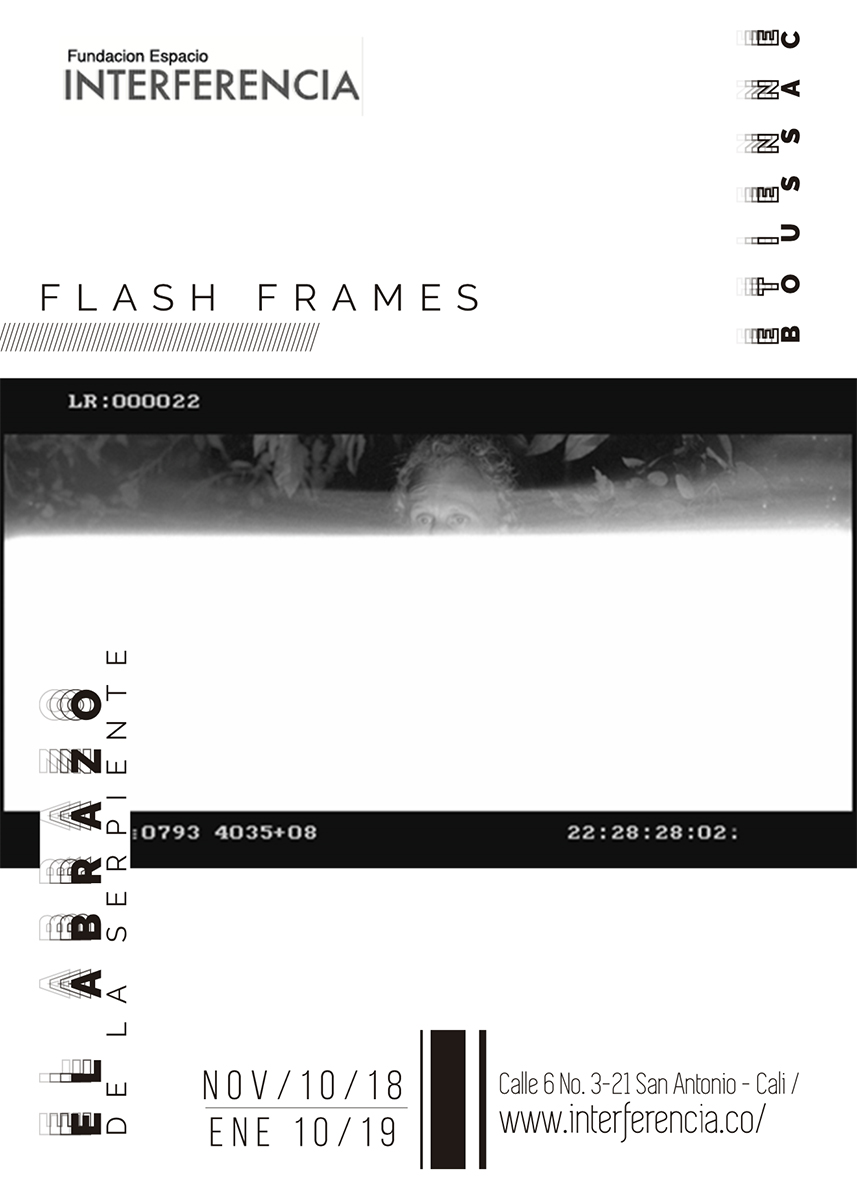



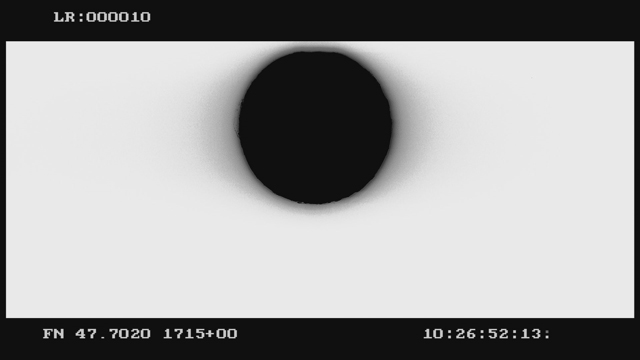
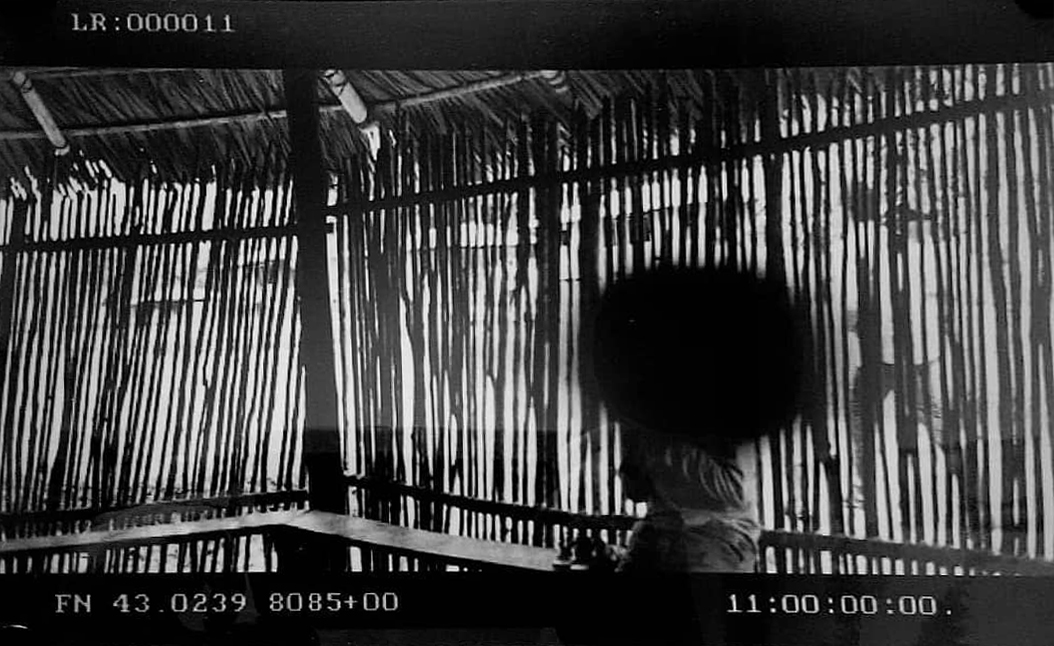




En la exposición Flash Frames de la película «El abrazo de la serpiente», Etienne Boussac montajista y editor de profesión hace una selección de los fotogramas residuales de la producción cinematográfica, es decir, los fragmentos excluidos en el proceso del montaje debido a la entrada precipitada de luz en el negativo análogo. Este efecto llamado Flash Frame es una interferencia que se crea al abrir la puerta de la cámara donde se encuentra el negativo el cual se carga o descarga al comenzar y al terminar de rodar el plano. Al entrar la luz de manera abrupta se plasman patrones inesperados en el cuadro, alterando a través de la sobre-exposición la composición original.
Por otro lado, al desarticular la continuidad espacio-temporal de la película y retomar el instante plasmado en el fotograma, podemos leer cada imagen como una obra separada perteneciente a un conjunto. Esto, nos permite nuevas lecturas donde se puede aducir que se generan estructuras narrativas que hablan tanto de la mecánica del medio cinematográfico, como del contenido implícito en el relato fílmico.
De esta forma, se crean paisajes indeterminados donde la luz, la sombra, el límite de la composición y descomposición en la imagen convergen, jugando un papel esencial tanto en el aspecto formal como en el contenido.
Curaduría: Norman Suescun Calero
Artista y Director Fundación Espacio Interferencia
In the exhibition Flash Frames of the film «The Embrace of the Serpent», Etienne Boussac, editor by profession, makes a selection of the residual frames of the film production, that is, the fragments excluded in the editing process due to the precipitous entry of light into the analogue negative. This effect called Flash Frame is an interference that is created when opening the door of the camera, where the negative is located, which is loaded or discharged when starting and finishing shooting the shot. When the light enters abruptly, unexpected patterns are reflected in the painting, altering the original composition through over-exposure.
On the other hand, by dismantling the space-time continuity of the film and resuming the moment captured in the frame, we can read each image as a separate work belonging to a set. This allows us new readings where it can be argued that narrative structures are generated which speak both of the mechanics of the cinematographic medium, and the content implicit in the film story.
In this way, indeterminate landscapes are created where light, shadow and the limit of composition and decomposition in the image converge, playing an essential role in both the formal aspect and the content.
Curator: Norman Suescun Calero
Artist and Director Fundación Espacio Interferencia
Felipe Barreiro
Así lo quiso Dios
Febrero 22 – marzo 28 2020/ Fundación espacio interferencia- Cali
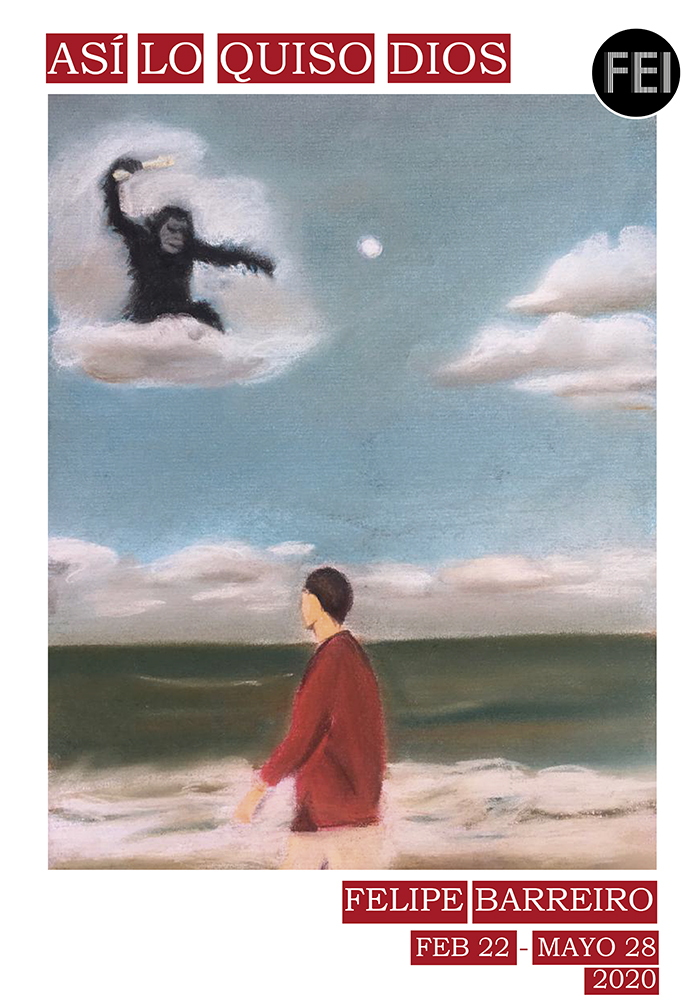
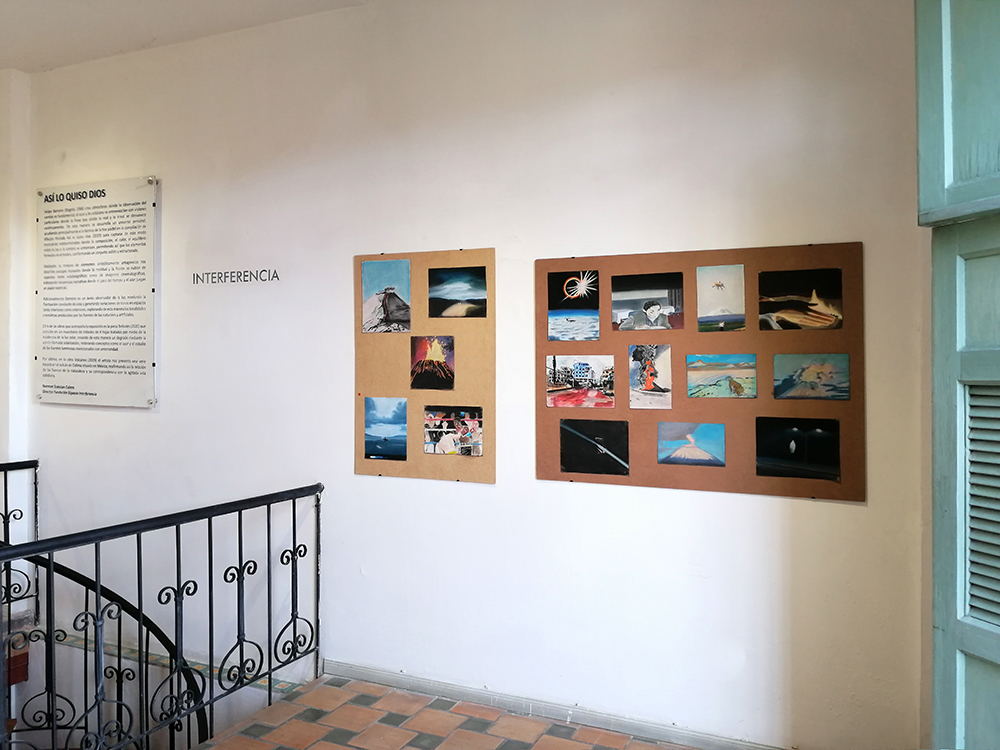

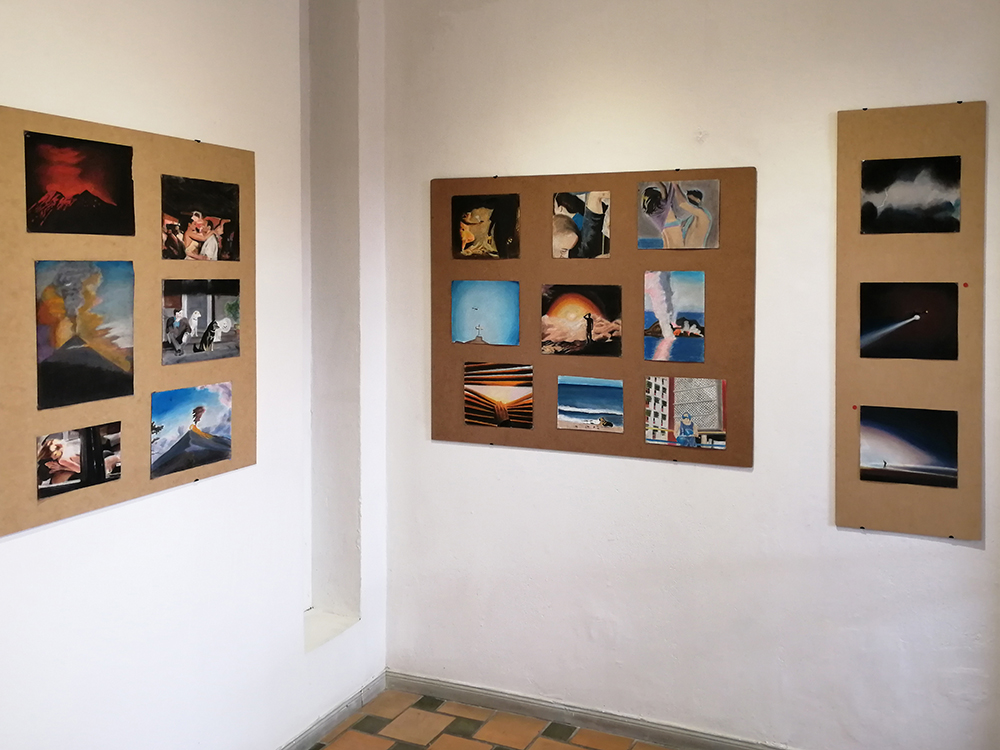

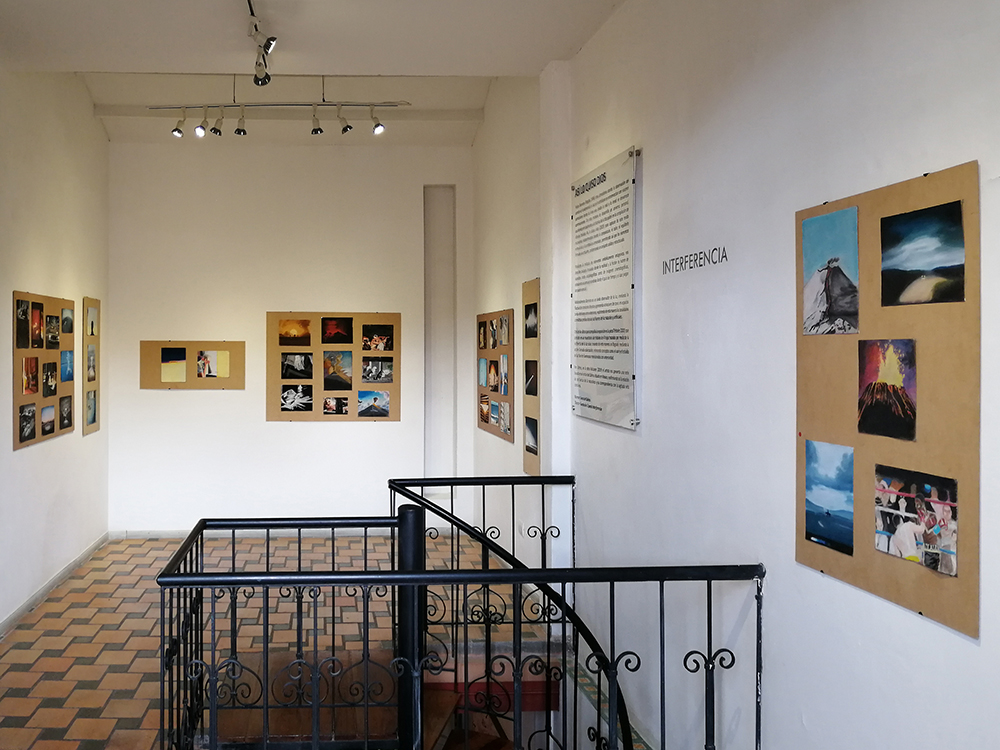

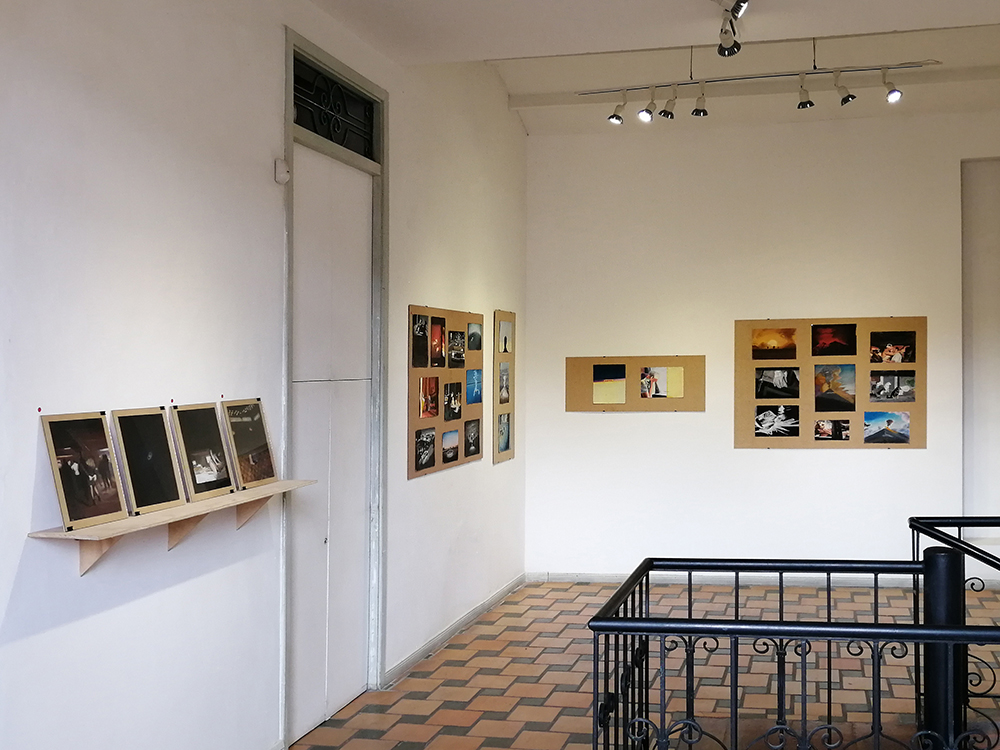
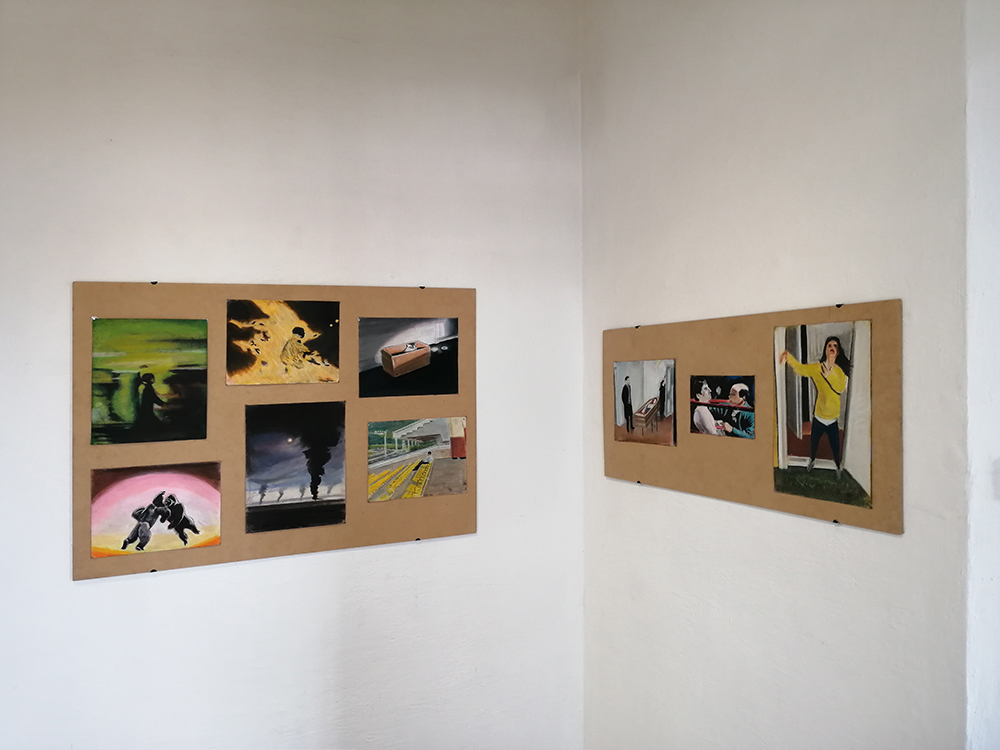
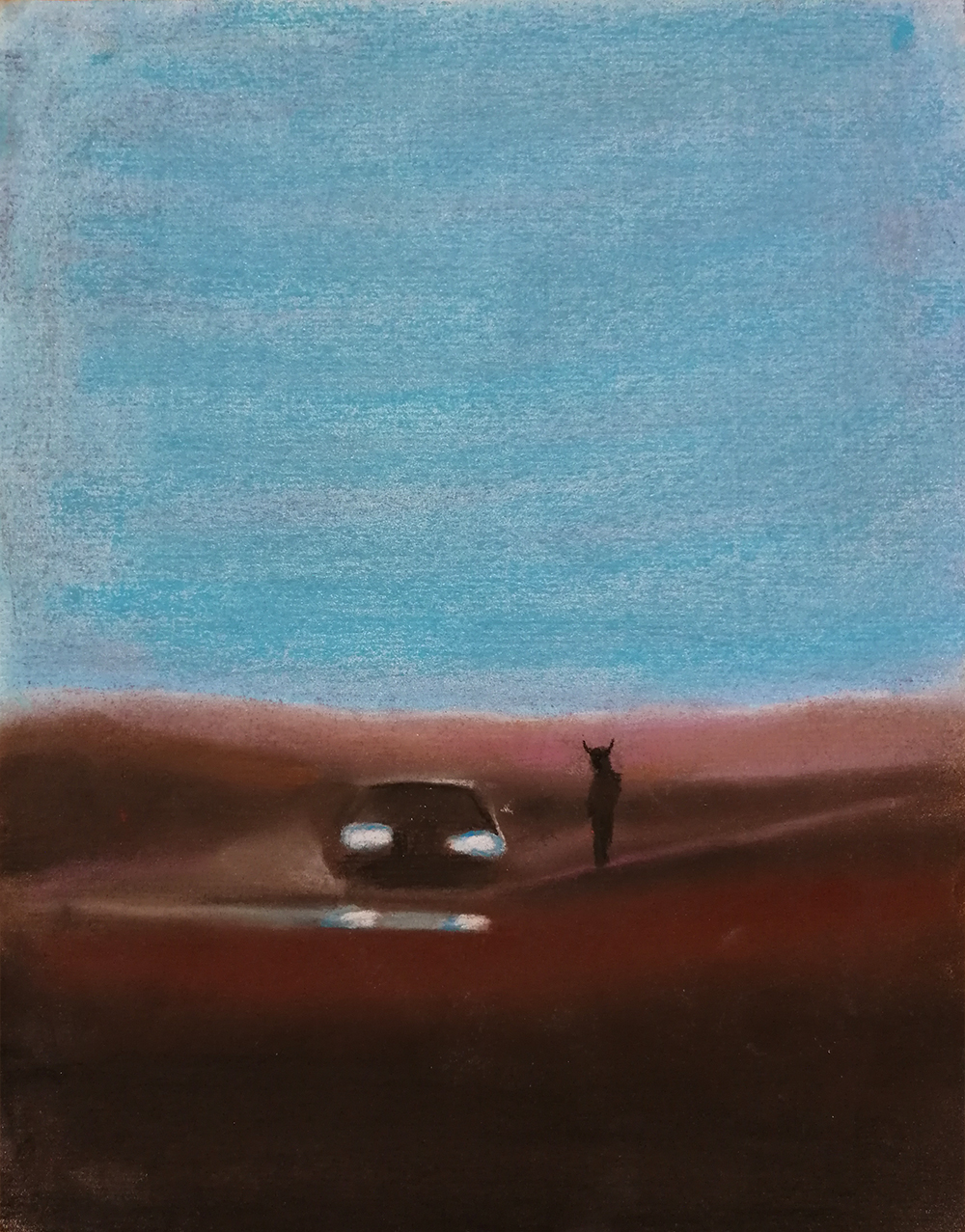
Felipe Barreiro (Bogotá 1988) crea atmósferas donde la observación del cambio es fundamental, el azar y lo cotidiano se entremezclan con visiones particulares donde la línea que divide lo real y lo irreal se desvanece continuamente. De esta manera se desarrolla un universo personal, acudiendo principalmente a la técnica de la tiza pastel en la compilación de dibujos titulada Así lo quiso dios (2019) para capturar de este modo escenarios indeterminados donde la composición, el color, el equilibrio entre la luz y la sombra se armonizan, permitiendo así que los elementos formales se articulen, conformando un conjunto solido y estructurado.
Mediante la mixtura de elementos simbólicamente antagónicos nos describe paisajes inusuales donde la realidad y la ficción se nutren de aspectos tanto autobiográficos como de imágenes cinematográficas, esbozando secuencias narrativas donde el paso del tiempo y el azar juegan un papel esencial .
Adicionalmente, Barreiro es un ávido observador de la luz, revelando la fluctuación constante de esta y generando variaciones de tonos en espacios tanto interiores como exteriores, explorando de esta manera las tonalidades cromáticas producidas por las fuentes de luz naturales y artificiales.
Otra de las obras que acompaña la exposición es la pieza Tréboles (2020) que consiste en un muestrario de tréboles de 4 hojas tratados por medio de la incidencia de la luz solar, creando de esta manera un degrade mediante la acción llamada solarización, reiterando conceptos como el azar y el estudio de las fuentes luminosas mencionados con anterioridad.
Por último, en la obra Volcanes (2019) el artista nos presenta una serie basada en el volcán de Colima situado en México, reafirmando así la relación de las fuerzas de la naturaleza y su correspondencia con la agitada vida cotidiana.
Curaduría: Norman Suescun Calero
Artista y Director Fundación Espacio Interferencia
Felipe Barreiro (Bogotá 1988) creates atmospheres where the observation of change is fundamental, chance and everyday life are intermingled with particular visions where the line that divides the real and the unreal continually vanishes. In this way a personal universe is developed, mainly employing the pastel chalk technique in the compilation of drawings entitled Así lo quiso dios (2019) to capture in this way indeterminate scenarios where composition, color and balance between light and shadow are harmonized, thus allowing formal elements to be articulated, forming a solid and structured whole.
Through the mixture of symbolically antagonistic elements, he describes unusual landscapes where reality and fiction are nourished by both autobiographical aspects and cinematographic images, outlining narrative sequences where the passage of time and chance play an essential role.
Additionally, Barreiro is an avid observer of light, revealing its constant fluctuation and generating variations of tones in both interior and exterior spaces, thus exploring the chromatic shades produced by natural and artificial light sources.
Another of the works that accompanies the exhibition is the piece Clovers (2020) which consists of a sample of 4-leaf clovers treated through the incidence of sunlight, thus creating a degrade through the action called solarization, reiterating concepts such as chance and the study of the light sources mentioned above.
Finally, in the work Volcanes (2019) the artist presents a series based on the Colima volcano located in Mexico, thus reaffirming the relationship of the forces of nature and their correspondence with hectic daily life.
Curator: Norman Suescun Calero
Artist and Director Fundación Espacio Interferencia
Manuel H. Y Nereo López
Nostalgia y Aspiración; La clase media Bogotana durante la segunda mitad del siglo XX. Miradas sobre la obra de los fotógrafos Manuel H. Y Nereo López .
Fecha: enero 27 – febrero 27 2017/ Lugar: Fundación espacio interferencia- Cali

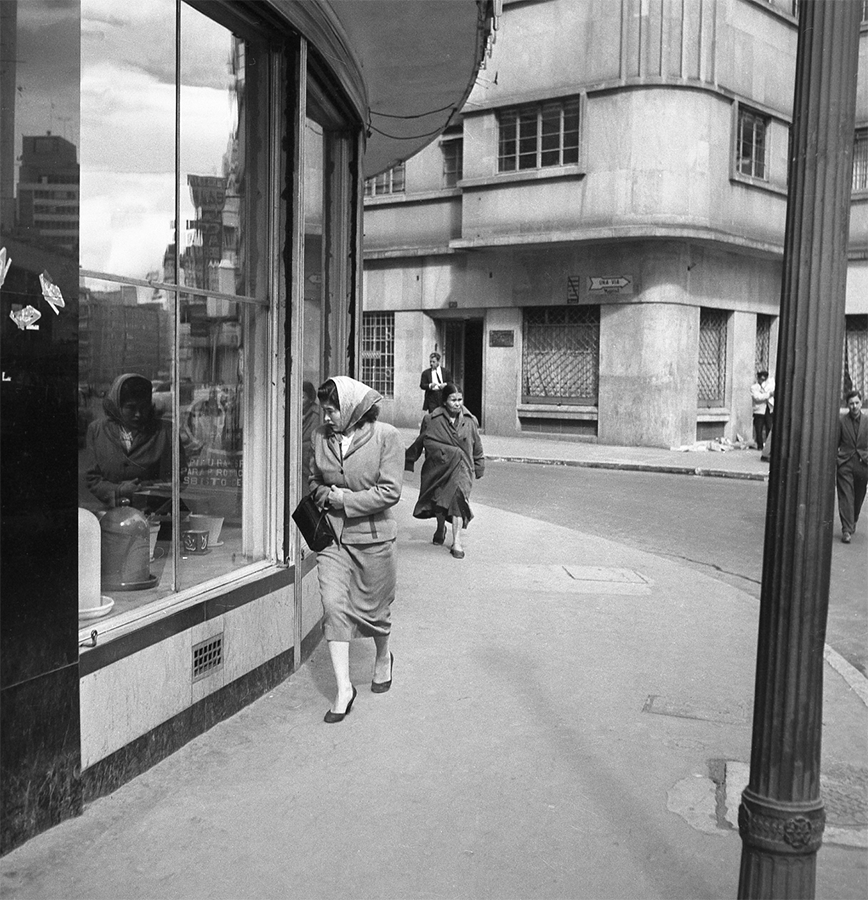
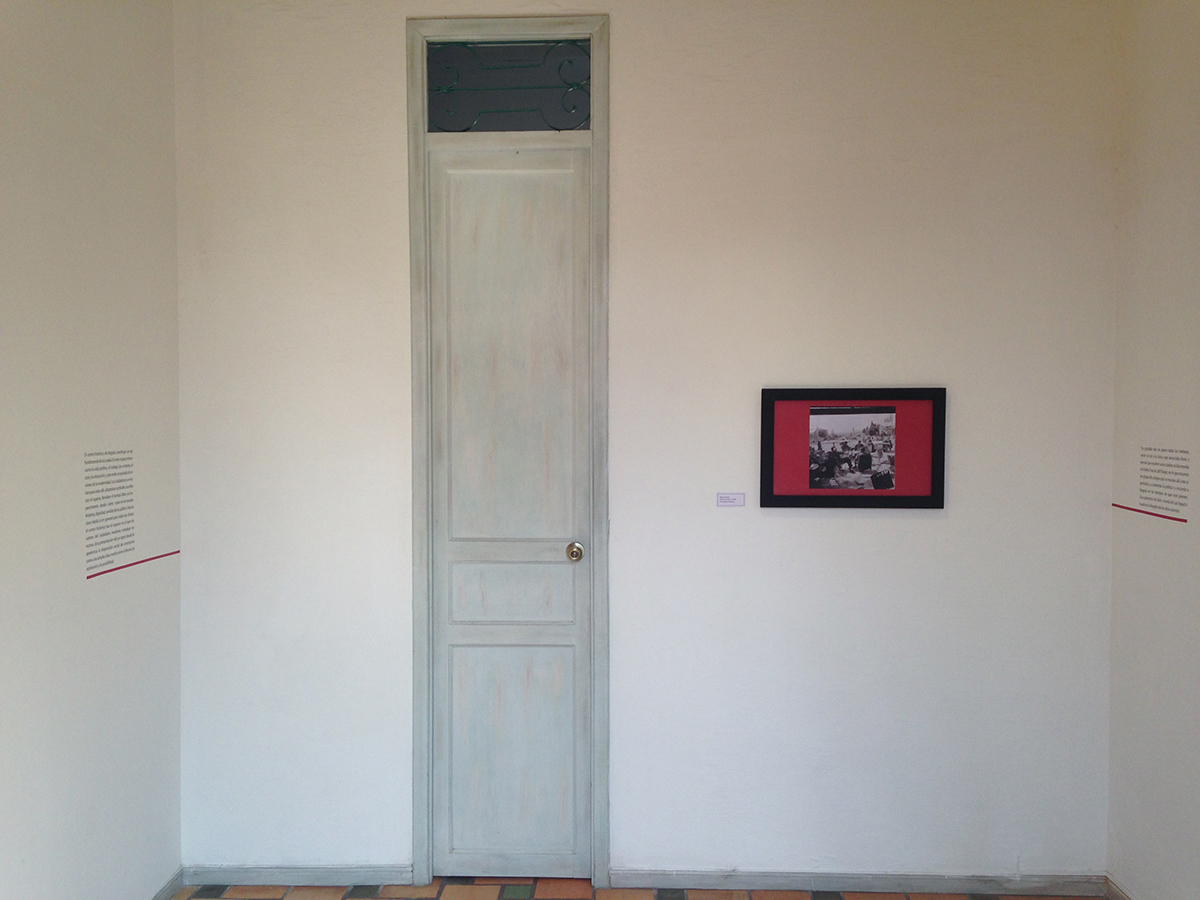
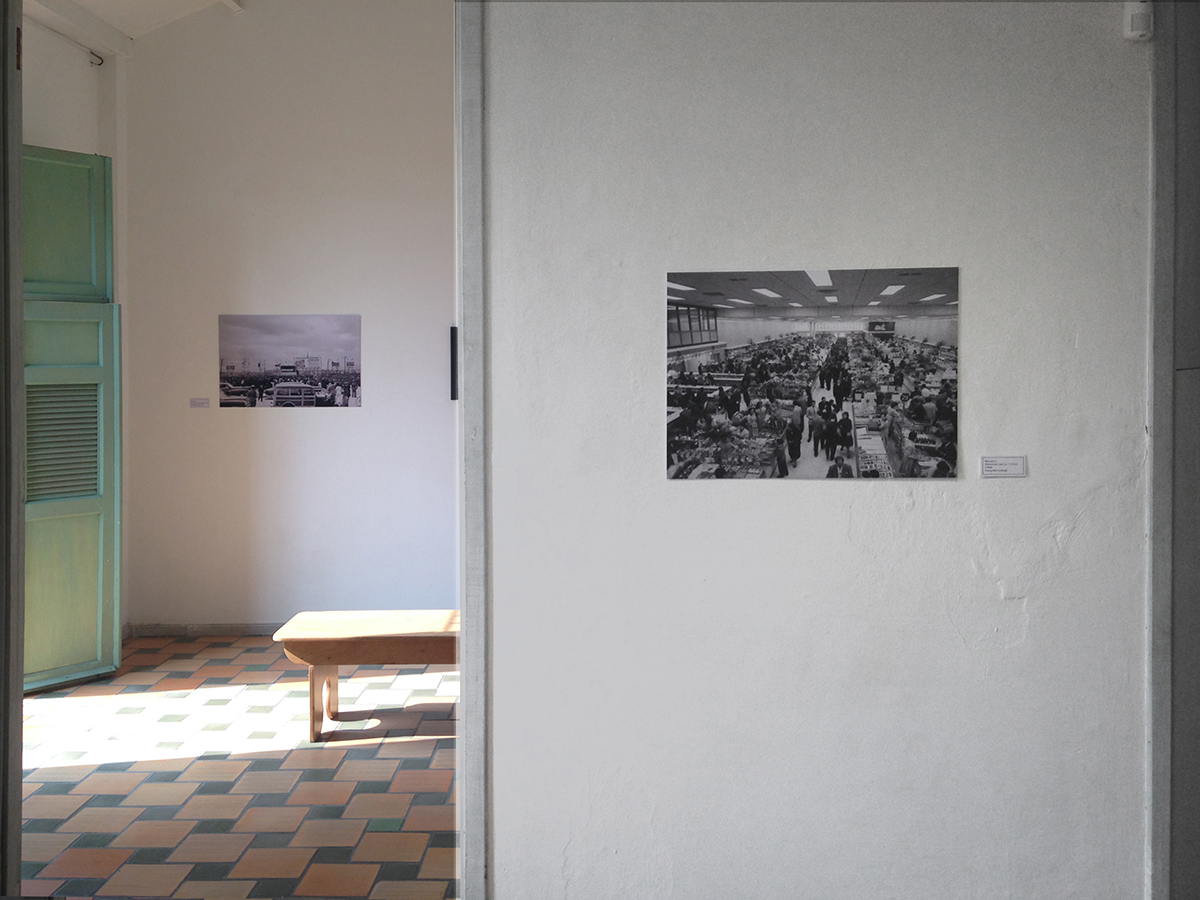
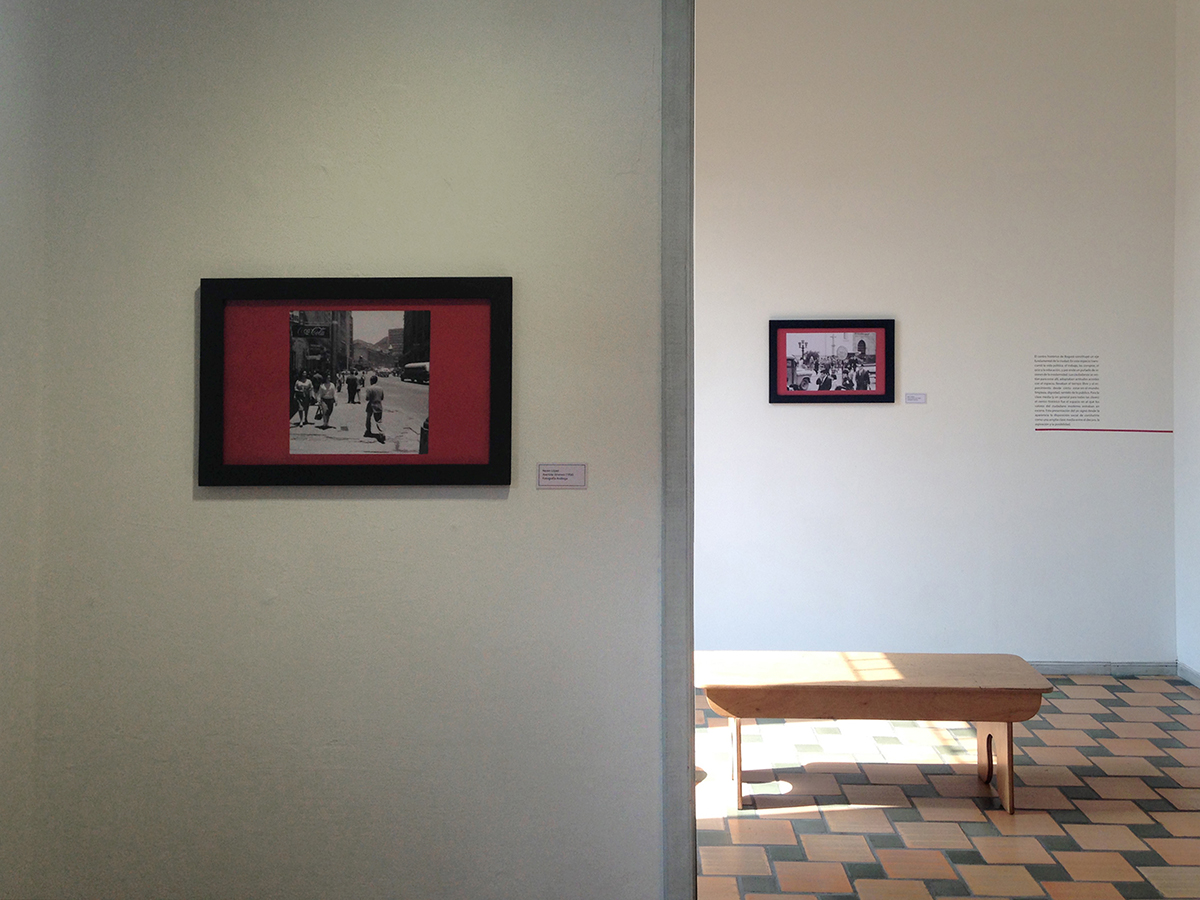
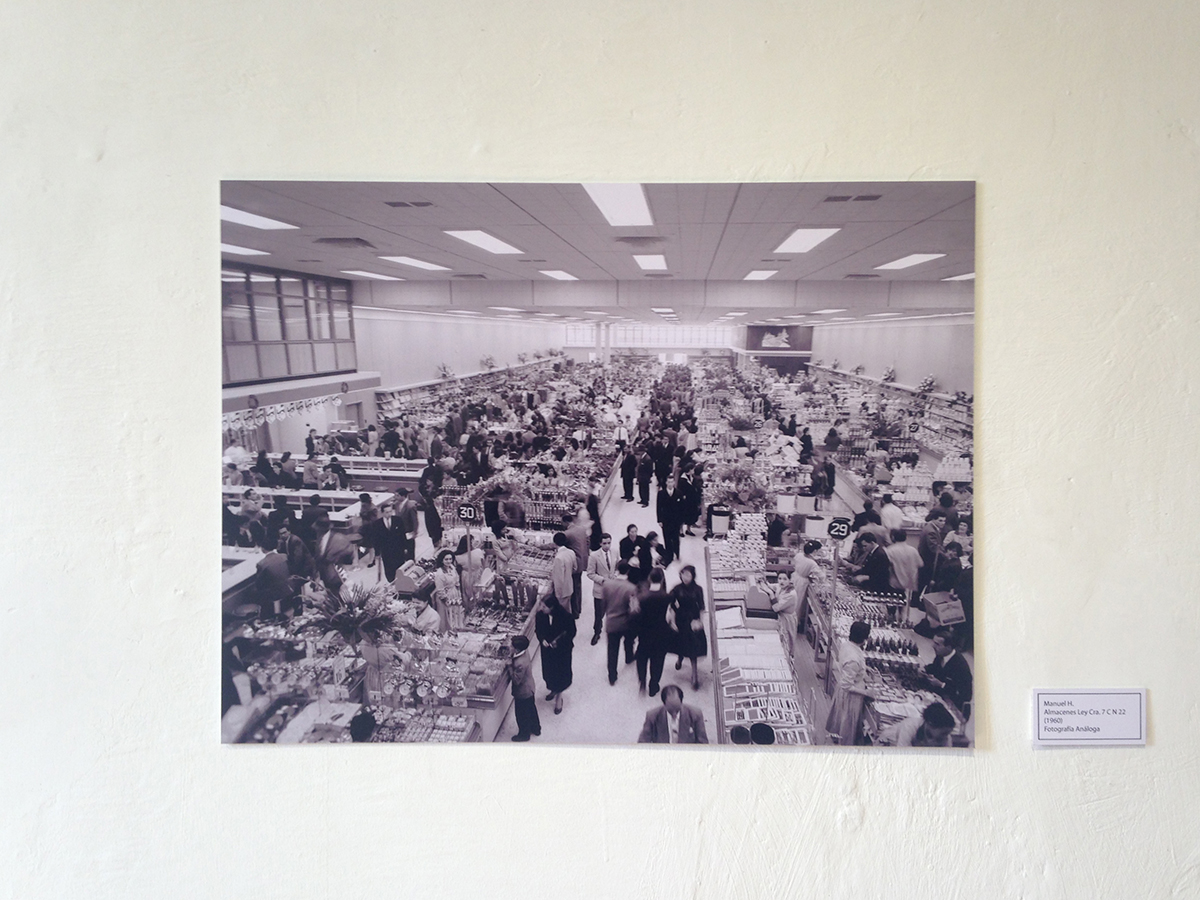

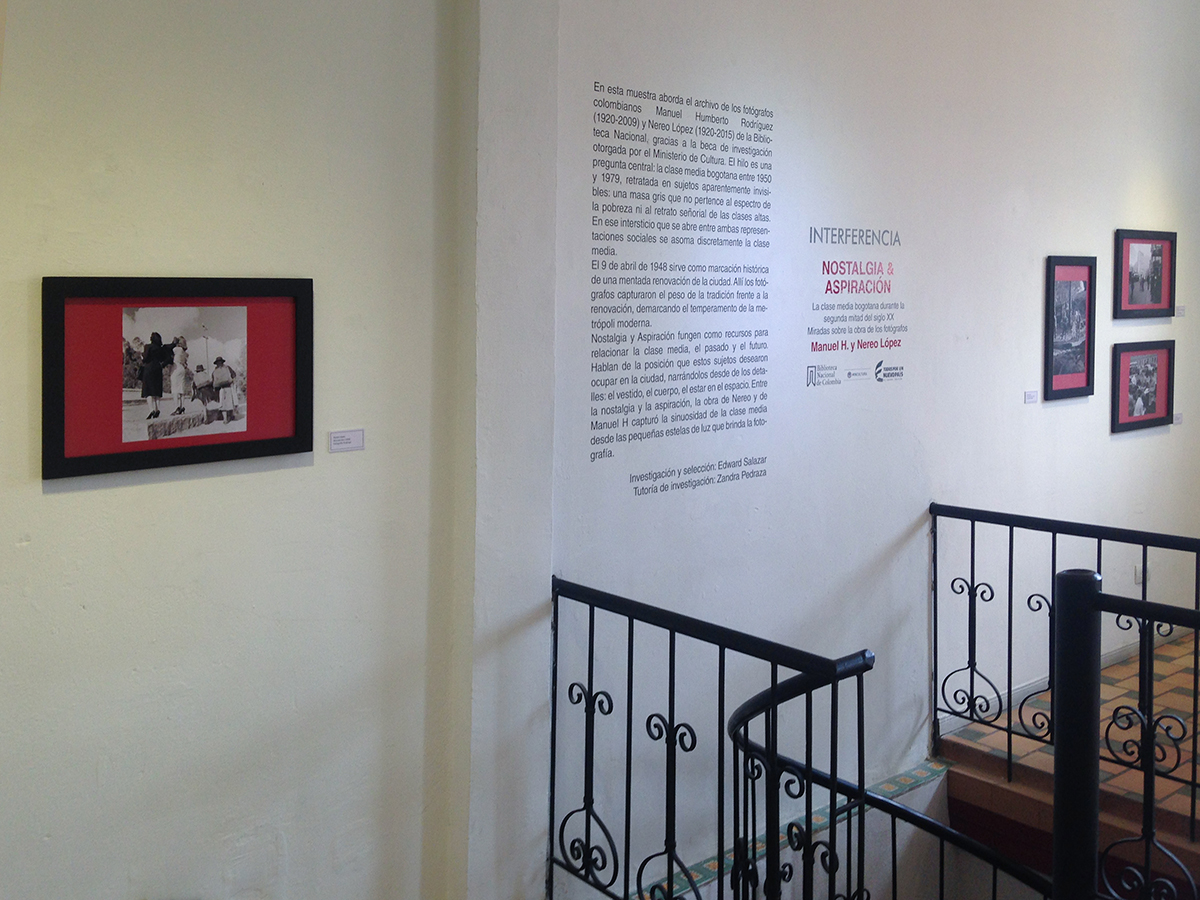
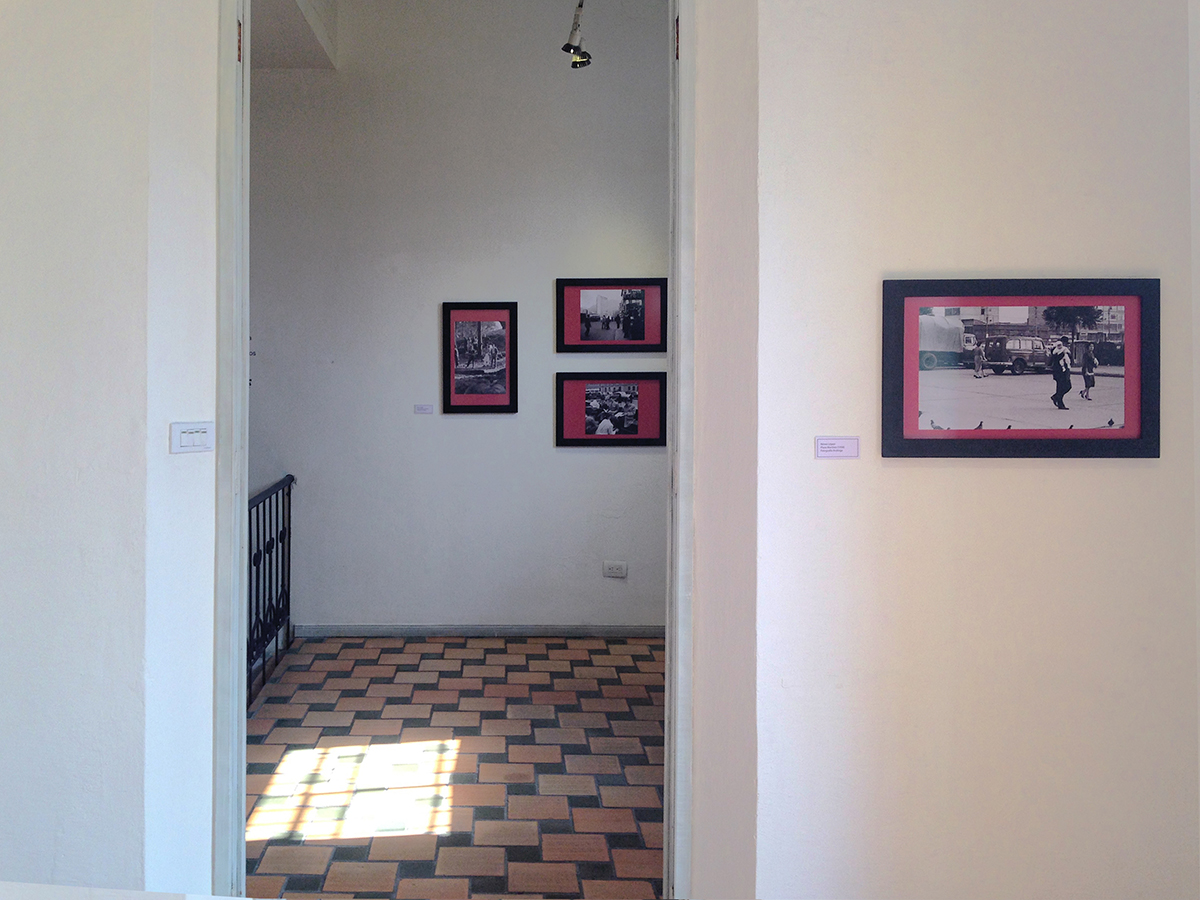
En esta muestra se abordan los archivos de los fotógrafos colombianos Manuel Humberto Rodríguez (1920-2009) y Nereo López (1920-2015) de la biblioteca Nacional, gracias a la beca de investigación otorgada por el Ministerio de Cultura. El hilo es una pregunta central: la clase media bogotana entre 1950 y 1979, retratada en sujetos aparentemente invisibles: una masa gris que no pertenece al espectro de la pobreza ni al retrato señorial de las clases altas. En ese intersticio que se abre entre ambas representaciones sociales se asoma discretamente la clase media.
El 9 de abril de 1948 sirve como marcación histórica de una mentada renovación de la ciudad. Allí los fotógrafos capturaron el peso de la tradición frente a la renovación, demarcando el temperamento de la metrópoli moderna.
Nostalgia y Aspiración fungen como recursos para relacionar la clase media, el pasado y el futuro. Hablan de la posición que estos sujetos desearon ocupar en la ciudad, narrándolos desde los detalles: el vestido, el cuerpo, el estar en el espacio. Entre la nostalgia y la aspiración, la obra de Nereo y de Manuel H. capturó la sinuosidad de la clase media desde las pequeñas estelas de luz que brinda la fotografía.
Investigación y selección : Edward Salazar
Museografía y diseño gráfico: Norman Suescun
This exhibition addresses the archives of Colombian photographers Manuel Humberto Rodríguez (1920-2009) and Nereo López (1920-2015) of the National Library, thanks to the research grant granted by the Ministry of Culture. The thread is a central question: the Bogota middle class between 1950 and 1979, portrayed in apparently invisible subjects: a gray mass that does not belong to the spectrum of poverty or to the stately portrait of the upper classes. In that interstice that opens between both social representations, the middle class discreetly appears.
April 9, 1948 serves as a historic marking of a mentioned renovation of the city. There photographers captured the weight of tradition in the face of renewal, demarcating the temperament of the modern metropolis.
Nostalgia and Aspiration serve as resources to relate the middle class, the past and the future. They talk about the position that these subjects wanted to occupy in the city, narrating them from the details: the dress, the body, the being in space. Between nostalgia and aspiration, the work of Nereo and Manuel H. captured the sinuosity of the middle class from the small trails of light provided by photography.
Research and selection : Edward Salazar
Museography and graphic design: Norman Suescun
Henry Salazar
Blue Prints «Le corbusier no estuvo aquí»
Febrero 23 – marzo 30 2019/ Fundación Espacio Interferencia- Cali
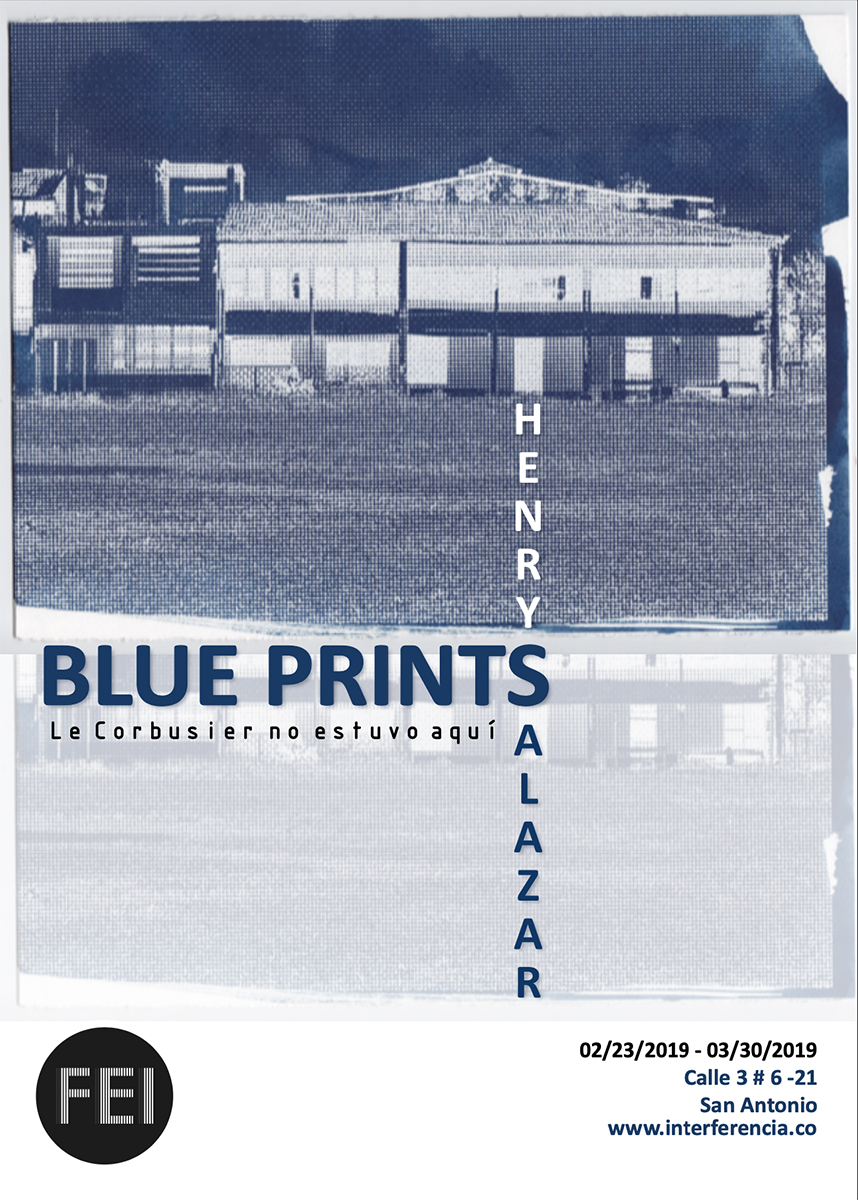
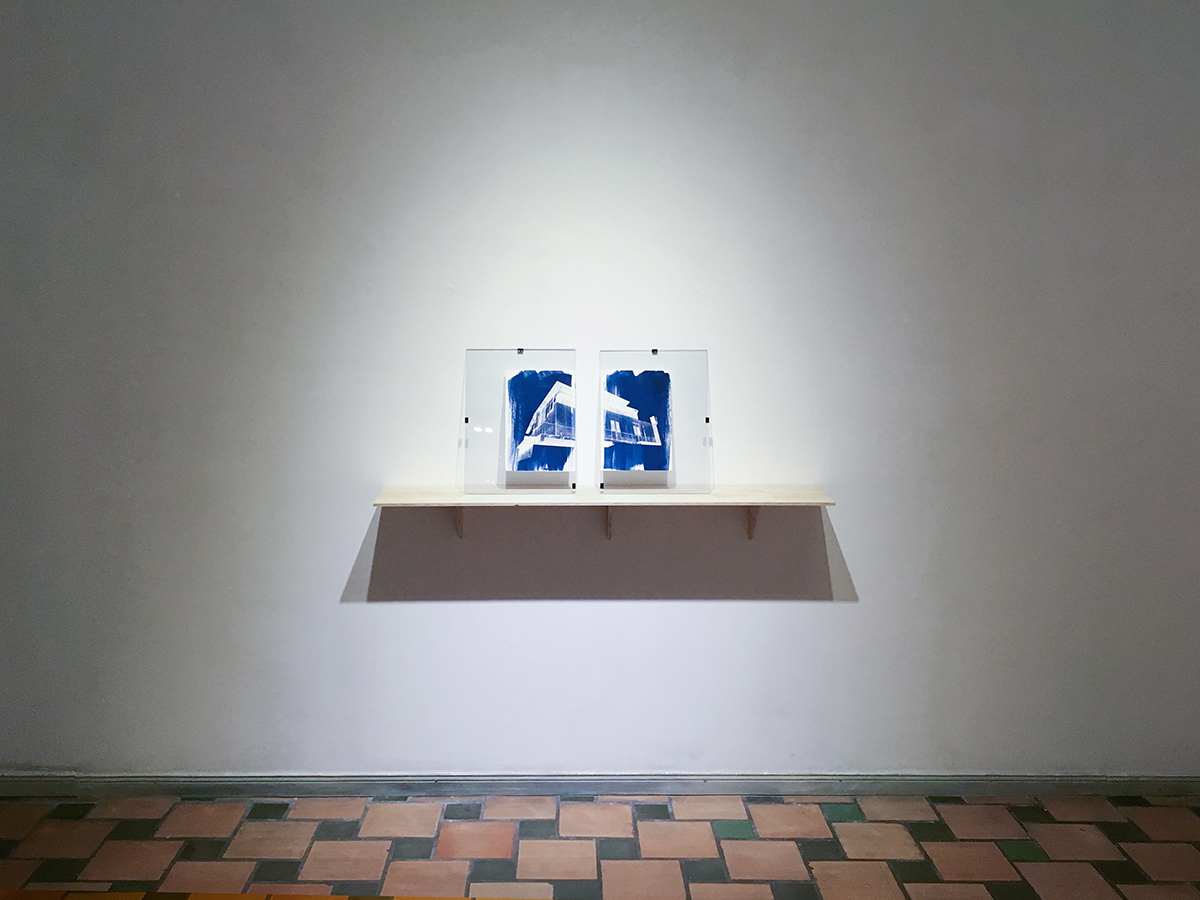
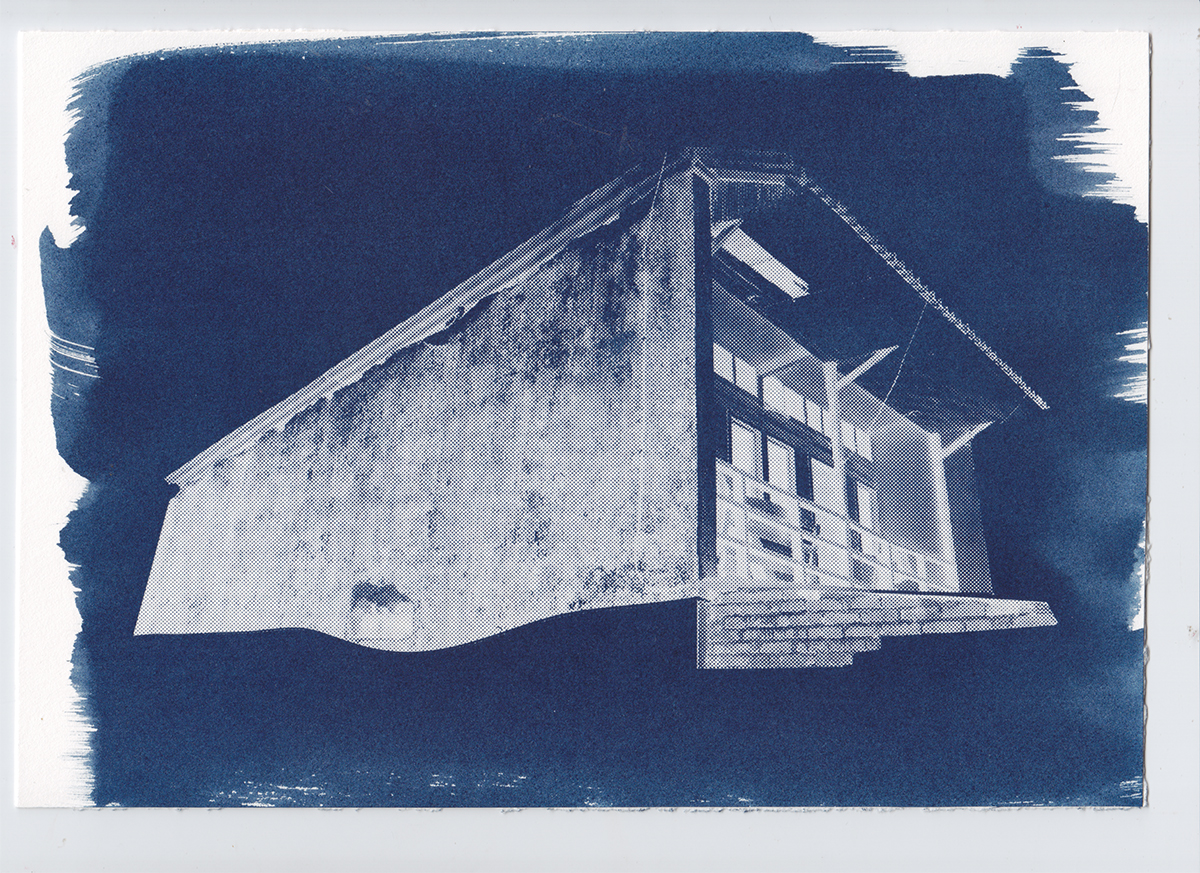


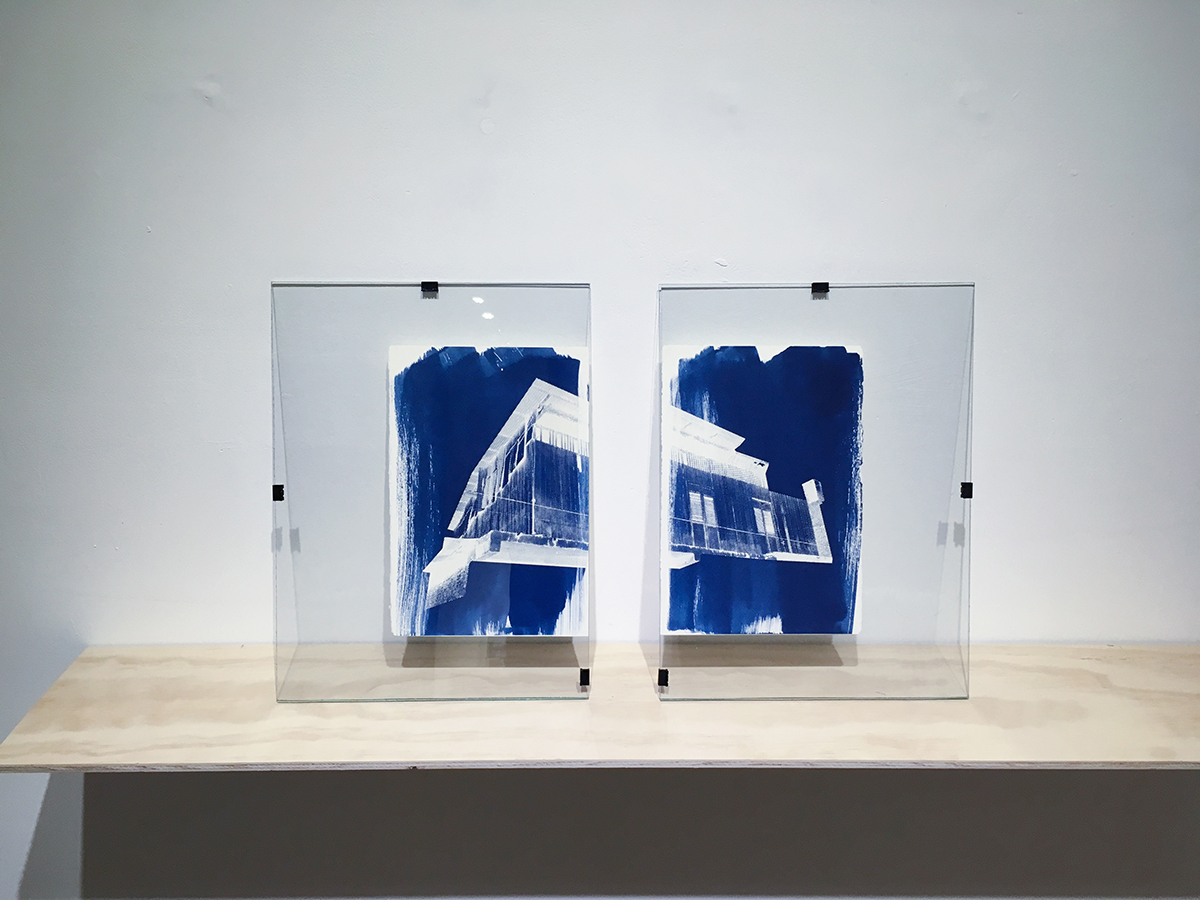
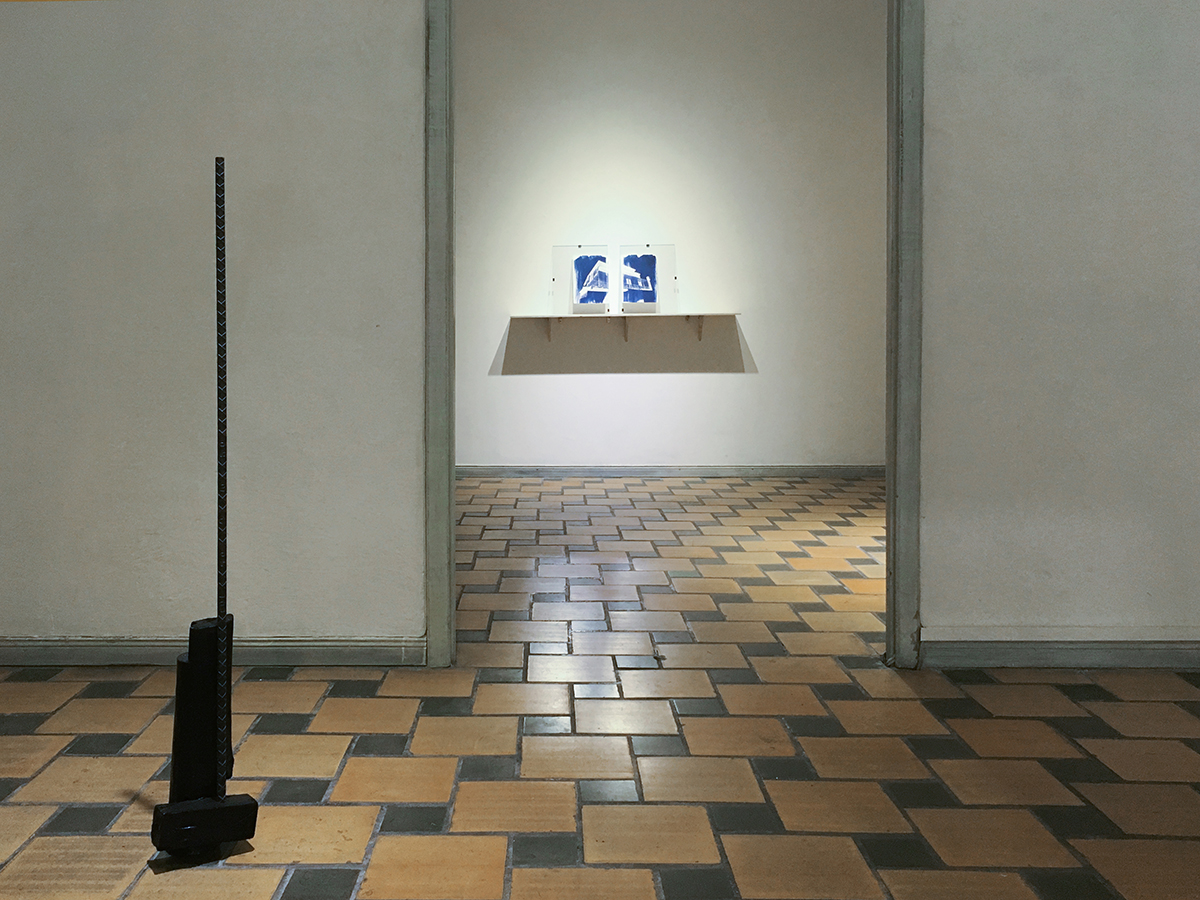


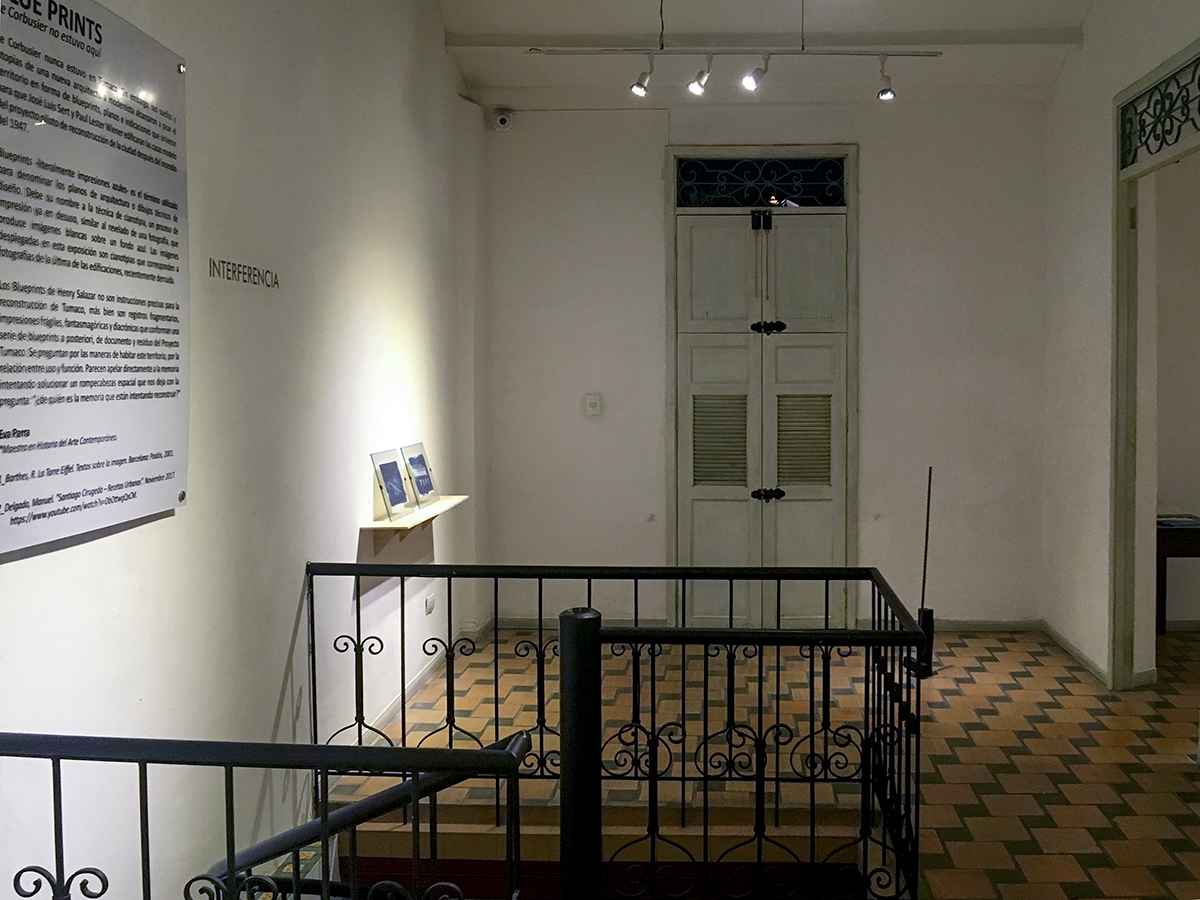
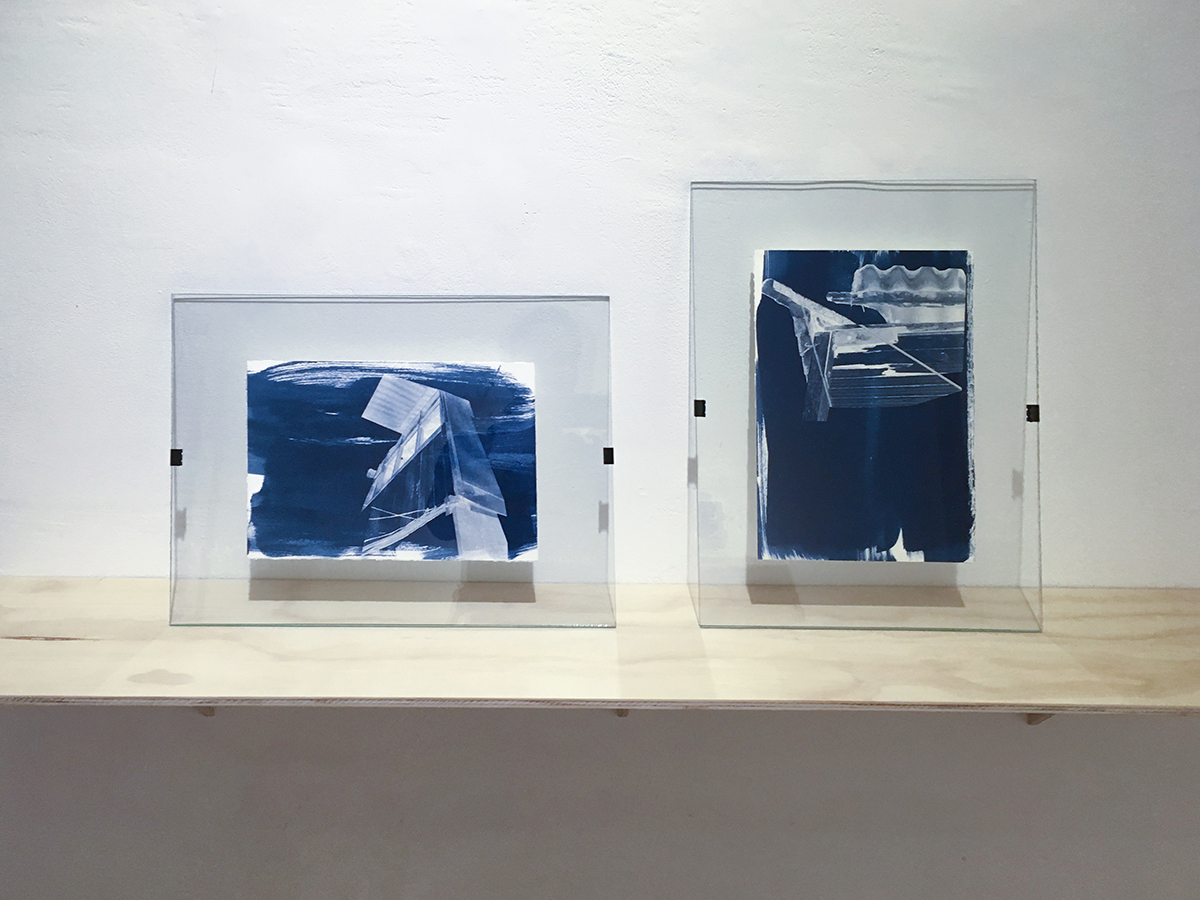
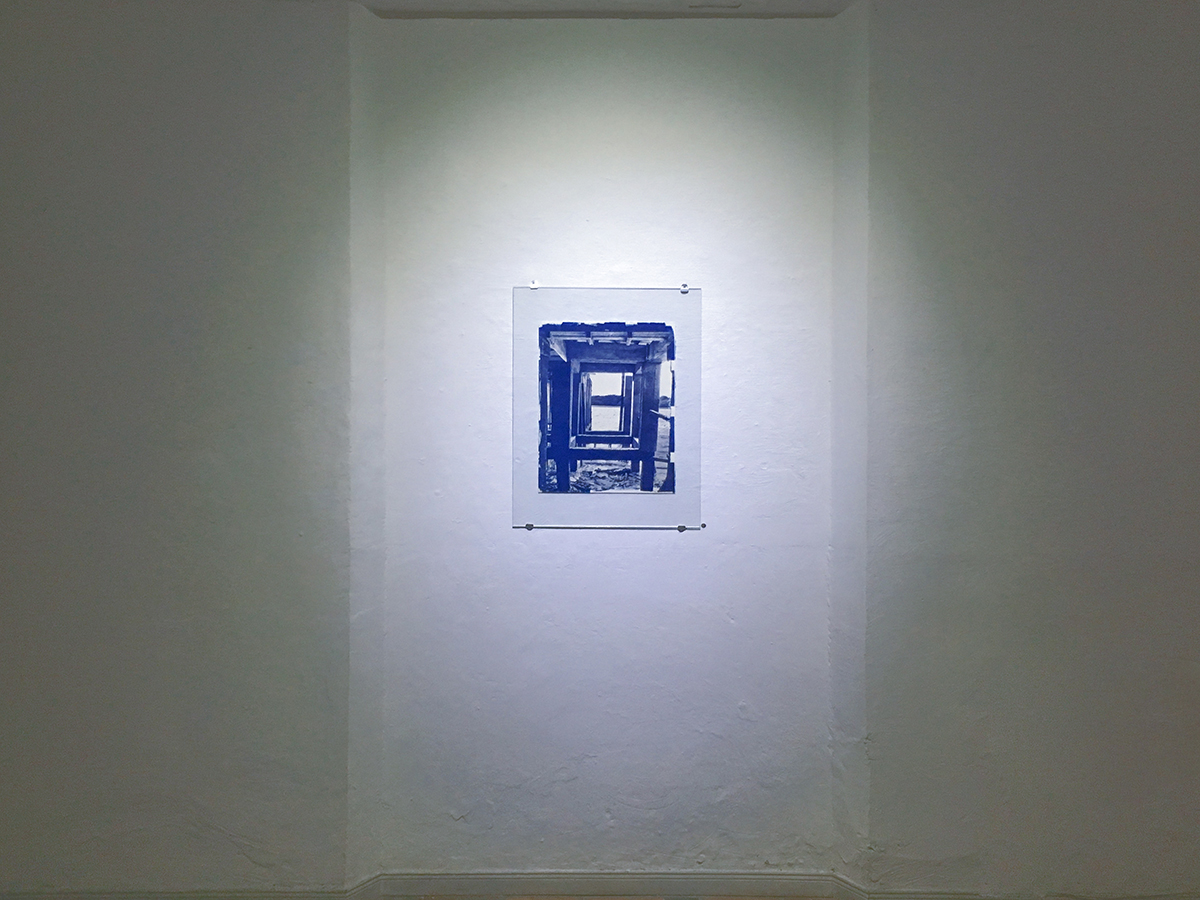
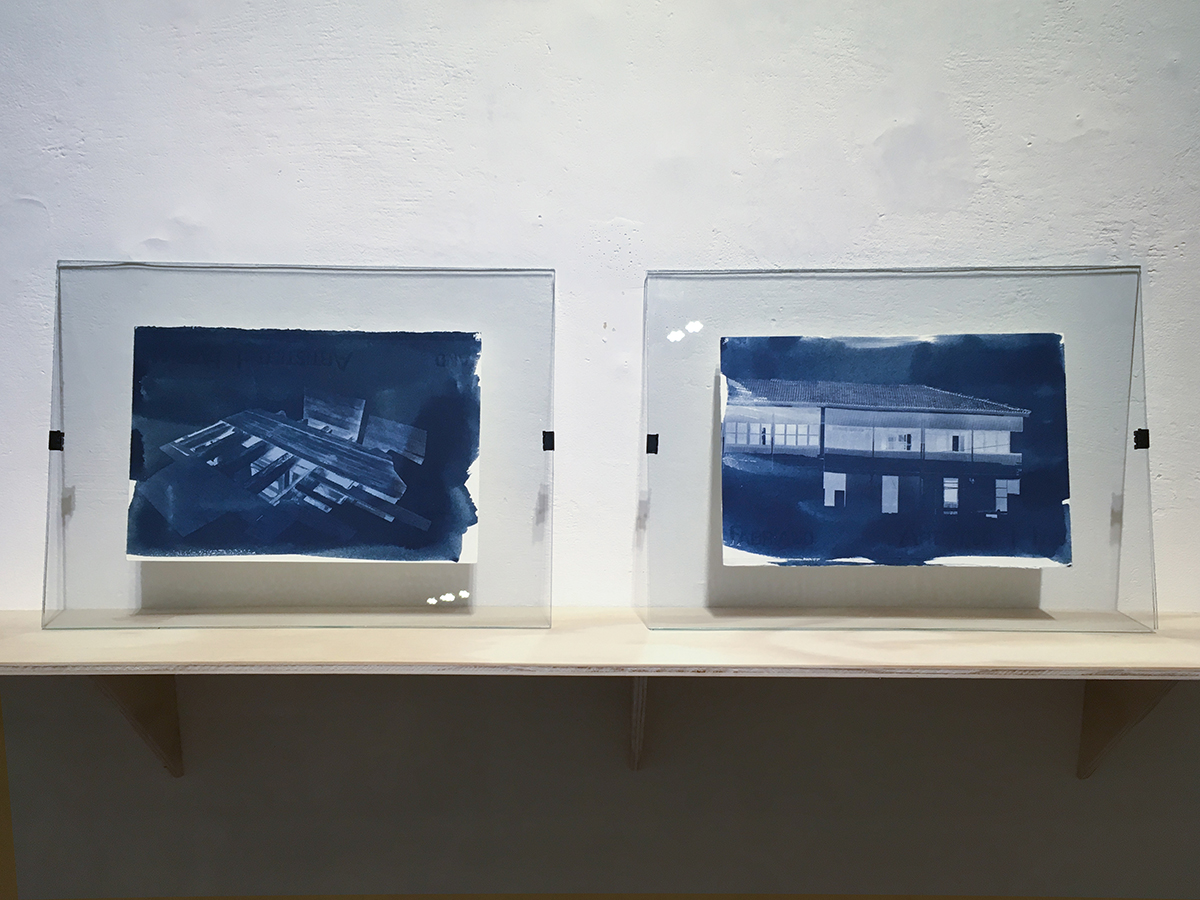
Le Corbusier nunca estuvo en Tumaco. Sin embargo, sus sueños y utopías de una nueva arquitectura modernista alcanzaron a pisar el territorio en forma de blueprints, planos e indicaciones que sirvieron para que José Luis Sert y Paul Lester Wiener edificaran las casas modelo del proyecto piloto de reconstrucción de la ciudad después del incendio del 1947.
Blueprints -literalmente impresiones azules- es el término utilizado para denominar los planos de arquitectura o dibujos técnicos de diseño. Debe su nombre a la técnica de cianotipia, un proceso de impresión ya en desuso, similar al revelado de una fotografía, que produce imágenes blancas sobre un fondo azul. Las imágenes desplegadas en esta exposición son cianotipias que corresponden a fotografías de la última de las edificaciones, recientemente derruida.
Los Blueprints de Henry Salazar no son instrucciones precisas para la reconstrucción de Tumaco, más bien son registros fragmentarios, impresiones frágiles, fantasmagóricas y diacrónicas que conforman una serie de blueprints a posteriori, de documento y residuo del Proyecto Tumaco. Se preguntan por las maneras de habitar este territorio, por la relación entre uso y función. Parecen apelar directamente a la memoria intentando solucionar un rompe- cabezas espacial que nos deja con la pregunta: “¿de quién es la memoria que están intentando reconstruir?”
1_Barthes, R. The Eiffel Tower. Texts on the image. Barcelona: Paidós, 2001.
2_Delgado, Manuel. «Santiago Cirugeda – Rece- tas Urbanas». November 2017. https://www.- youtube.com/watch?v=DbOttwgQxCM.
Texto: Eva Parra
*Maestra en historia del arte contemporáneo.
Museografía y diseño gráfico: Norman Suescun
Le Corbusier was never in Tumaco-Colombia. However, his dreams and utopias of a new modernist architecture managed to step on the territory in the form of blueprints, plans and indications that served for José Luis Sert and Paul Lester Wiener to build the model houses of the pilot project of reconstructions of the city after the fire of 1947.
Blueprints – literally blue prints – is the term used to designate architectural plans or technical design drawings. It owes its name to the cyanotype technique, a printing process already in disuse, similar to the development of a photograph, which produces white images on a blue background. The images displayed in this exhibition are cyanotypes that correspond to photographs of the last of the buildings, recently demolished.
Henry Salazar’s Blueprints are not precise instructions for the reconstruction of Tumaco, rather they are fragmentary records, fragile, phantasmagorical and diachronic impressions that make up a series of blueprints a posteriori, of document and residue of the Tumaco Project. They wonder about the ways of inhabiting this territory, about the relationship between use and function. They seem to appeal directly to memory trying to solve a spatial headbreaker that leaves us with the question: «whose memory are you trying to reconstruct?»
1_Barthes, R. The Eiffel Tower. Texts on the image. Barcelona: Paidós, 2001.
2_Delgado, Manuel. «Santiago Cirugeda – Rece- tas Urbanas». November 2017. https://www.- youtube.com/watch?v=DbOttwgQxCM.
Texto: Eva Parra
*Master in History of Contemporary Art.
Museography and graphic design: Norman Suescun
Kurosh Sadeghian, Norman Suescun, Cesar García, Sebastián Mejía
Des/ilusión
Septiembre 28 – noviembre 23 2019/Fundación espacio interferencia- Cali
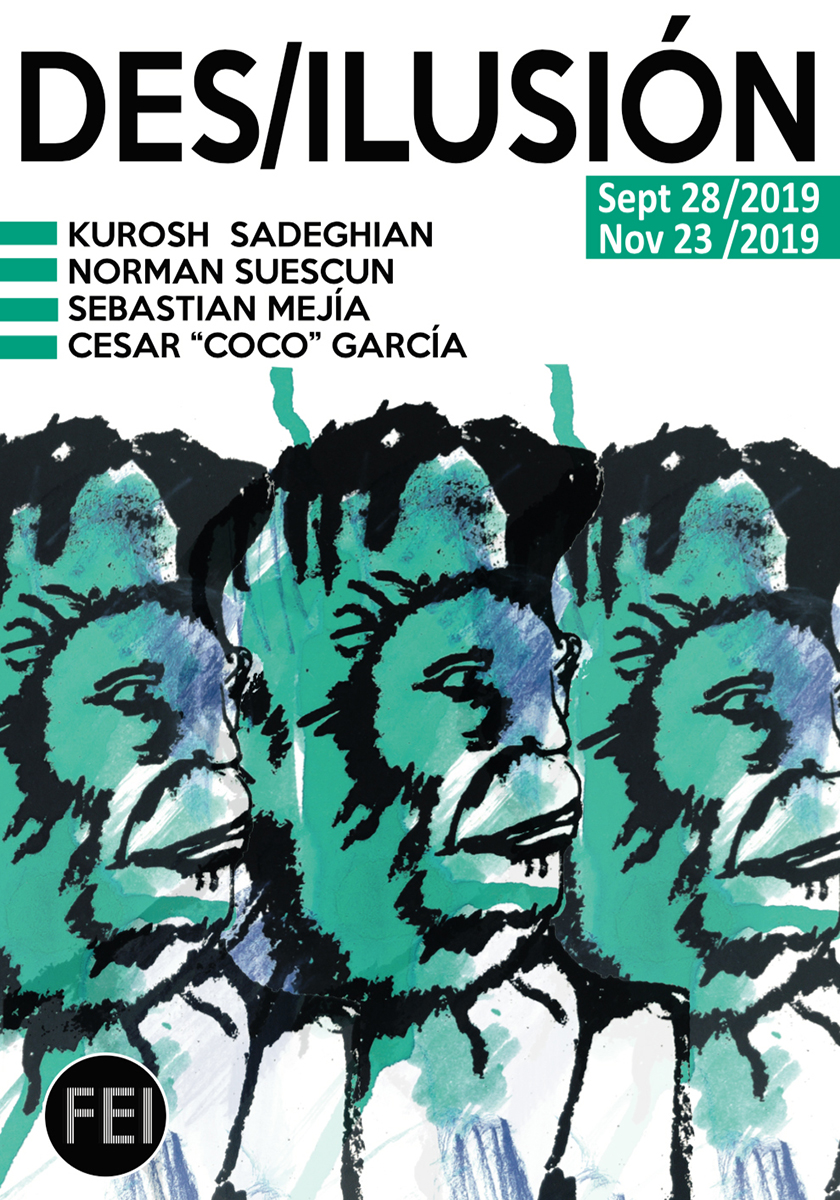







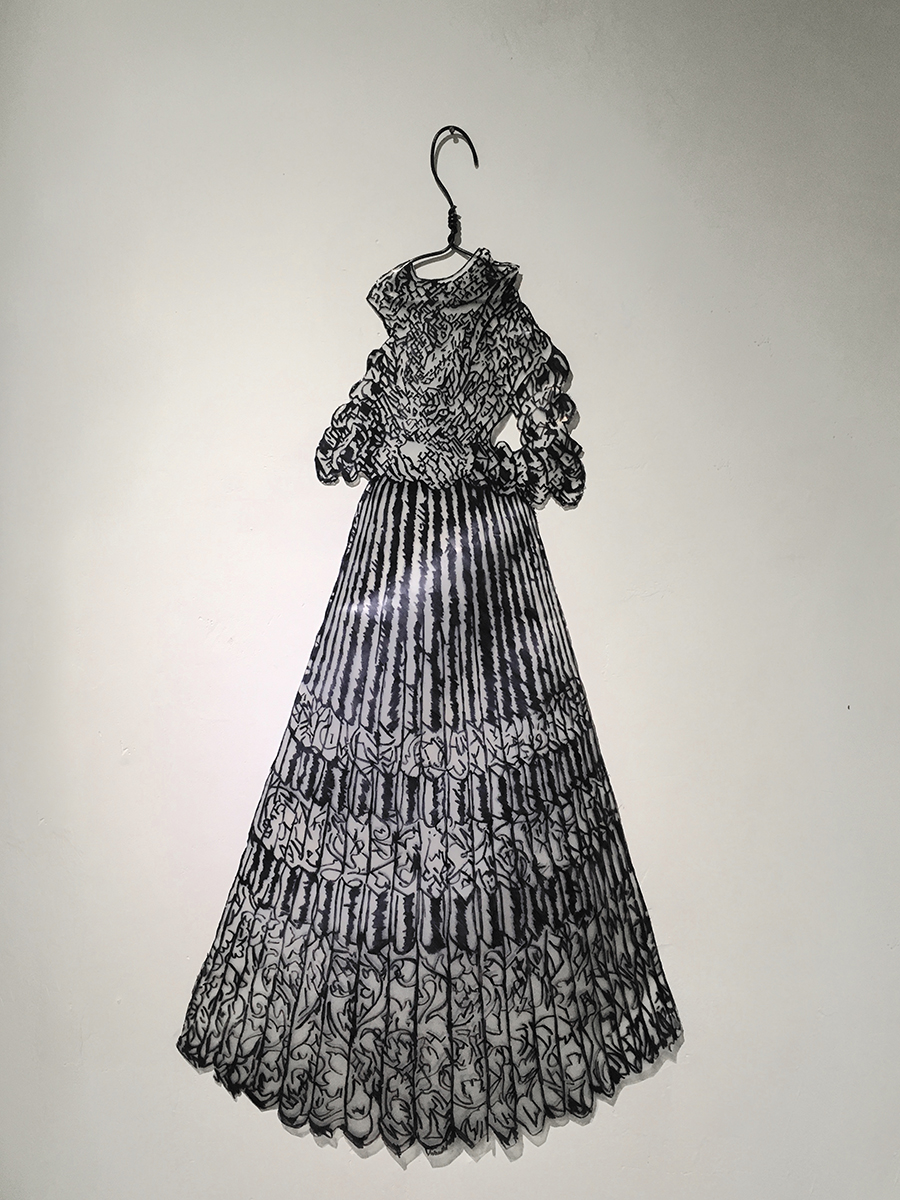


El título que propone esta exhibición constituye un juego de palabras que permiten desplegar dos aspectos significativos para esta muestra. La definición etimológica del término desilusión consta de la palabra ilusión que significa engaño y del prefijo des que indica inversión de la acción, en otras palabras: revierte el principio de la ilusión.
Es a través de la representación que la tradición de la pintura europea logra consolidar el arte como ilusión. El artista para copiar la realidad desarrolla estrategias visuales como profundidad de campo, escala de planos, encuadres compositivos, trompe l’oeil, perspectiva y otras técnicas, para darnos la sensación de la tridimensionalidad. Posteriormente, estos procesos son aprovechados por otros medios como la fotografía, cine, realidad virtual, realidad aumentada, entre otras, perfeccionando el canon de la ilusión.
En contraste a este precepto del realismo en la pintura aparecen posiciones que buscan restituir la dimensión bidimensional al plano pictórico, haciendo que la imagen representada no pretenda ningún tipo de artilugios, siempre en condición de planitud. Un ejemplo elocuente de esa inversión de la acción es el minimalismo, al no pretender un efecto tridimensional en la pintura.
Este contexto preliminar nos ayuda a comprender entonces los tempos en los que se mueven las propuestas artísticas de Kurosh Sadeghian, César García “Coco”, Sebastián Mejía y Norman Suescun en torno a la des/ilusión que son expresados a continuación
Curaduría: German García Orozco
Museografía y diseño gráfico: Norman Suescun
The title proposed by this exhibition is a play on words that allow two significant aspects to be displayed for this exhibition. The etymological definition of the term disillusionment consists of the word illusion which means trickery and the prefix des which indicates inversion of the action, in other words: it reverses the principle of illusion.
It is through representation that the tradition of European painting manages to consolidate art as an illusion. The artist to copy reality develops visual strategies such as depth of field, scale of planes, compositional framing, trompe l’oeil, perspective and other techniques, to give us the feeling of three-dimensionality. Subsequently, these processes are used by other means such as photography, cinema, virtual reality, augmented reality, among others, perfecting the canon of illusion.
In contrast to this precept of realism in painting, positions appear that seek to restore the two-dimensional dimension to the pictorial plane, making the image represented not pretend any type of gadgets, always in a condition of flatness. An eloquent example of this reversal of action is minimalism, not pretending a three-dimensional effect in the painting.
This preliminary context helps us to understand the tempos in which the artistic proposals of Kurosh Sadeghian, César García «Coco», Sebastián Mejía and Norman Suescun move around the des/illusion that are expressed below.
Curator: German García
Museography and graphic design: Norman Suescun
Margarita Ariza, Ima Barraza, Tania Beltrán, Florencia Buenaventura, Ana Isabel Diez, Rafael Dussan, Lorenza Cullet, Diana Fajardo, Verónica Giraldo, Isabel Guevara, Adriana Marmorek, Andrea Rey, Carolina Rodríguez, Manuel Bernardo Rojas y Norman Suescun
A mí me habita… a veces ese cuerpo
Abril 27 – junio 01 2019/ Fundación espacio interferencia- Cali









“Ya no es el cuerpo el que se libera de las cadenas, sino el hombre el que se libera de su cuerpo”
Christine Détrez
Ese cuerpo que habitamos es mucho más que la frontera que lo define, es mucho más que piel. Exponerlo o transformarlo en lienzo se convirtió en una constante durante la segunda mitad del siglo XX. El retorno al yo y particularmente, a ese narcisismo propio de una sociedad esclavizada de manera voluntaria, permitieron la libre exaltación del cuerpo.
El arte de estos dos últimos siglos aportó de manera significativa a la construcción social de esa corporalidad, que tenía la clara intención de transgredir la dimensión sagrada impuesta por una hipocresía burguesa que dominó los discursos morales sobre los cuerpos. La transgresión tomó muchas vías, no se trataba solo de exponer la belleza sino la fealdad, el dolor, la vejez, la muerte, la monstruosidad, loa obscenidad. La carne y los órganos se transformaron en materia prima de desacralización.
Esta exposición reflexiona sobre esos resquicios de la corporalidad. La piel, el sexo, el erotismo, los fluidos, la carne, la sangre, el esperma, son las diferentes aristas de un solo prisma. El cuerpo se presenta expuesto, escondido, mutilado, fragmentado. Los artistas hablan también de entrañas y cavidades. Ese cuerpo comienza su descubrimiento en el propio cuerpo-creador.
Curadora: Luz Adriana Hoyos (Magister en historia. Docente investigadora en temas de género, representación e historia de las mujeres en Colombia
Museografía y diseño gráfico: Norman Suescun
«It is no longer the body that is freed from the chains, but the man that is freed from his body»
Christine Détrez
That body we inhabit is much more than the border that defines it, it is much more than skin. Exposing it or transforming it into a canvas became a constant during the second half of the twentieth century. The return to the self and particularly, to that narcissism typical of a society enslaved voluntarily, allowed the free exaltation of the body.
The art of these last two centuries contributed significantly to the social construction of this corporeality, which had the clear intention of transgressing the sacred dimension imposed by a bourgeois hypocrisy that dominated moral discourses about bodies. The transgression took many avenues, it was not just about exposing beauty but ugliness, pain, old age, death, monstrosity, obscenity. Meat and organs were transformed into raw material for desacralization.
This exhibition reflects on these remnants of corporeality. Skin, sex, eroticism, fluids, flesh, blood, sperm, are the different edges of a single prism. The body is exposed, hidden, mutilated, fragmented. Artists also talk about entrails and cavities. That body begins its discovery in the creator-body itself.
Curator: Luz Adriana Hoyos (Master in history. Research professor on gender issues, representation and history of women in Colombia)
Museography and graphic design: Norman Suescun
Natalia Cajiao-Marcela Bellini-Pablo Chaco
Lugares Invisibles
Marzo 10 – abril 10 2017/Fundación Espacio Interferencia- Cali


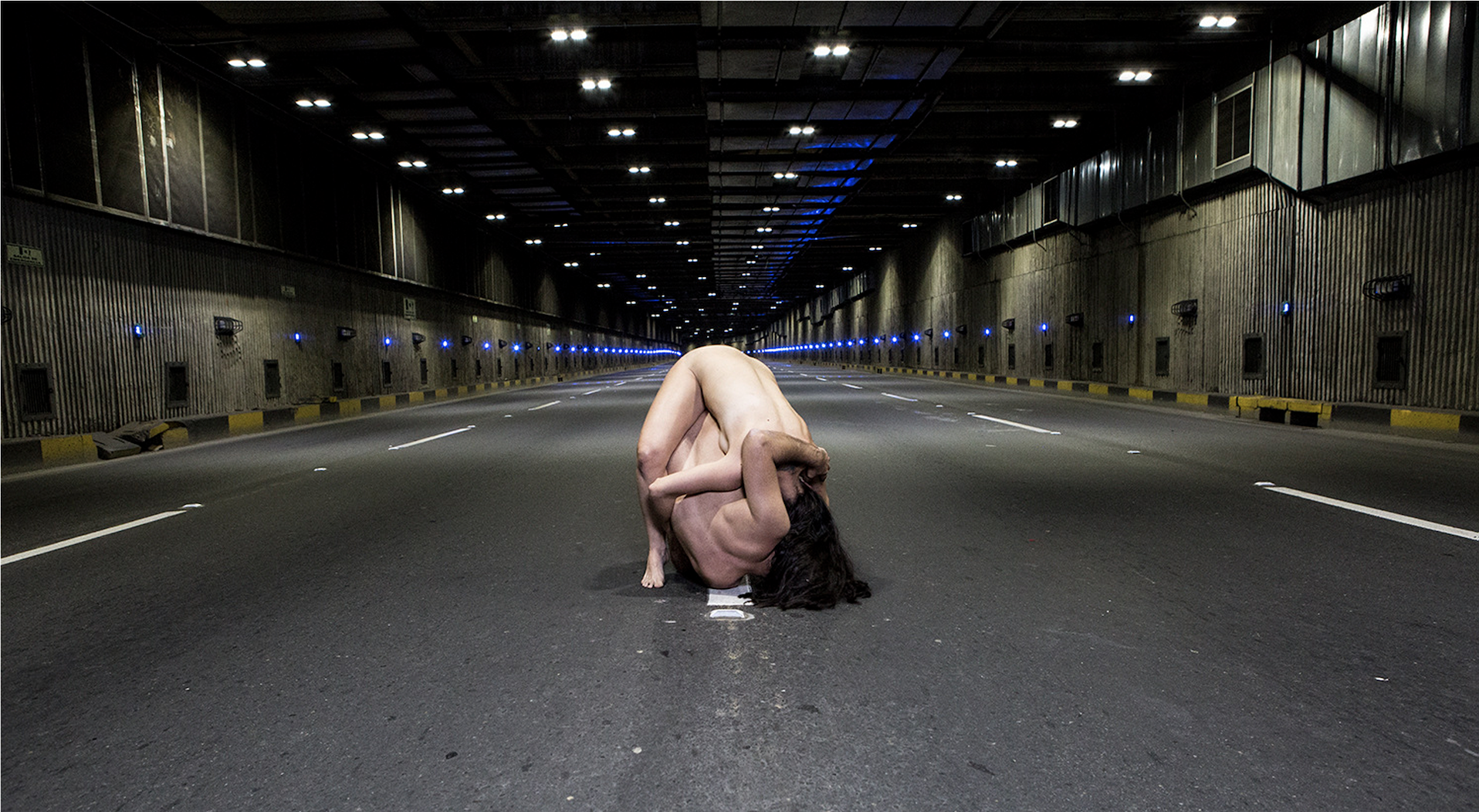




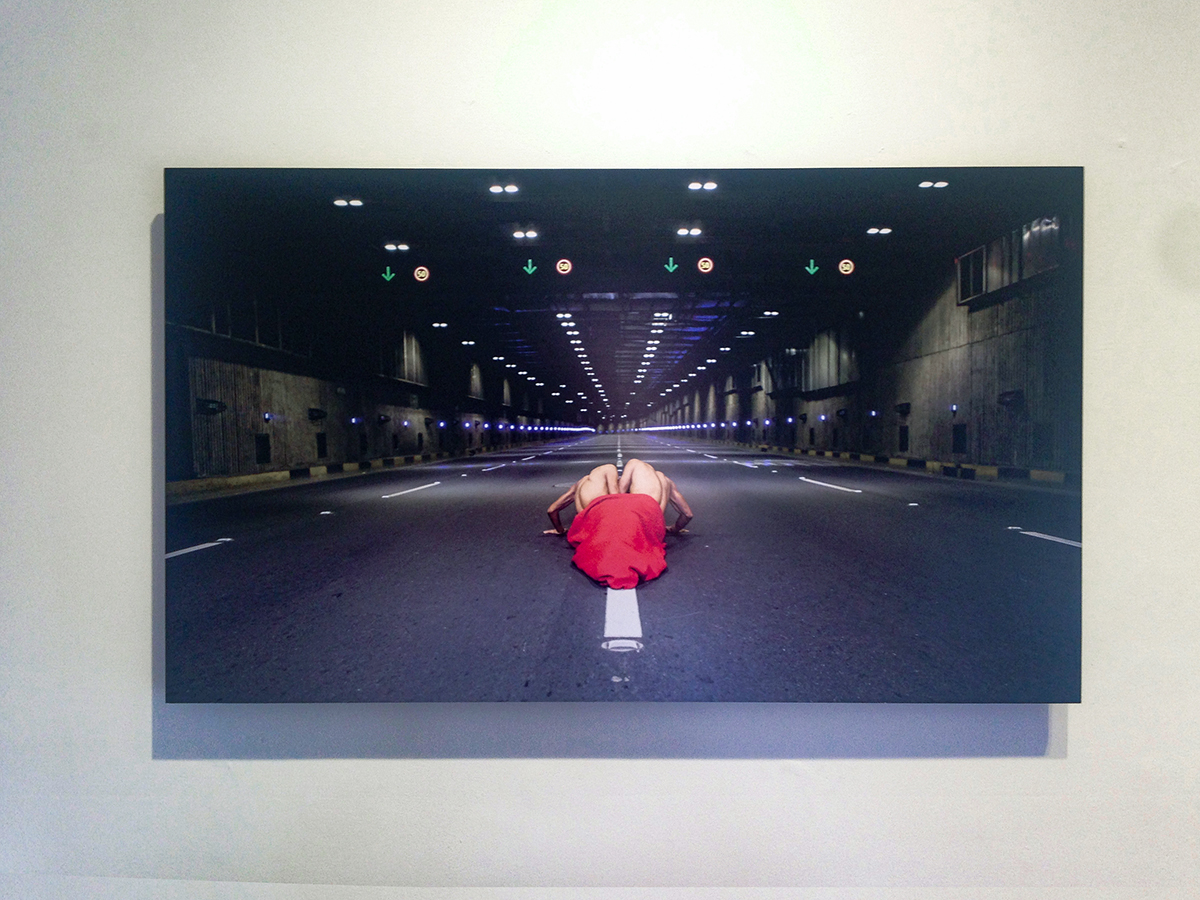

En esta exposición, el espacio funciona como un catalizador, una manifestación externa de las intrincadas incertidumbres donde el artista impregna lo que observa y lo plasma a través de su medio. Son espacios únicos donde el mundo tangible se presenta como una extensión de un universo intrínseco.
En la obra «Nadie en Italia» de Marcela Bellini, se expresa la ausencia a través de imágenes idílicas y nostálgicas, convirtiendo el paisaje en melancólico, enfatizado por el uso del blanco y negro y la falta de contraste.
La serie «Cali-Grafía» de Natalia Cajiao examina los diferentes signos gráficos grabados en las cortinas metálicas de los negocios en la ciudad de Cali. A través del uso del espacio público, se exponen las diferentes perspectivas y reflexiones de los habitantes de la ciudad.
La obra «Entrance» de Pablo Chaco y Lóbulo frontal interviene en lugares cotidianos para representar la relación consciente/inconsciente y cuerpo/objeto mediante imágenes estilizadas de cuidada construcción.
Curaduría: Norman Suescun Calero
Artista y Director Fundación Espacio Interferencia
In this exhibition the place serves as a catalyst for the external manifestation of the uncertain, where the artist impregnates what he observes and shapes it through the medium, creating unique spaces where the tangible world is presented as the extension of an intrinsic universe.
In the work Nobody in Italy, Marcela Bellini enunciates through idyllic and nostalgic images, the absence, turning the landscape melancholic, emphasized through the use of black and white and the lack of contrast.
Natalia Cajiao in her series Cali-Grafía examines the various graphic signs embodied in the metal curtains of the commercial premises of the city of Cali, presenting through the use of public space, the different points of view and reflections of the inhabitants of the city.
The work Entrance by Pablo Chaco and Frontal Lobe intervenes in everyday places to represent the relationship conscious/unconscious and body/object through stylized images of meticulous construction.
Curaduría: Norman Suescun Calero
Artista y Director Fundación Espacio Interferencia
Ernesto Ordoñez
Paraísos perdidos
Marzo 16- Mayo 16 2018 / Fundación espacio interferencia- Cali


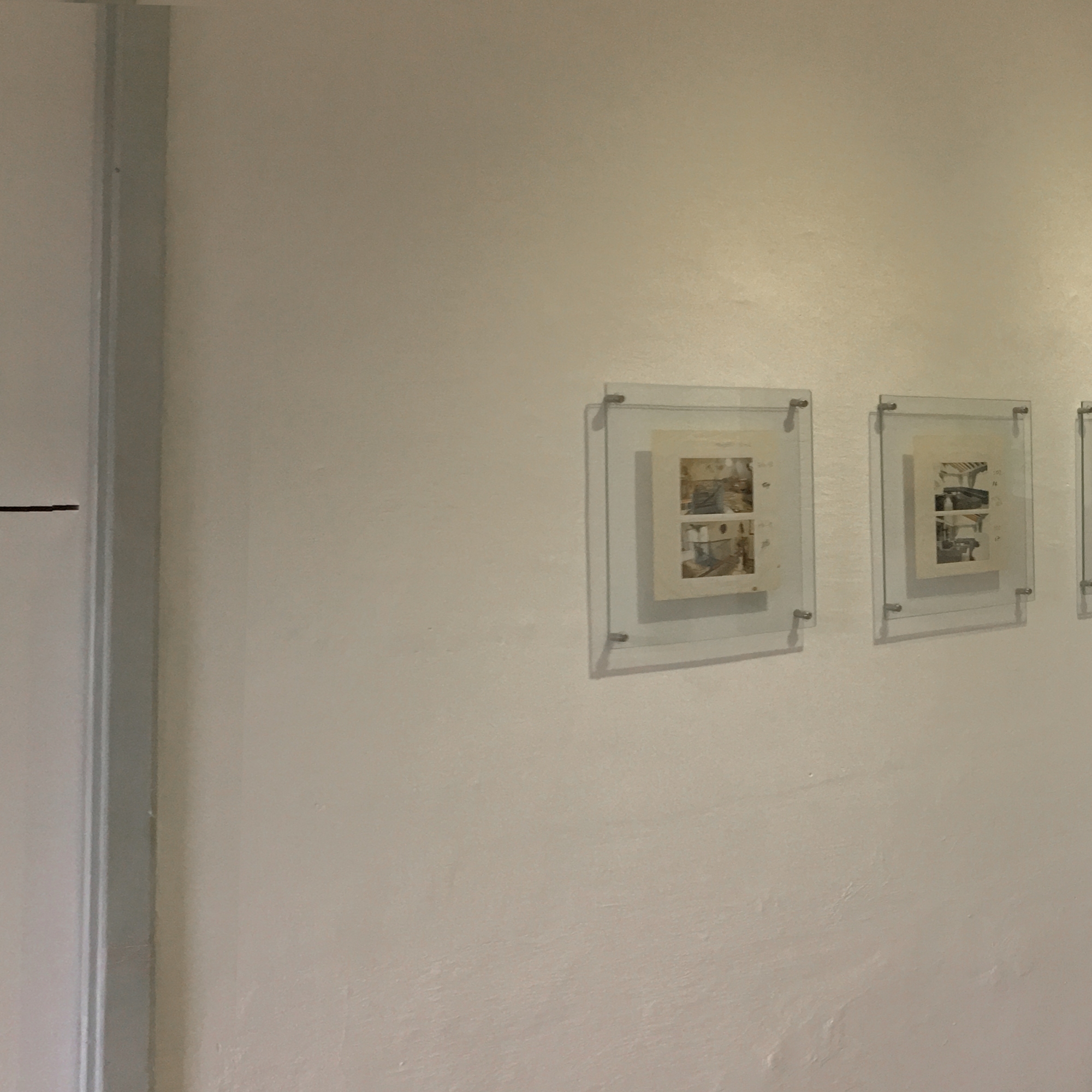
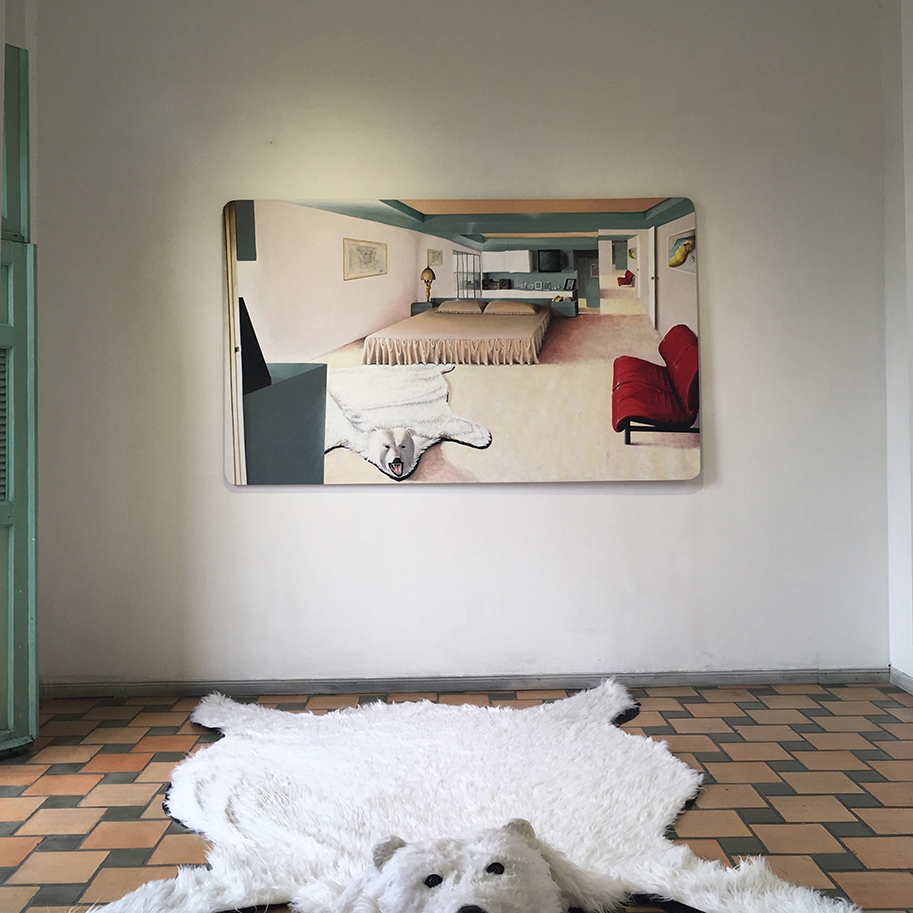

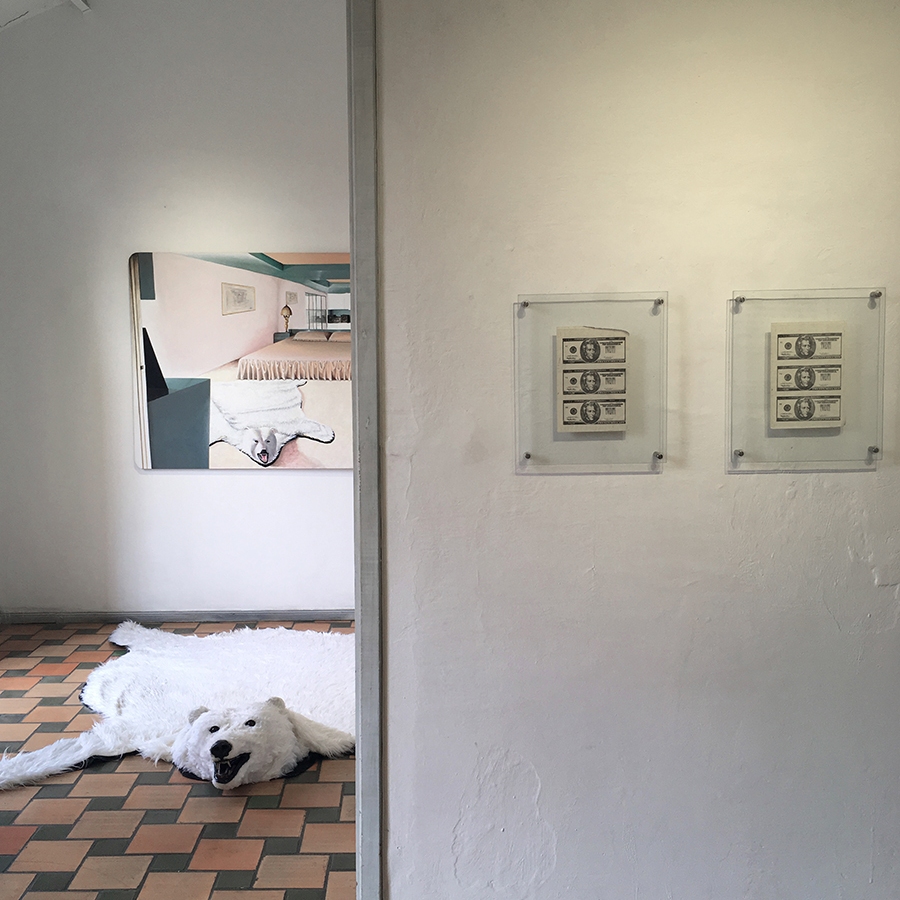
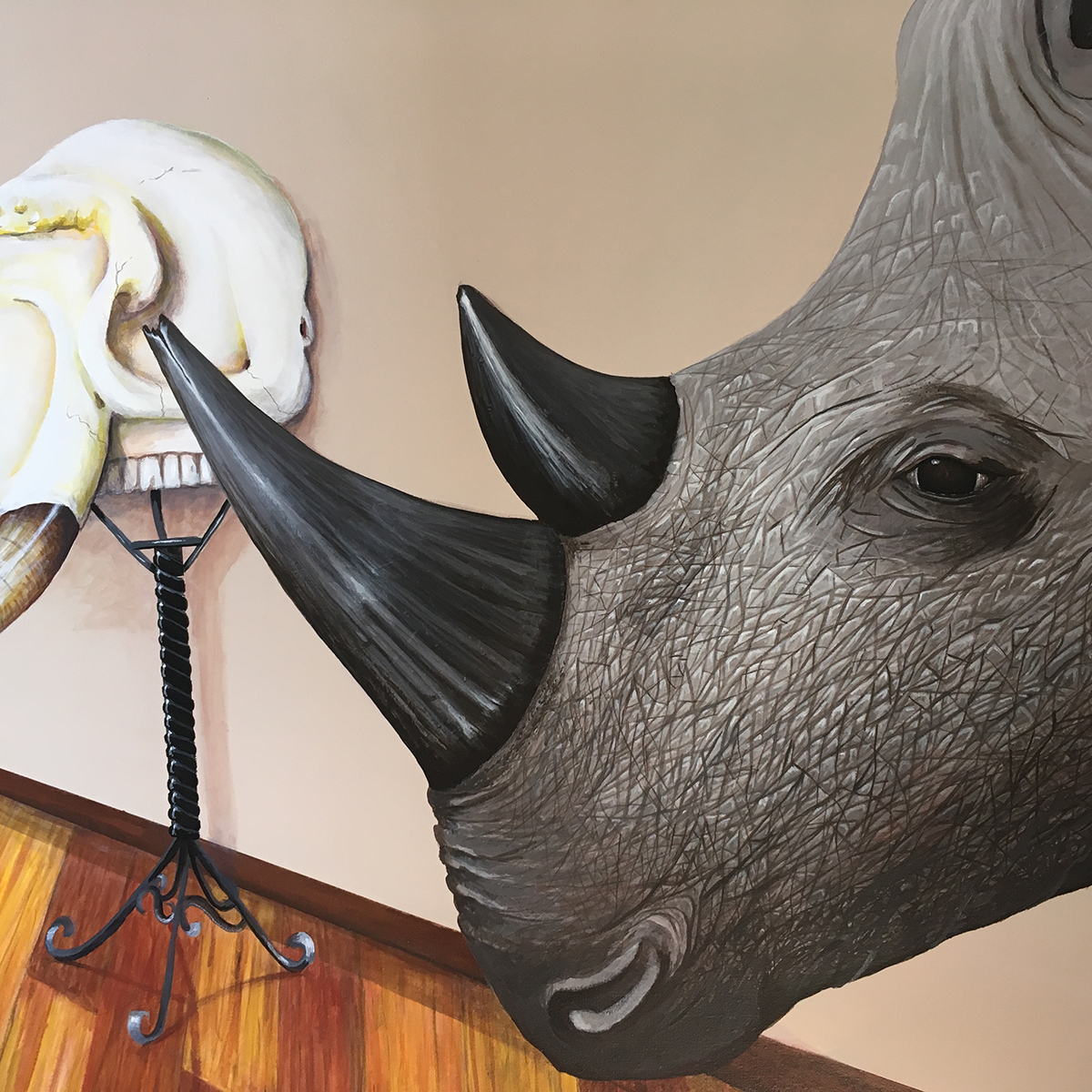
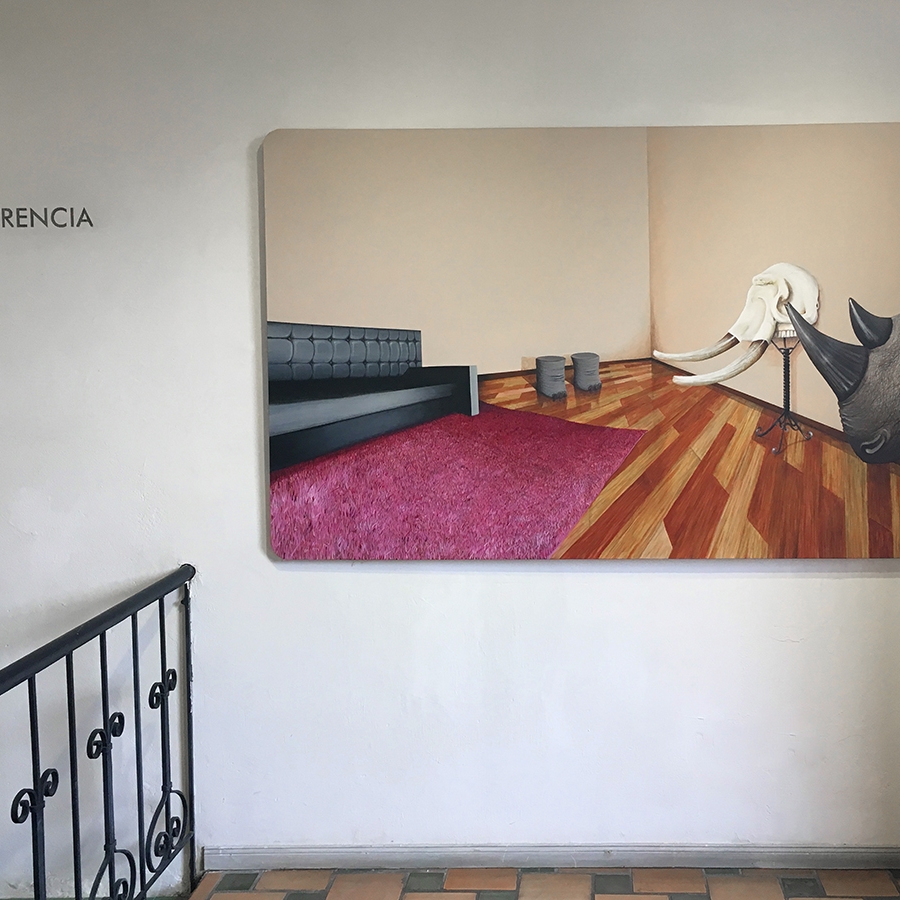
La tradición epistemológica de la representación tiene su origen en la pintura. No obstante, su hegemonía histórica se ve truncada ante los nuevos desafíos y paradigmas que plantea la invención de la fotografía. Esta logra establecerse como medio eficaz de veracidad. Con el paso del tiempo, este contrapunto parece resolverse en tanto que la fotografía alcanza su reconocimiento a través de las prácticas, usos y legitimación como medio expresivo en el ámbito artístico.
Ernesto Ordóñez, artista caleño, apuesta a crear diálogos entre estos dos medios. Por un lado, realiza una investigación monográfica sobre el “mundo de la mafia” en la ciudad de Cali durante el año 2003. Registra fotográficamente los espacios y objetos que dan cuenta de la estética de un período y gusto narco. Por otra, utiliza las fotos como memoria eidética para plasmarla a través de la pintura. Esta actitud, pone de relieve la tensión original sobre el atributo de verdad que, en otro momento, era condición inexpugnable de la pintura que se desplaza hacia la fotografía. Esta observación, sin embargo, nos ayuda a comprender que el debate está superado y, por el contrario, lo que emplaza Paraísos Perdidos es una doble articulación, no en el sentido de lo que define un medio en sí, sino una cualidad expandida de cada uno de sus medios, es decir, lo que trata de indagar es qué hay de un medio en otro. Expresado de manera diferente, interroga qué hay de fotográfico en lo pictórico y qué hay de pictórico en lo fotográfico (Bellour, 2009).
Texto: Germán García Orozco
Concepto curatorial: Norman Suescun
The epistemological tradition of representation has its origin in painting. However, its historical hegemony is truncated by the new challenges and paradigms posed by the invention of photography. This manages to establish itself as an effective means of veracity. With the passage of time, this counterpoint seems to be resolved as photography reaches its recognition through practices, uses and legitimation as an expressive medium in the artistic field.
Ernesto Ordóñez, Cali artist, bets on creating dialogues between these two media. On the one hand, he carried out a monographic investigation on the «world of the mafia» in the city of Cali during 2003. He photographically records the spaces and objects that account for the aesthetics of a narco period and taste. On the other hand, he uses photos as eidetic memory to capture it through painting. This attitude highlights the original tension on the attribute of truth that, at another time, was an impregnable condition of painting that moves towards photography. This observation, however, helps us to understand that the debate is overcome and, on the contrary, what Paradises Lost places is a double articulation, not in the sense of what defines a medium itself, but an expanded quality of each of its media, that is, what it tries to investigate is what is from one medium to another. Expressed differently, it interrogates what is photographic in the pictorial and what is pictorial in the photographic (Bellour, 2009).
Text: Germán García Orozco
Curatorial concept: Norman Suescun
Mónika Herrán
Retratos Particulares
Junio 02 – agosto 05 2017/Fundación espacio interferencia- Cali


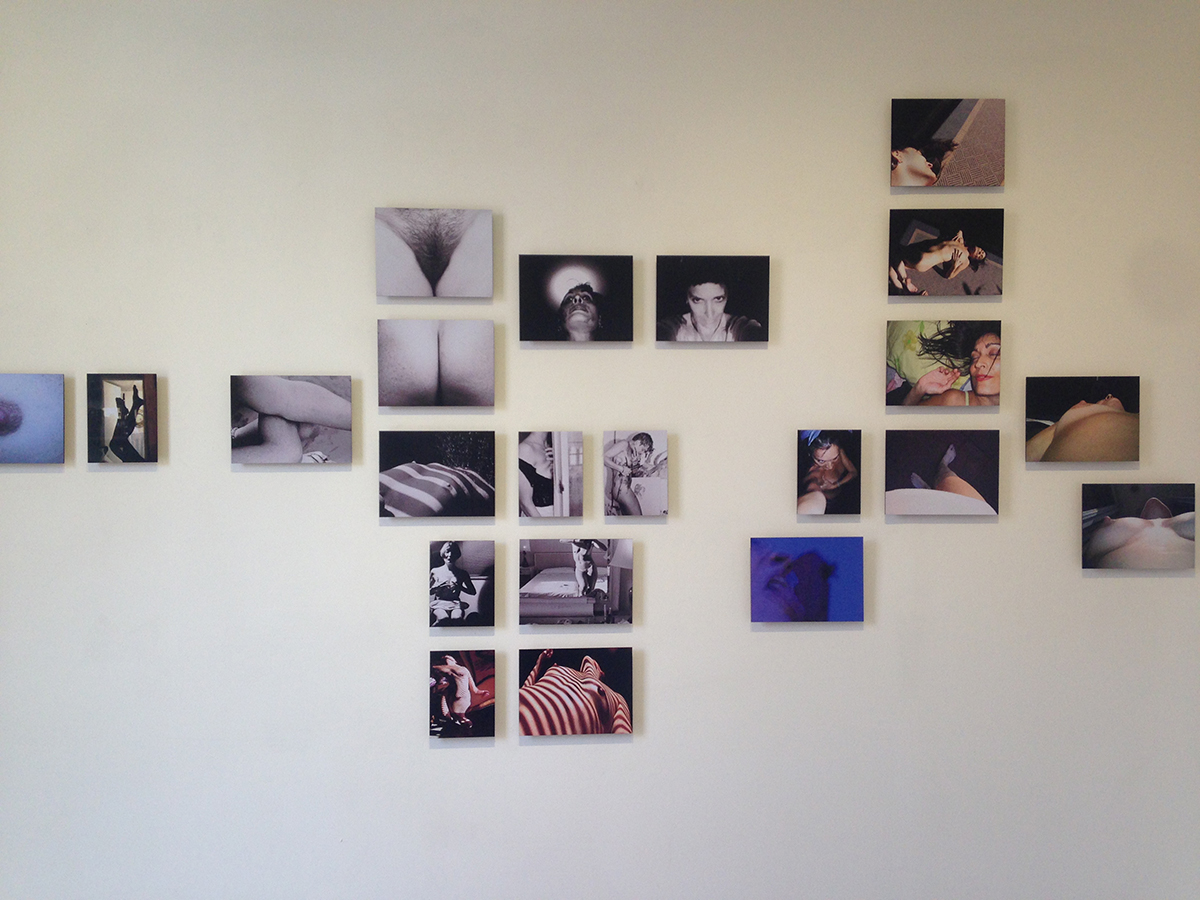





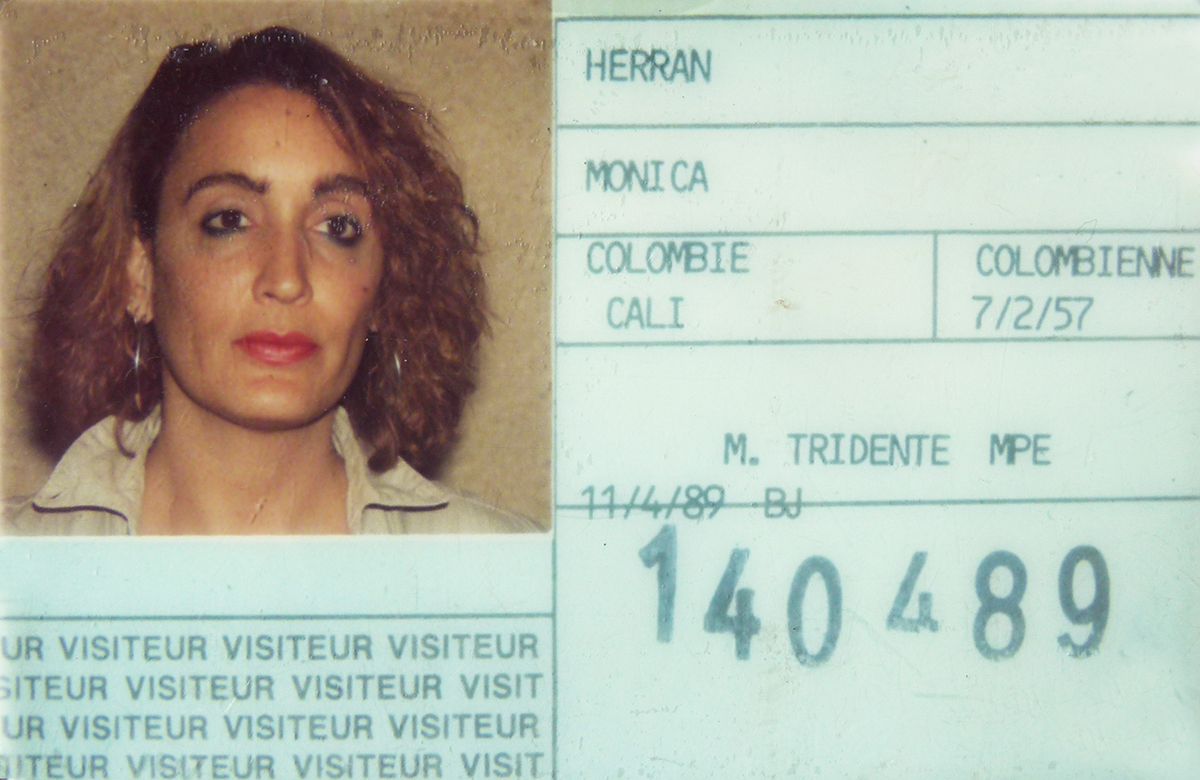
En la exposición «Retratos Particulares» de Monika Herrán, la cámara fotográfica es utilizada como un simple dispositivo de captura de lo cotidiano, donde la contemplación y el análisis de la luz como principio de observación se combina con los diferentes gestos, acciones y objetos, resultando en pequeñas puestas en escena domesticas que alteran el orden convencional.
Esta serie de imágenes, donde la mayoría son autorretratos se ha llevado a cabo a lo largo de 35 años, creando así una recopilación visual única, donde se confronta al espectador sumergiéndolo en un mundo íntimo, onírico e incierto.
De igual manera, Herrán al descubrir el velo que separa lo público de lo privado, hace referencia a la identidad, cuestionándonos acerca de lo aparente y lo simulado en nuestra condición como individuos sociales.
Curaduría: Norman Suescun Calero
Artista y Director Fundación Espacio Interferencia
In the exhibition «Particular Portraits» by Monika Herrán, the camera is used as a simple device to capture the everyday. The contemplation and analysis of light as a principle of observation is combined with different gestures, actions, and objects, resulting in small domestic staged scenes that alter conventional order.
This series of images where most are self-portraits has been carried out over 35 years, thus creating a unique visual compilation where the viewer is confronted immersing him in an intimate, dreamlike and uncertain world.
In the same way, Herrán when discovering the veil that separates the public from the private refers to identity, questioning us about the apparent and the simulated in our condition as social individuals.
Curaduría: Norman Suescun Calero
Artista y Director Fundación Espacio Interferencia

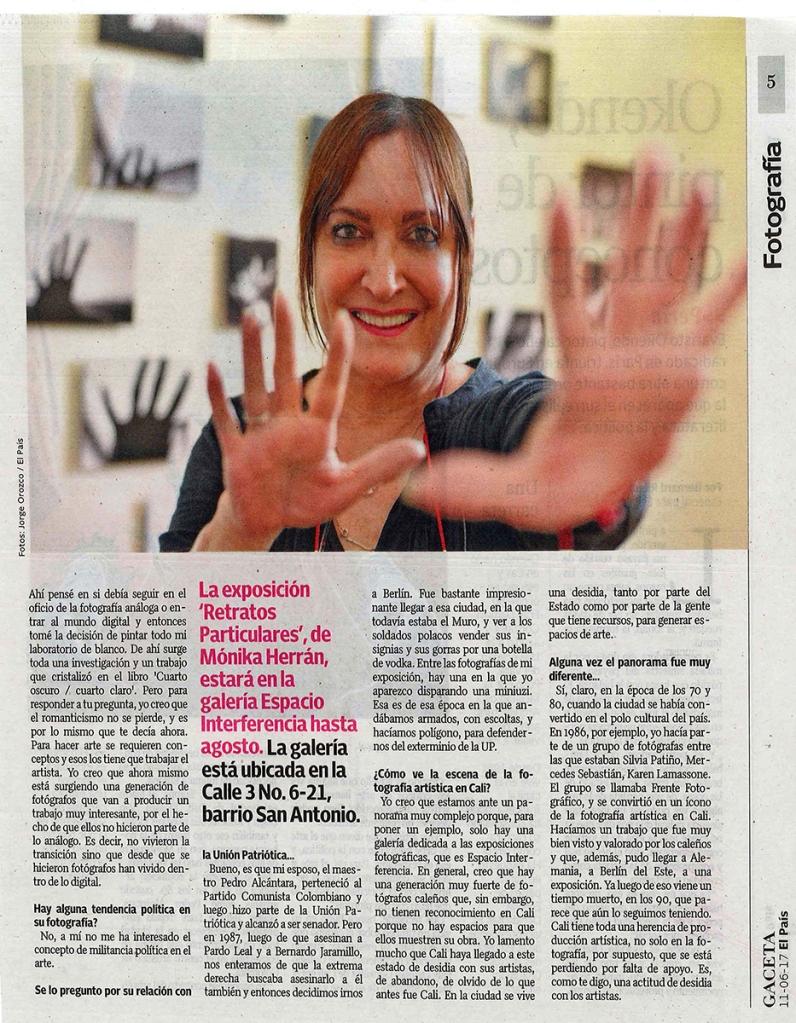
Frederic Chastro
Oskar Barnak meets Kazimir Malévich + Algorítmos
Octubre 07 – diciembre 07 2016/ Fundación espacio interferencia- Cali



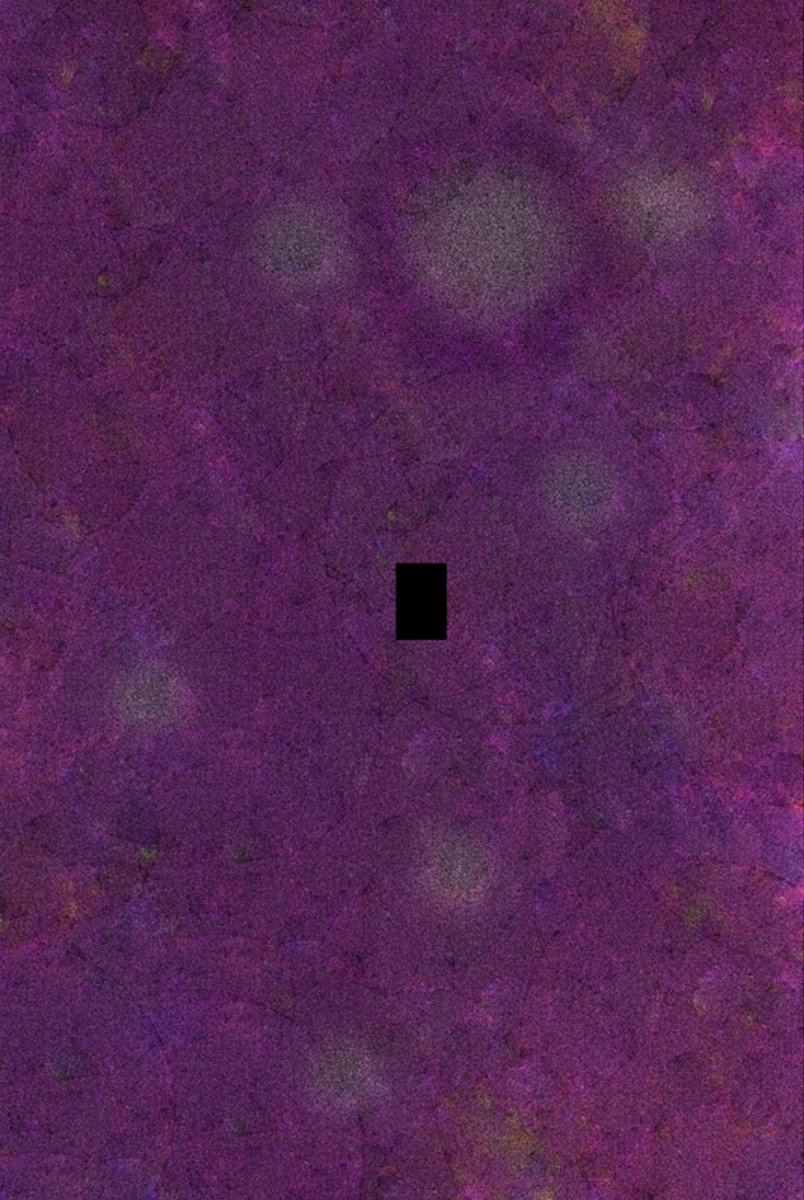
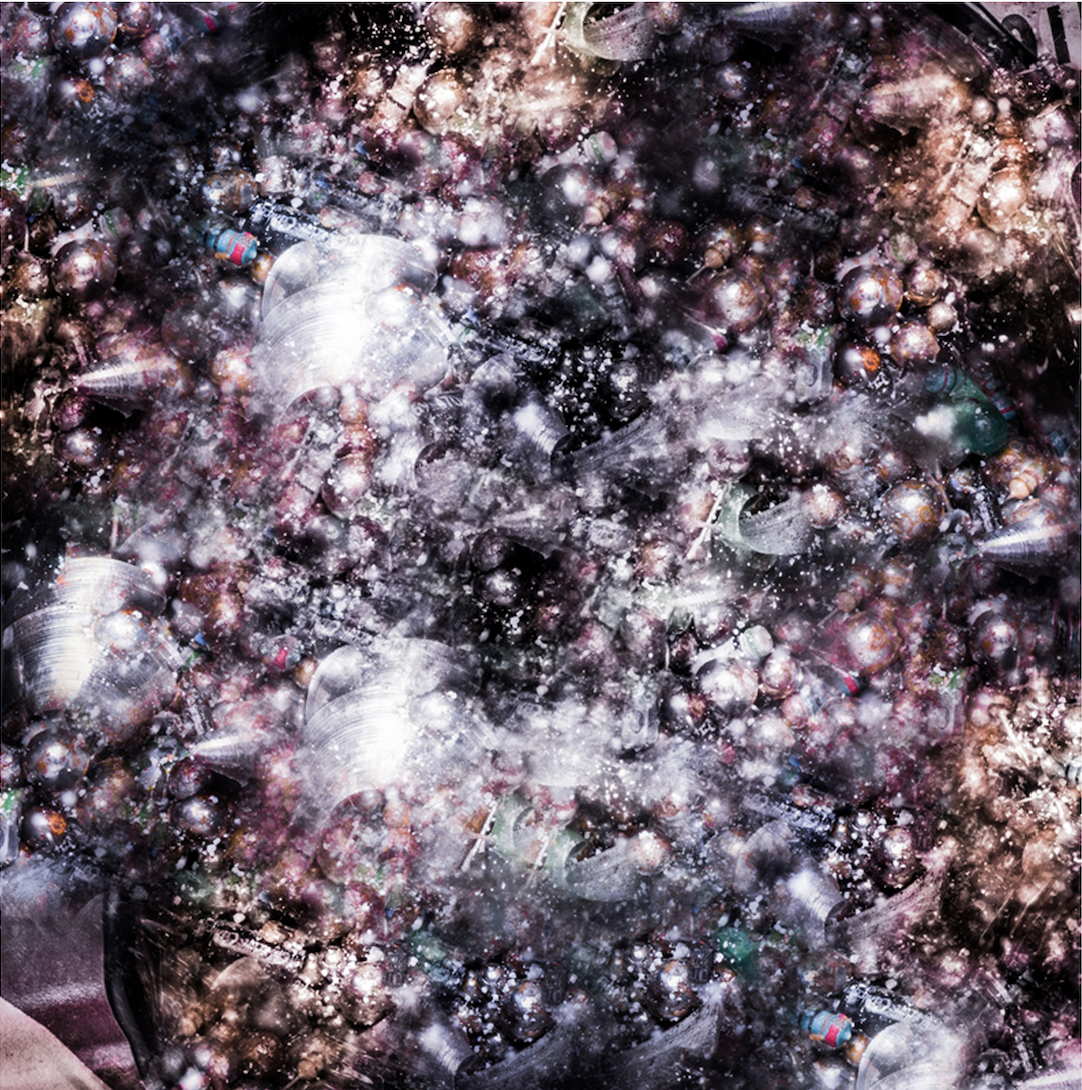
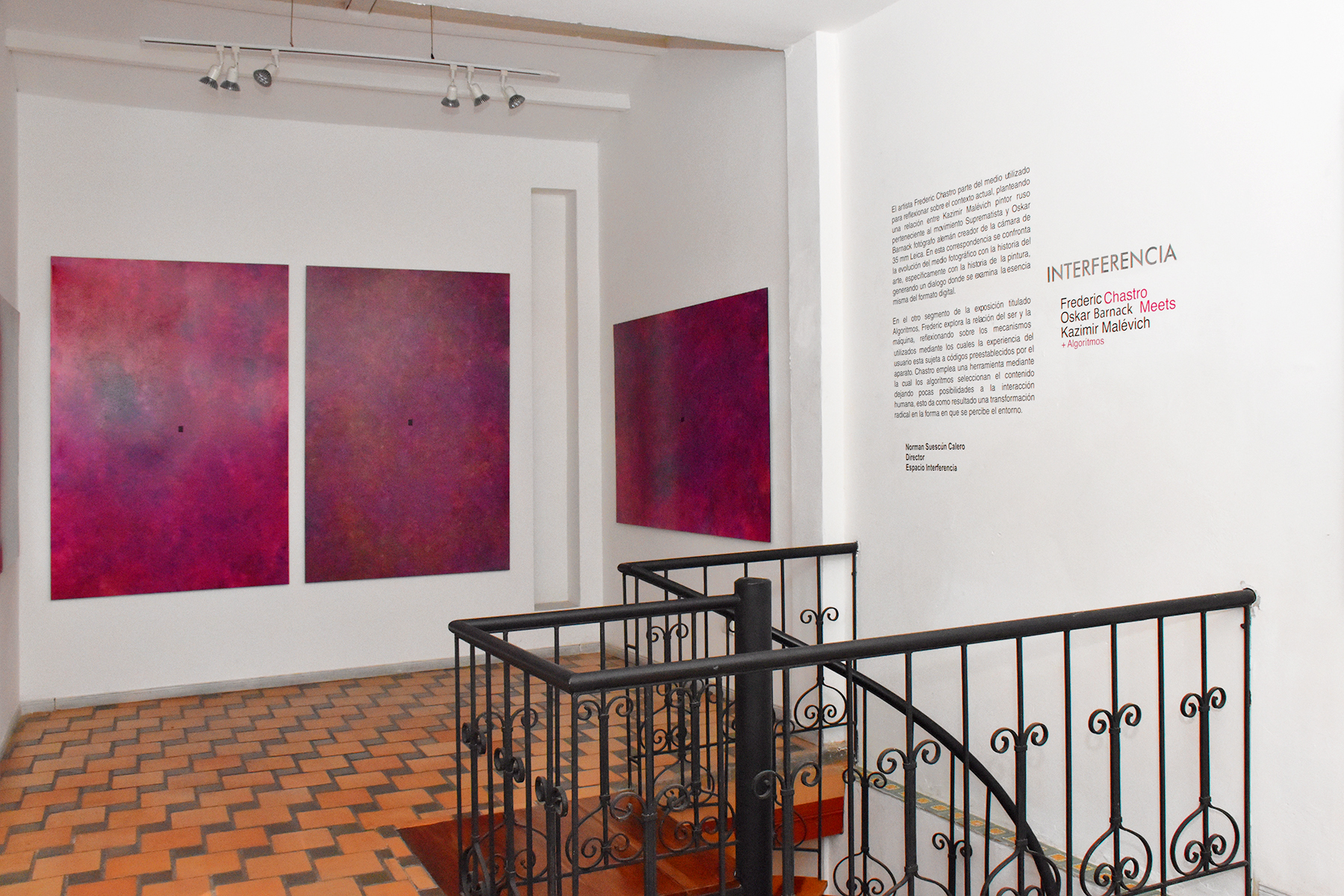

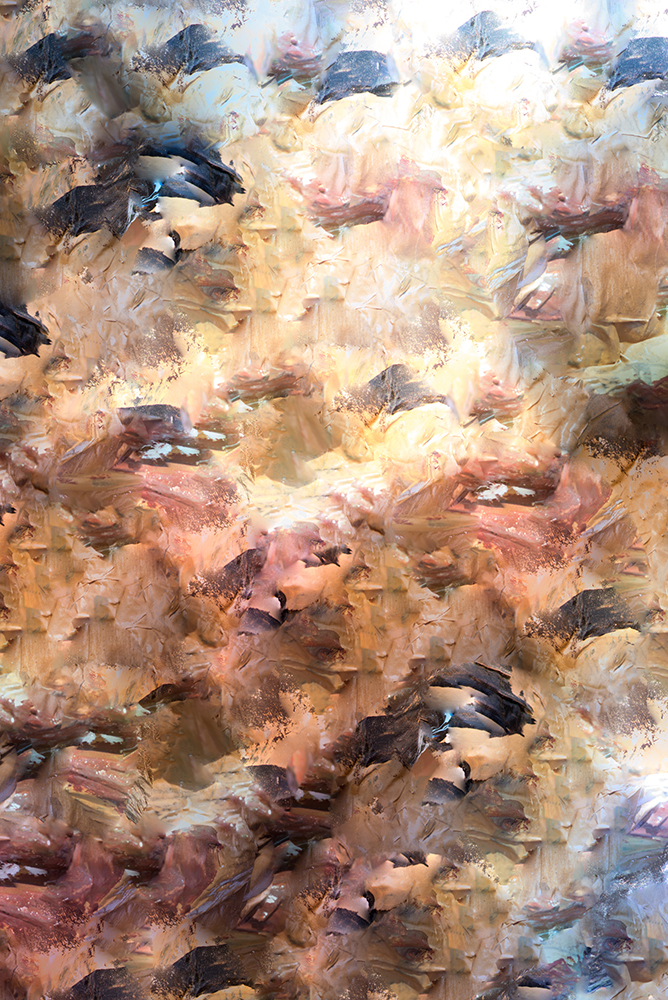
El artista Frederic Chastro parte del medio utilizado para reflexionar sobre el contexto actual, planteando una relación entre Kazimir Malevich pintor ruso y Oskar Barnack fotógrafo alemán creador de la cámara de 35 mm Leica. En esta correspondencia se confronta la evolución del medio fotográfico con la historia del arte, específicamente con la historia de la pintura, generando un dialogo donde se examina la esencia misma del formato digital.
En el otro segmento de la exposición titulado algoritmos, Frederic explora la relación del ser y la máquina, reflexionando sobre los mecanismos utilizados mediante los cuales la experiencia del usuario está sujeta a los códigos preestablecidos por el aparato. Chastro emplea una herramienta mediante la cual los algoritmos seleccionan el contenido dejando pocas posibilidades a la interacción humana, esto da como resultado una transformación radical en la forma en que se percibe el entorno.
Curaduría: Norman Suescun Calero
Artista y Director Fundación Espacio Interferencia
The artist Frederic Chastro starts from the medium used to reflect on the current context, proposing a relationship between Kazimir Malevich Russian painter and Oskar Barnack German photographer creator of the Leica 35 mm camera. In this correspondence the evolution of the photographic medium is confronted with the history of art, specifically with the history of painting, generating a dialogue where the very essence of the digital format is examined.
In the other segment of the exhibition entitled algorithms, Frederic explores the relationship of being and machine, reflecting on the mechanisms used by which the user experience is subject to the codes pre-established by the apparatus. Chastro employs a tool whereby algorithms select content leaving little chance for human interaction, resulting in a radical transformation in the way the environment is perceived.
Curaduría: Norman Suescun Calero
Artista y Director Fundación Espacio Interferencia
Juan Cristóbal Cobo
Transeúnte
Agosto 18 – octubre 18 2017/ Fundación espacio interferencia- Cali
.


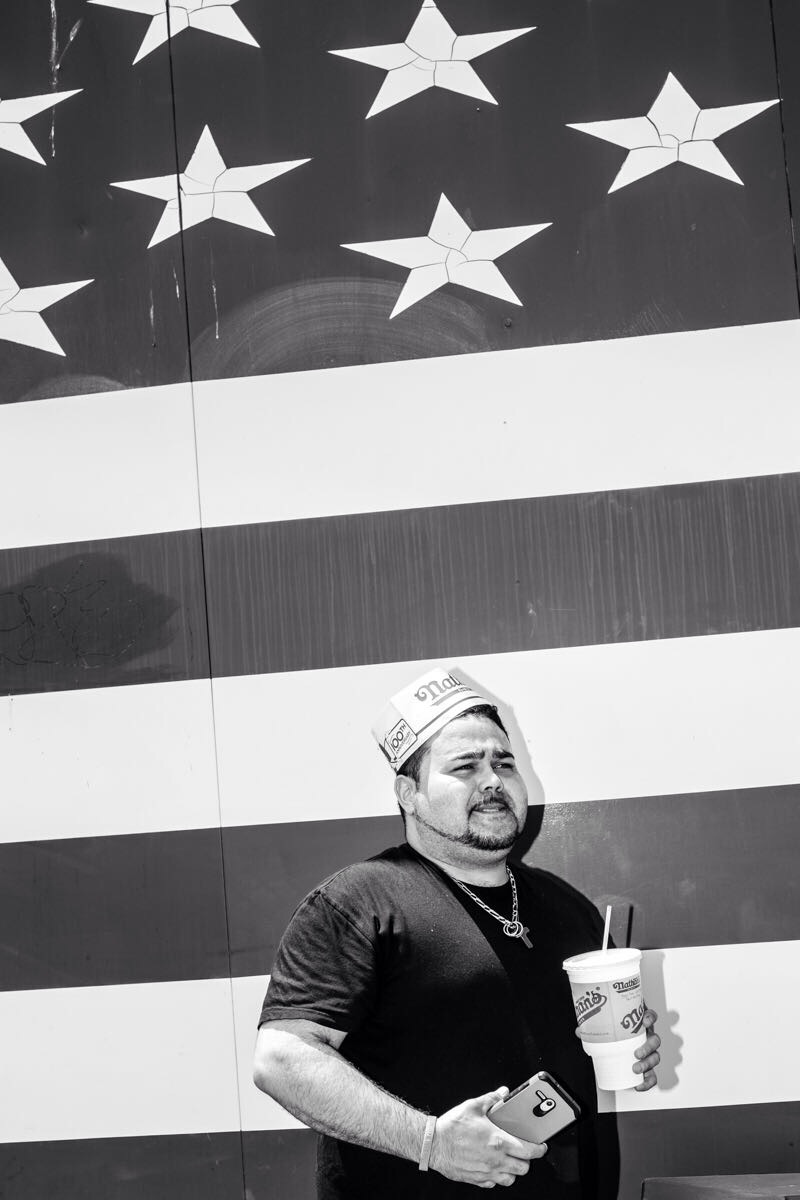

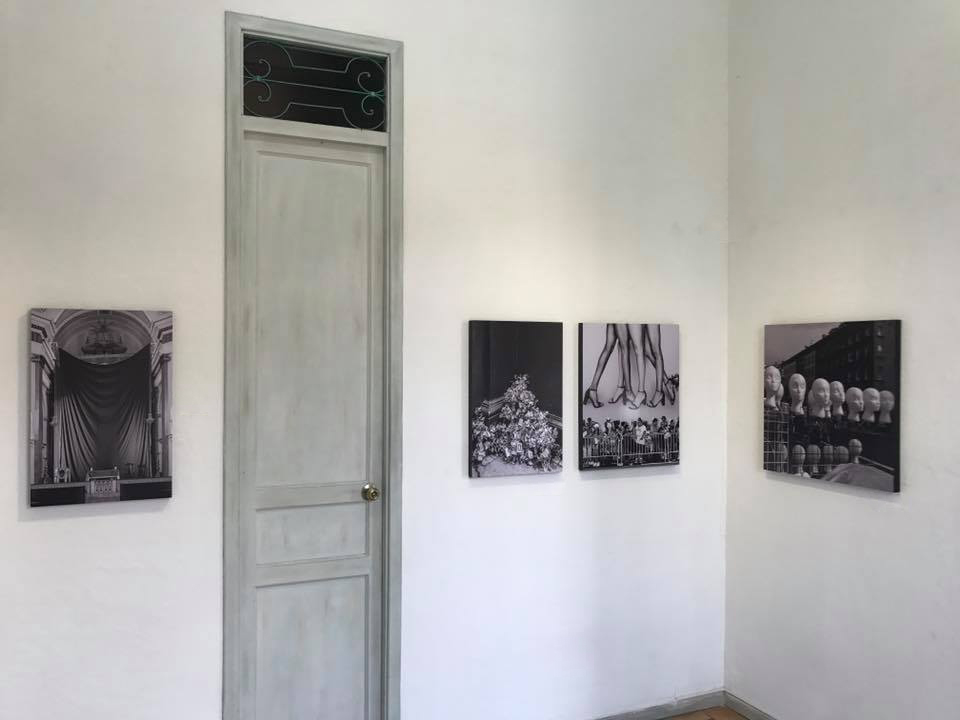



Juan Cristóbal Cobo estudia el escenario interminable de lo cotidiano introduciéndonos en calles que se transforman en pasadizos inciertos, donde la mirada del fotógrafo deambula interrogándose constantemente.
Hacer fotografía de calle o Street Photography implica actuar como un transeúnte ocioso, buscando siempre percatarse de su entorno, trazando caminos donde el instinto es el guía, observando y experimentando incansablemente las infinitas conexiones que se forman en el espacio urbano. Así, lo cotidiano se transforma en generador de fenómenos reflexivos, mediante vínculos y relaciones que quedan plasmadas en la memoria digital.
Asimismo, Cobo transita dejándose llevar por la fascinación de la captura del instante, utilizando un equipo liviano, además posee un nivel de experticia único, debido a su larga trayectoria en el área de la cinematografía, consiguiendo de esta manera capturar el momento donde la luz, la arquitectura y los diversos personajes se articulan de forma depurada.
Como lo dijo el fotógrafo francés Henri Cartier-Bresson: “Las fotografías pueden alcanzar la eternidad a través del momento.”
Curaduría: Norman Suescun Calero
Artista y Director Fundación Espacio Interferencia
Juan Cristóbal Cobo studies the endless scenario of everyday life, introducing us into streets that become uncertain passageways, where the photographer’s gaze wanders, questioning constantly.
Doing street photography involves acting as an idle passerby, always seeking to notice their surroundings, tracing paths where instinct is the guide, observing and tirelessly experiencing the infinite connections that are formed in the urban space. Thus, the everyday becomes a generator of reflective phenomena, through links and relationships that are reflected in a digital memory.
Likewise, Cobo travels letting himself be carried away by the fascination of capturing the moment, using a light equipment, he also has a unique level of expertise, due to his long career in the area of cinematography, thus capturing the moment where light, architecture and the various characters are articulated.
As French photographer Henri Cartier-Bresson put it: «Photographs can reach eternity through the moment.»
Curaduría: Norman Suescun Calero
Artista y Director Fundación Espacio Interferencia
Mariangela Aponte
Eutopía
Octubre 20 a noviembre 20 2017/ Fundación Espacio Interferencia-Cali
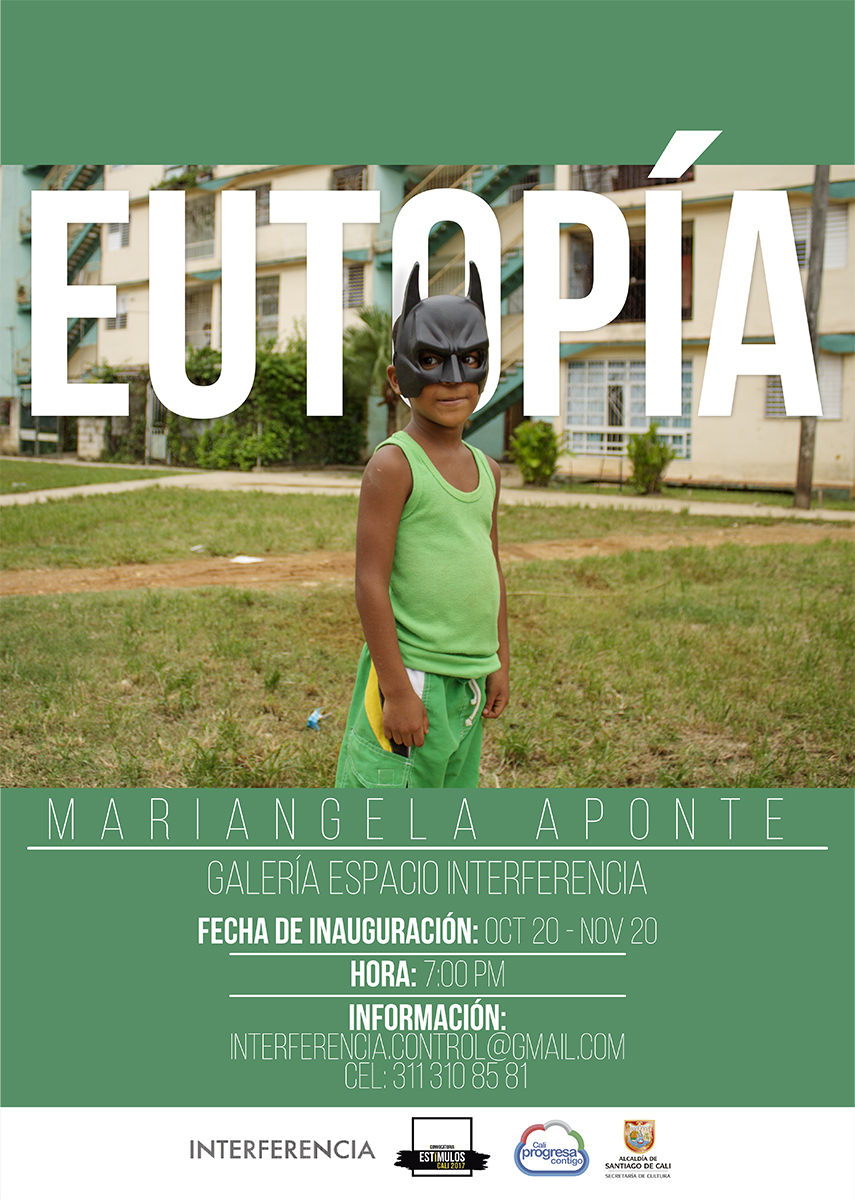
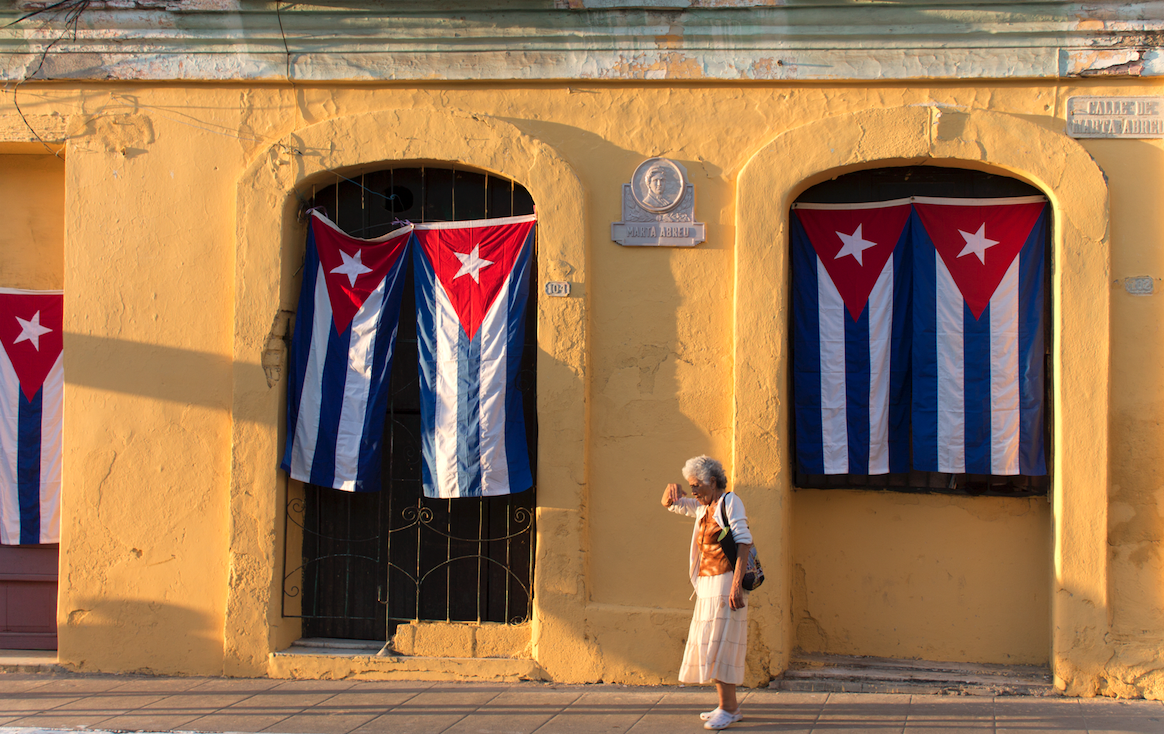

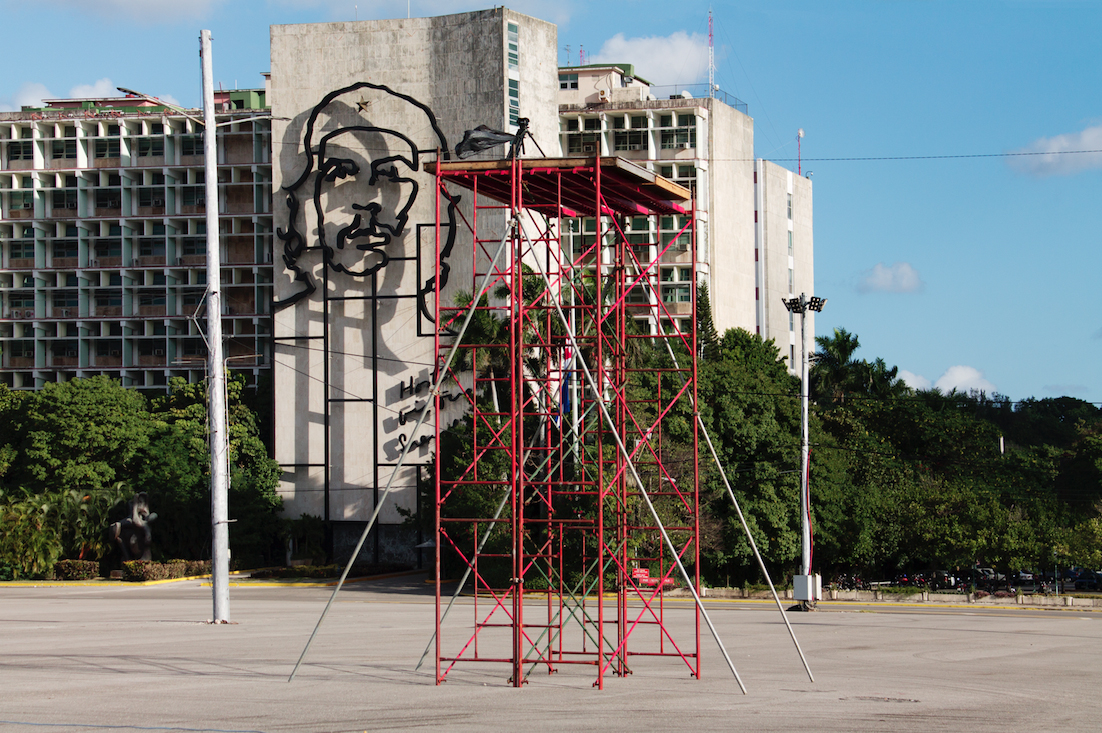
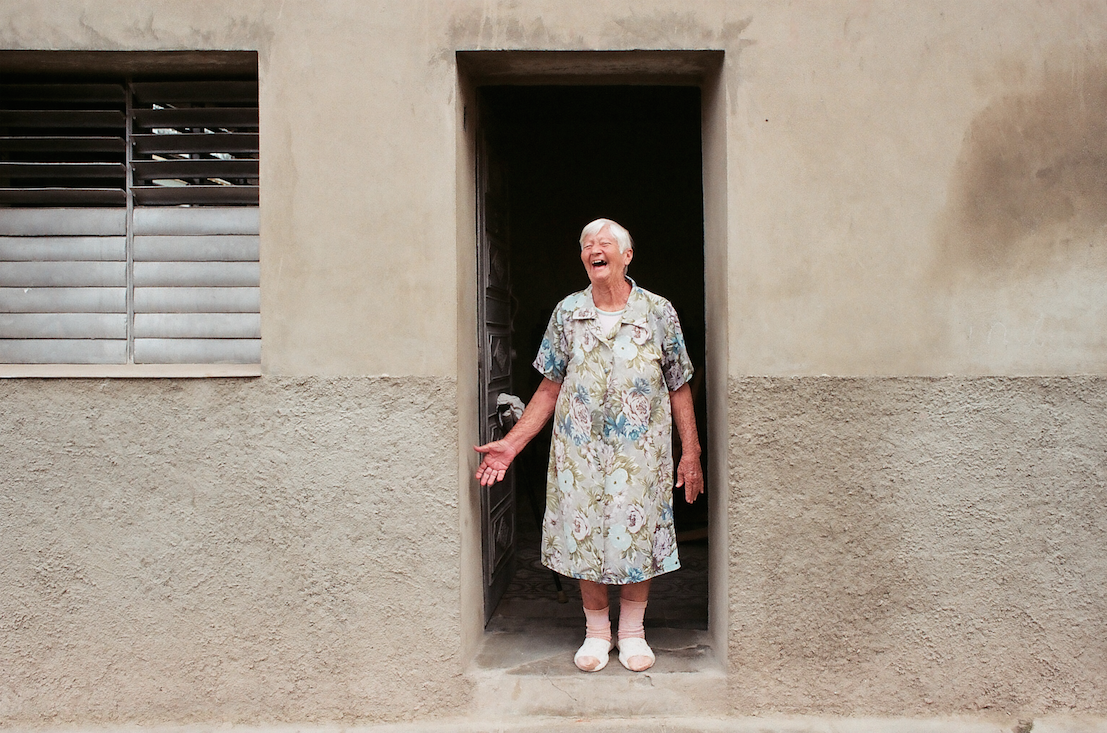
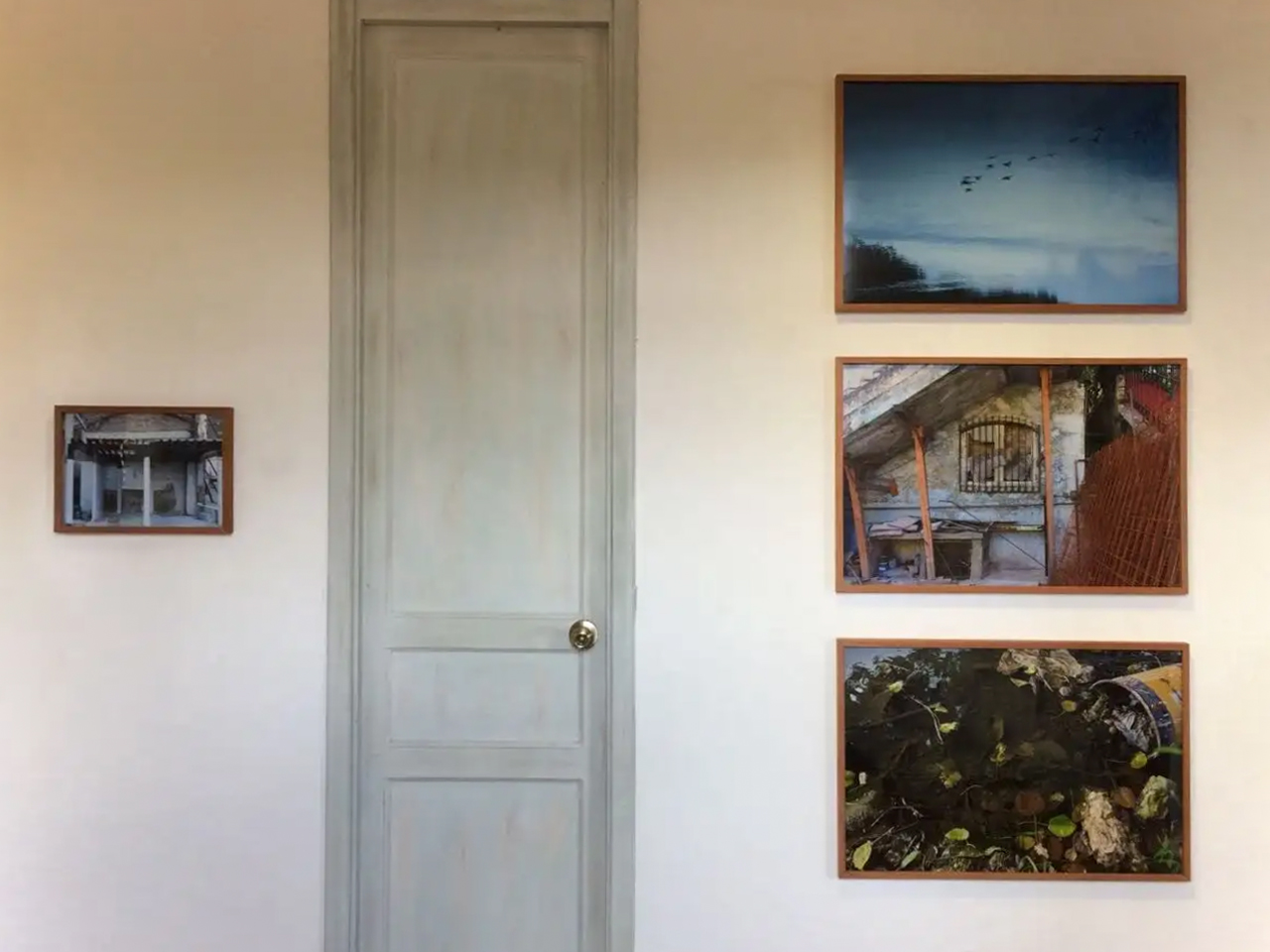

En Eutopia, Mariangela Aponte captura, desde el registro de lo habitual, el incesante contrapunteo político que define a la sociedad Cubana en la segunda década del siglo XXI. Situada precisamente en los días del fallecimiento de Fidel Castro, la obra de Aponte invita a pensar –más que en transiciones– en tramas, complicaciones, enredamientos y reciprocidades que han hecho de Cuba, paradójicamente, un cúmulo de utopías detenidas en el tiempo. La fotografía es aquí el crisol de lo cotidiano. A través del lente de Aponte, el espectador se sumerge en una serie de atmosferas cargadas de futurismo y letargo; llenas de óxidos y rupturas que revelan un insólito encuentro entre el mundo Caribe, el gótico socialista, y lo kitsch.
Cuba es el producto de diversos deseos en proceso de resolución. Es la ilusión de Fernando II, de Martí, de Batista, de Castro, y de las generaciones por venir. Sin embargo, su historia no es una sucesión de éxitos y fracasos por nombrar. En Eutopia, precisamente, pululan otras nuevas –y múltiples– formas de habitar. Amalgamando edificios republicanos, atardeceres de ensueño, tecnologías olvidadas, y marcas de moda; siento que Aponte, con gran destreza, utiliza la fotografía para develar la resiliencia humana y nuestra capacidad para re-habitar los intersticios de estos grandes andamiajes políticos
Texto: Alejandro Ponce de Leon
Ph.D. en Estudios Culturales
In Eutopia, Mariangela Aponte captures, from the register of the usual, the incessant political counterpoint that defines Cuban society in the second decade of the XXI century. Set precisely in the days of Fidel Castro’s death, Aponte’s work invites us to think – more than transitions – of plots, complications, entanglements and reciprocities that have made Cuba, paradoxically, an accumulation of utopias stopped in time. Photography is here the crucible of the everyday. Through Aponte’s lens, the viewer is immersed in a series of atmospheres charged with futurism and lethargy; full of oxides and ruptures that reveal an unusual encounter between the Caribbean world, the socialist Gothic, and the kitsch.
Cuba is the product of various wishes in the process of resolution. It is the illusion of Ferdinand II, Martí, Batista, Castro, and generations to come. However, its history is not a succession of successes and failures to name. In Eutopia, precisely, there are other new – and multiple – ways of living. Amalgamating Republican buildings, dreamy sunsets, forgotten technologies, and fashion brands; I feel that Aponte, with great skill, uses photography to unveil human resilience and our ability to re-inhabit the interstices of these great political scaffolding.
Text: Alejandro Ponce de Leon
Ph.D. in Cultural Studies
MUDO
Todo animal exige
Junio 23 a julio 28 2018/ Fundación Espacio Interferencia-Cali
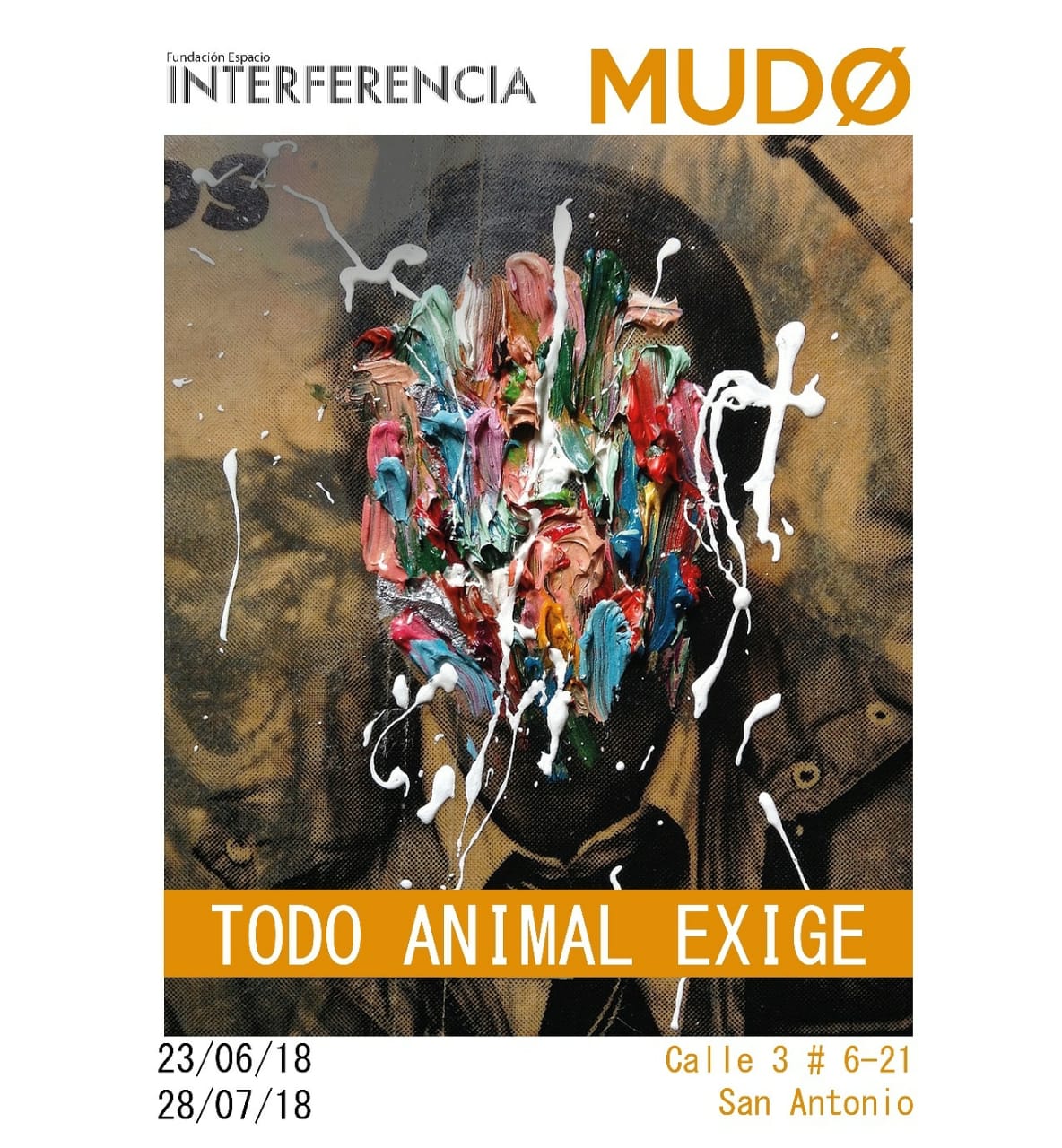
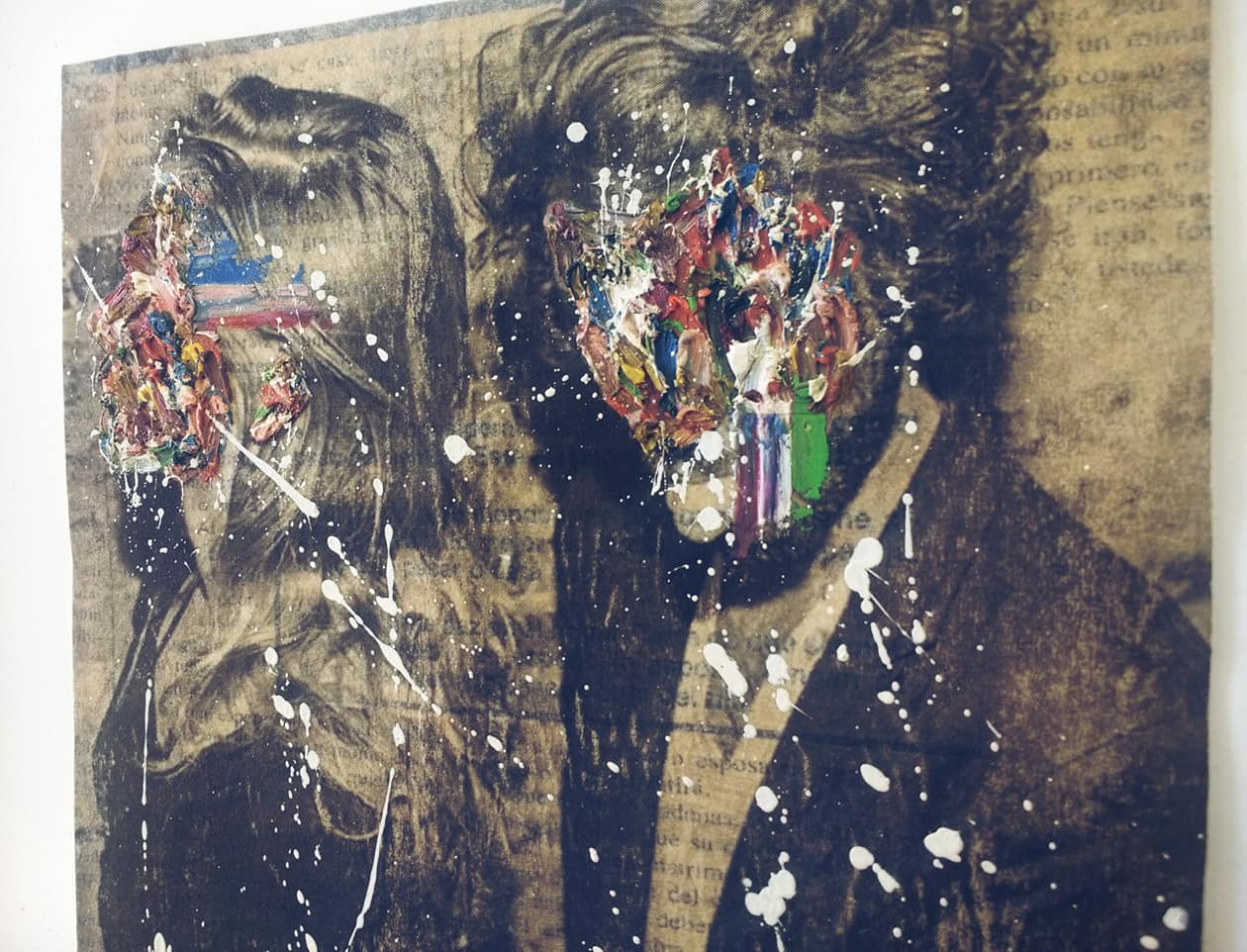
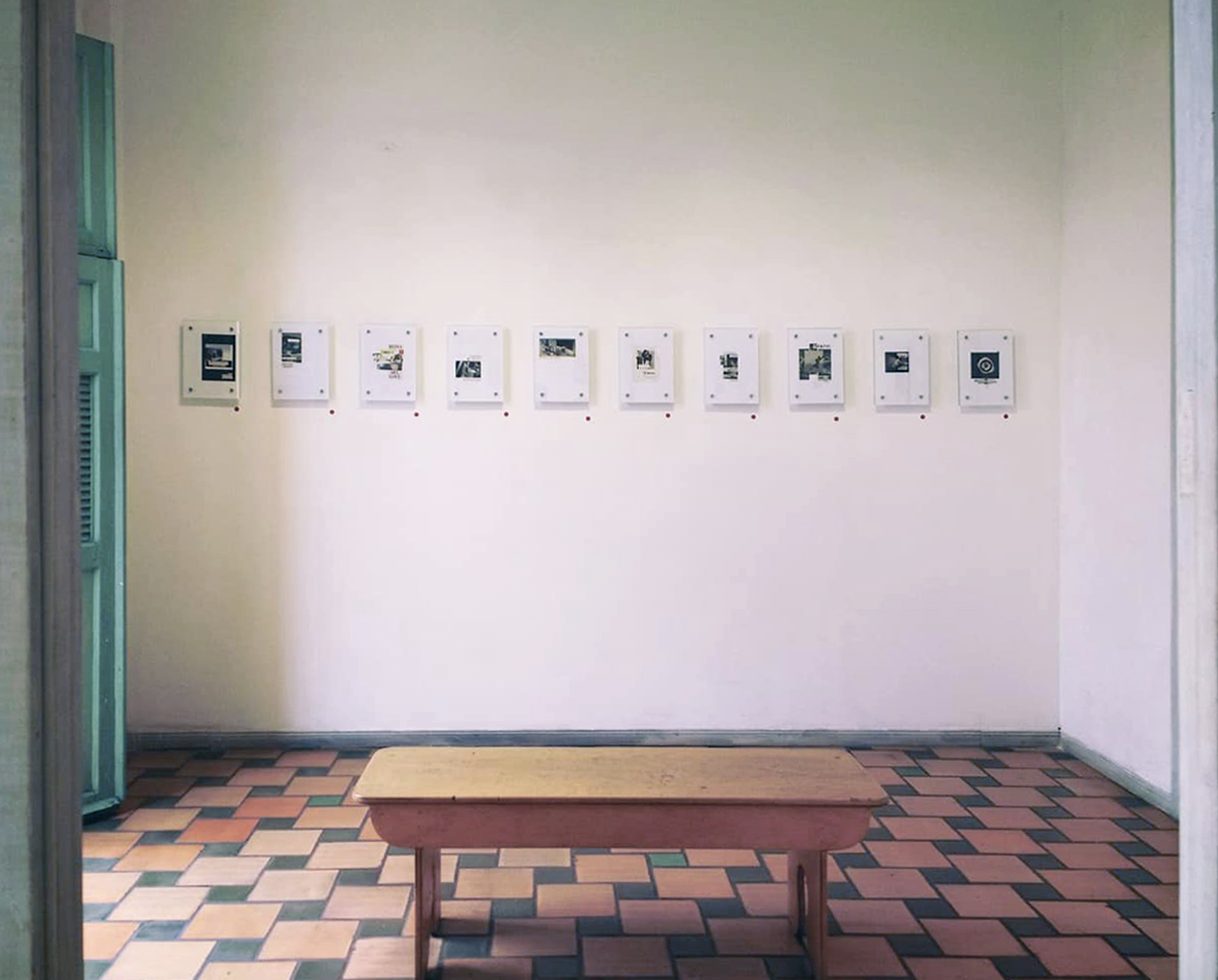
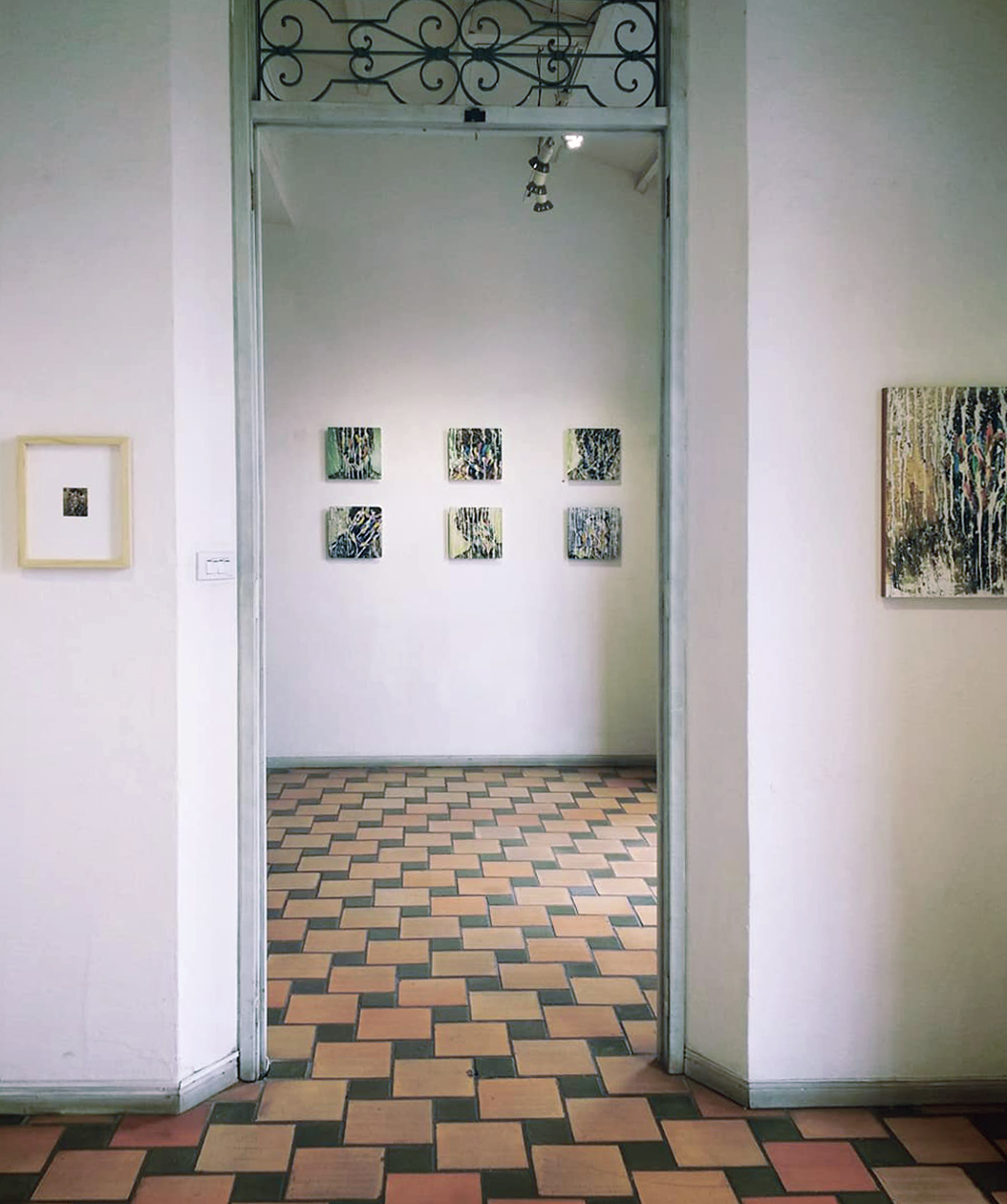
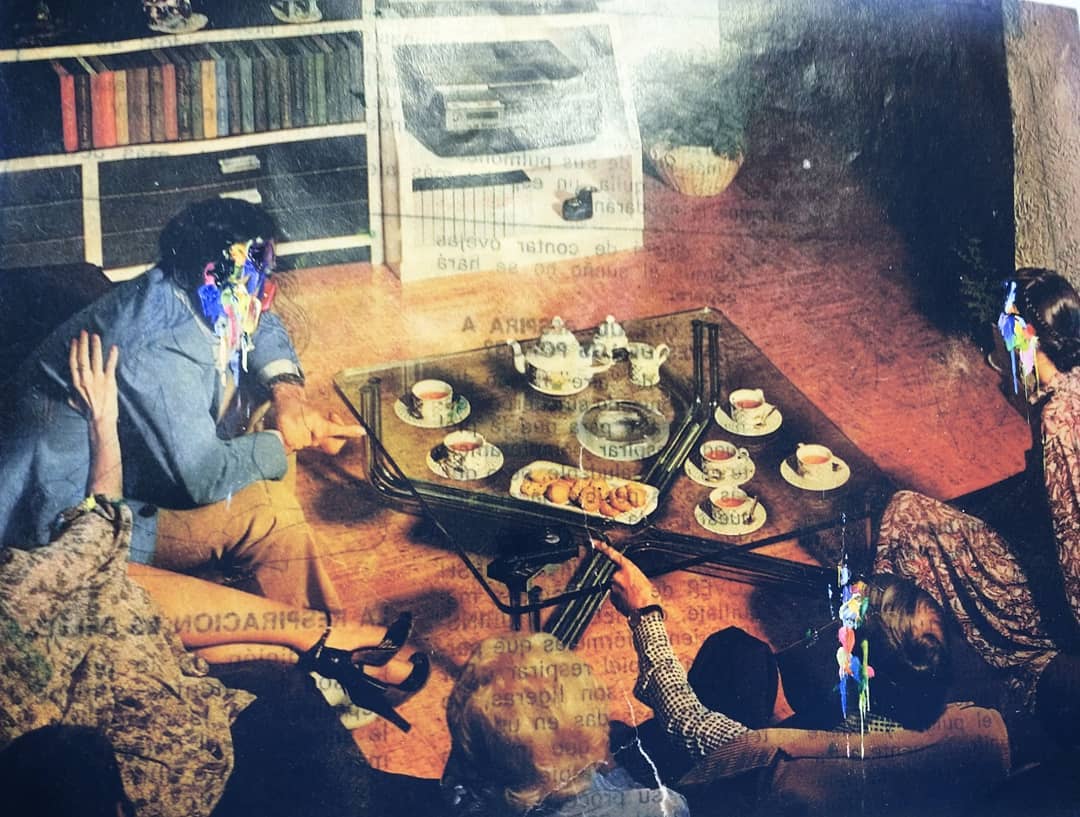
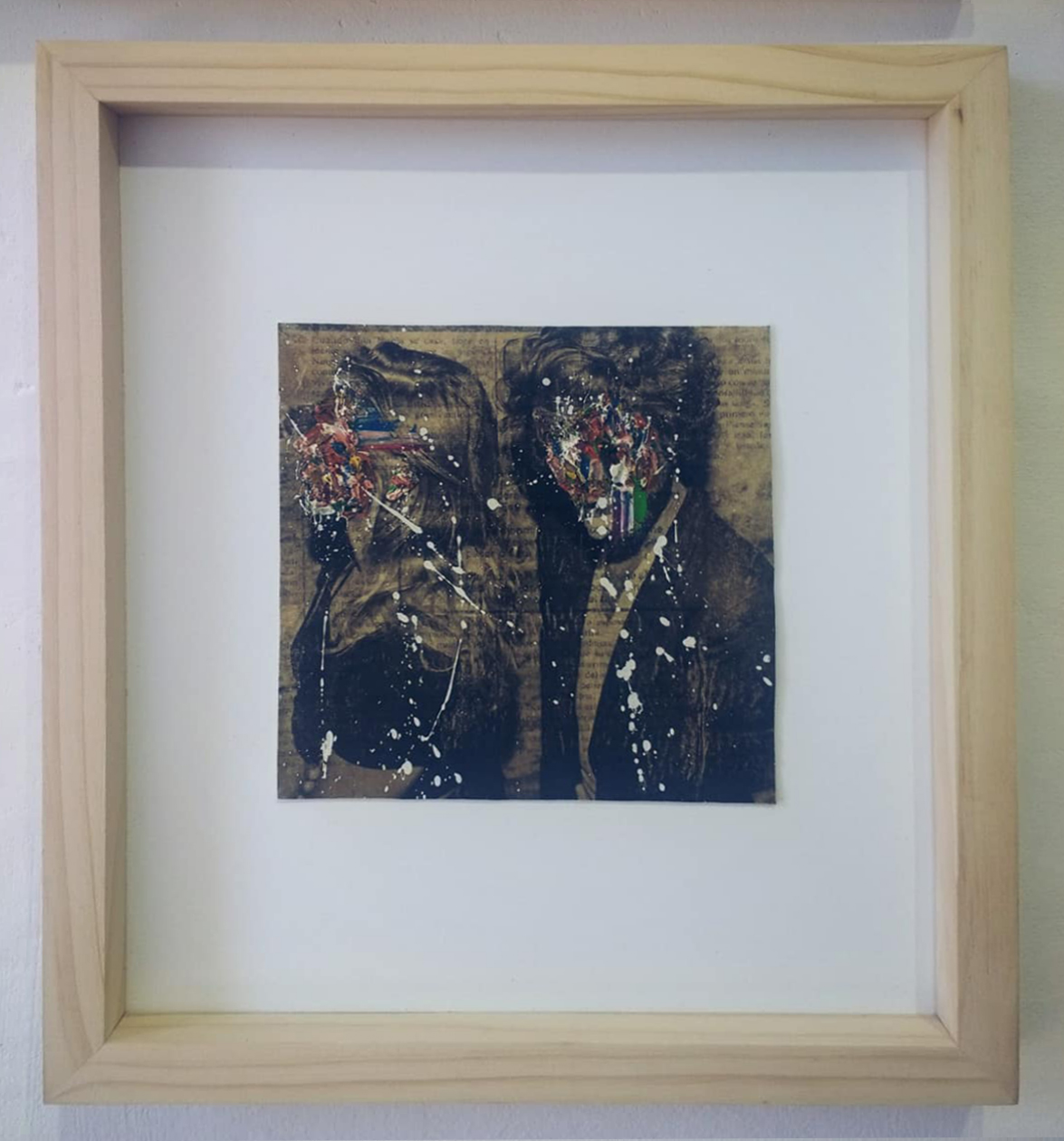
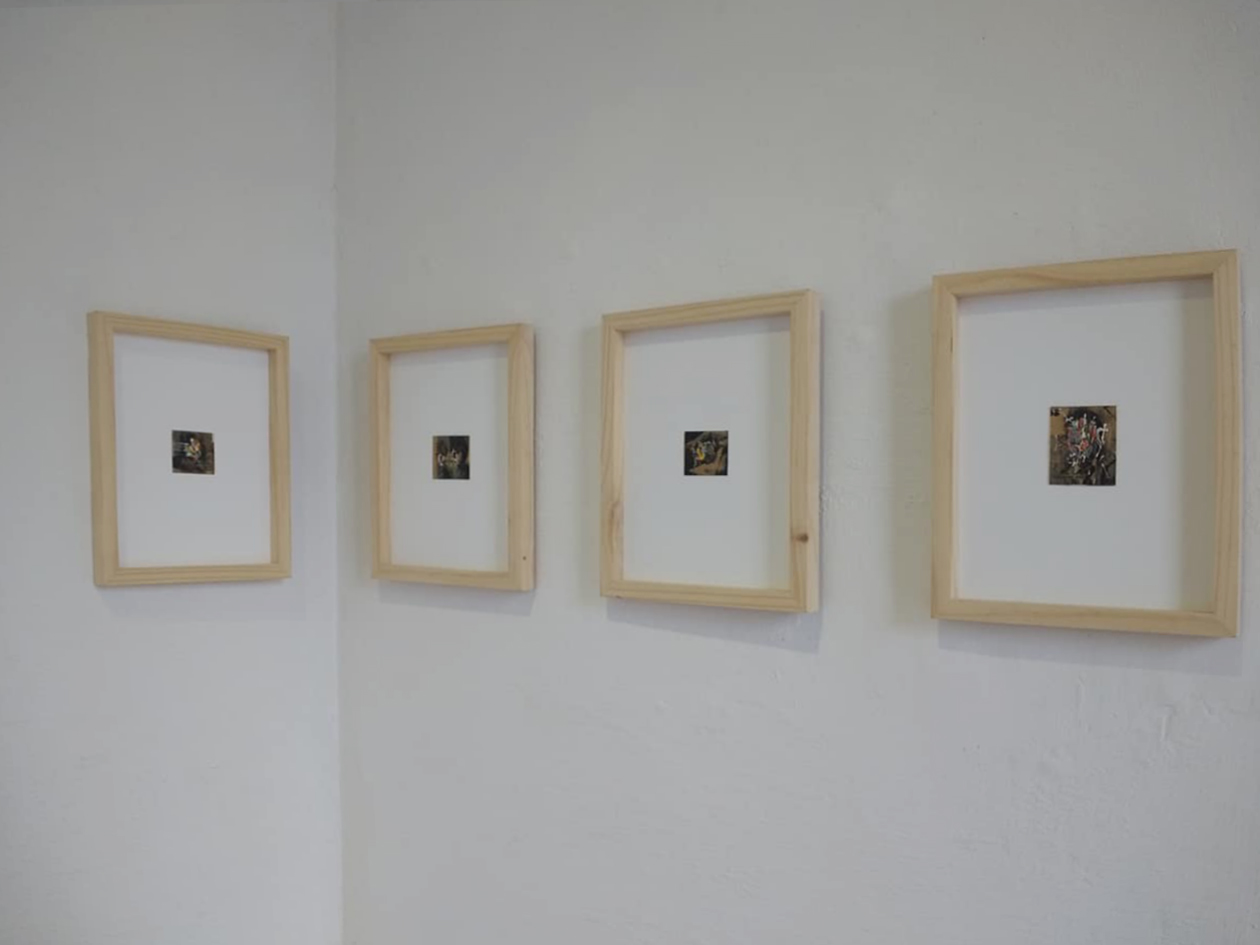
En la exhibición “ TODO ANIMAS EXIGE” Steven Bolaños (MUDO) plantea una serie de ejercicios plásticos donde explora la relación entre lo abstracto y lo figurativo, el concepto del retrato y las diferentes posibilidades del collage.
Mediante la incorporación de imágenes extraídas de revistas, libros, fotografías, negativos y el uso de elementos como el hilo, el vidrio o la crayola, el artista genera nuevos axiomas estéticos donde proyecta impresiones intuitivas que se manifiestan a través de tensiones impulsivas y sistemáticas. Dichas pulsiones se trasladan al lenguaje pictórico a través de gestos, la selección del color y el trazo, el cual juega un papel esencial manifestándose mediante tramas que parecen moverse de manera descendente, negando la representación del rostro, negando la figuración. Un combate donde la forma es neutralizada, generando así entidades autónomas desconectadas de toda referencia imitativa.
Finalmente el concepto del collage esta inmerso de manera transversal a través de la incorporación de elementos extrínsecos al enunciado pictórico, los cuales hacen referencia constante a los sistemas mediáticos y al desconcierto perenne frente a los arquetipos preestablecidos.
Curaduría: Norman Suescun Calero
Artista y Director Fundación Espacio Interferencia
In the exhibition «TODO ANIMAS EXIGE» Steven Bolaños (MUDO) proposes a series of plastic exercises where he explores the relationship between the abstract and the figurative, the concept of portraiture and the different possibilities of collage.
Through the incorporation of images extracted from magazines, books, photographs, negatives and the use of elements such as thread, glass or crayon, the artist generates new aesthetic axioms where he projects intuitive impressions that are manifested through impulsive and systematic tensions. These impulses are transferred to the pictorial language through gestures, the selection of color and the stroke, which plays an essential role manifesting itself through plots that seem to move downwards, denying the representation of the face, denying figuration. A combat where the form is neutralized, thus generating autonomous entities disconnected from any imitative reference.
Finally, the concept of collage is immersed in a transversal way through the incorporation of extrinsic elements to the pictorial statement, which make constant reference to media systems and perennial bewilderment in the face of pre-established archetypes.
Curator: Norman Suescun Calero
Artist and Director Fundación Espacio Interferencia
Sebastián Mejía
Mirando a la nada, pénsandolo todo
Agosto 18 a septiembre 18 2018/ Fundación Espacio Interferencia-Cali
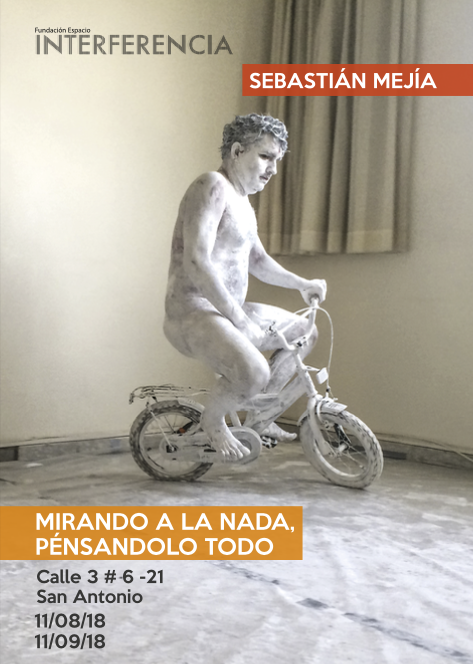
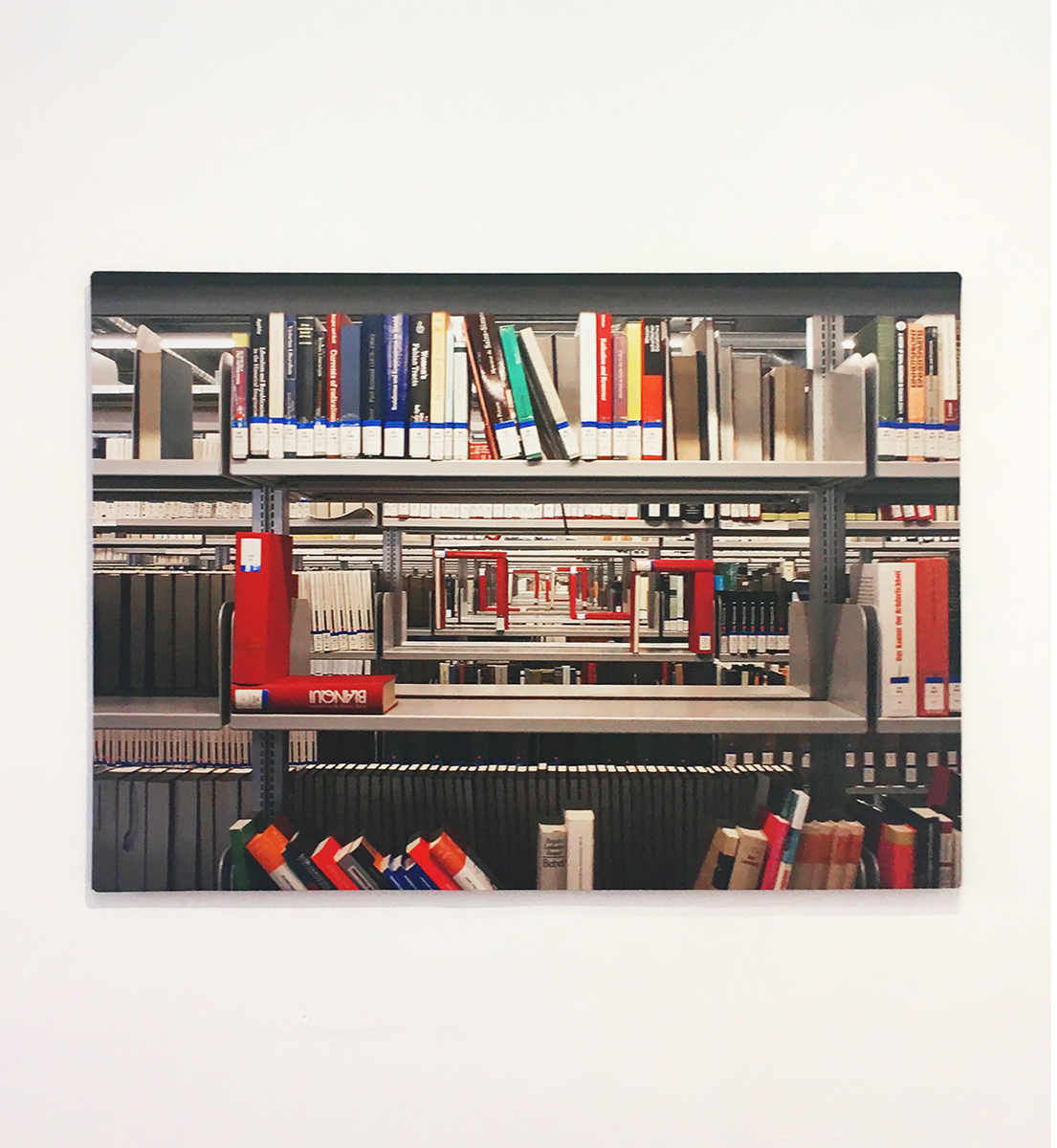
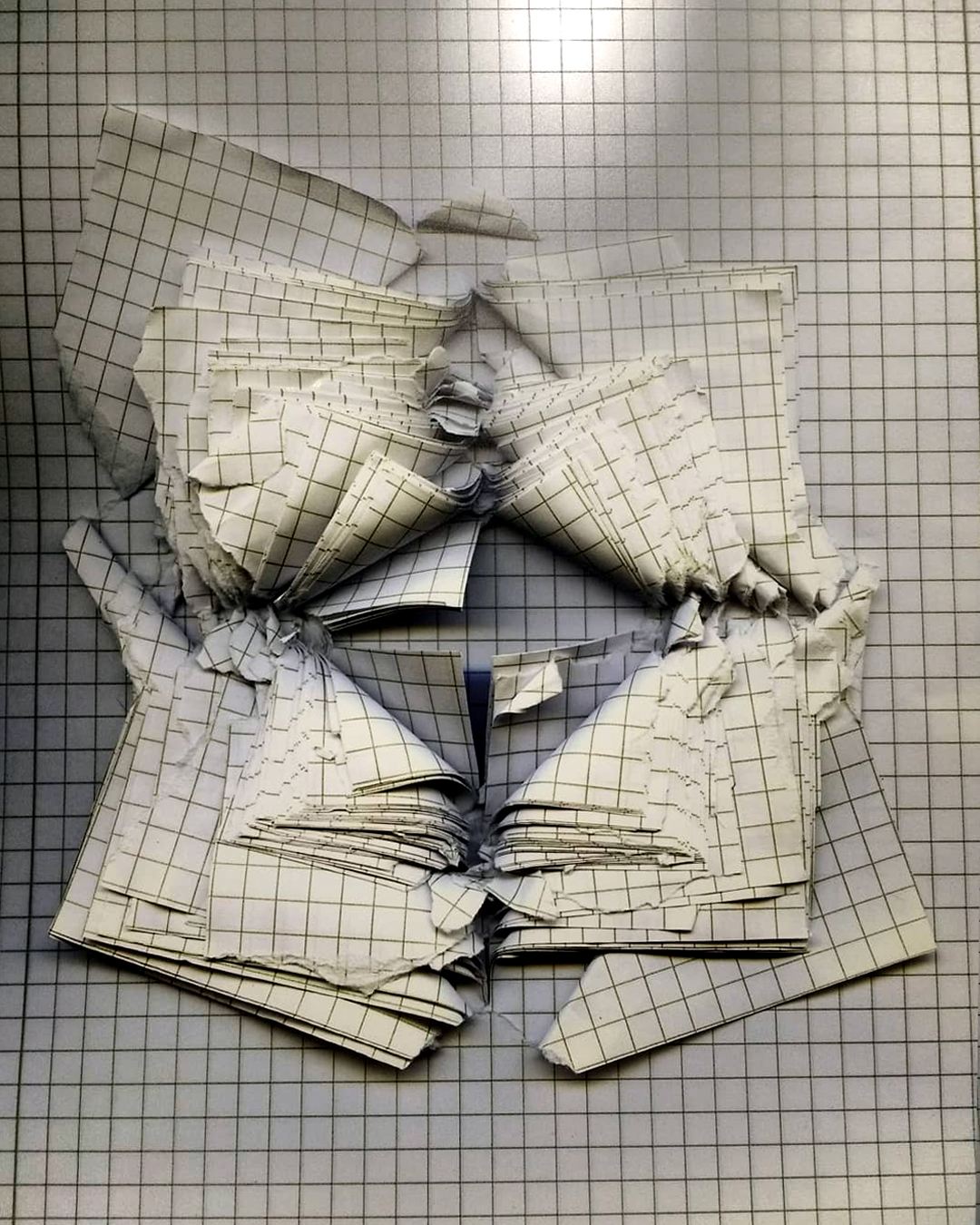
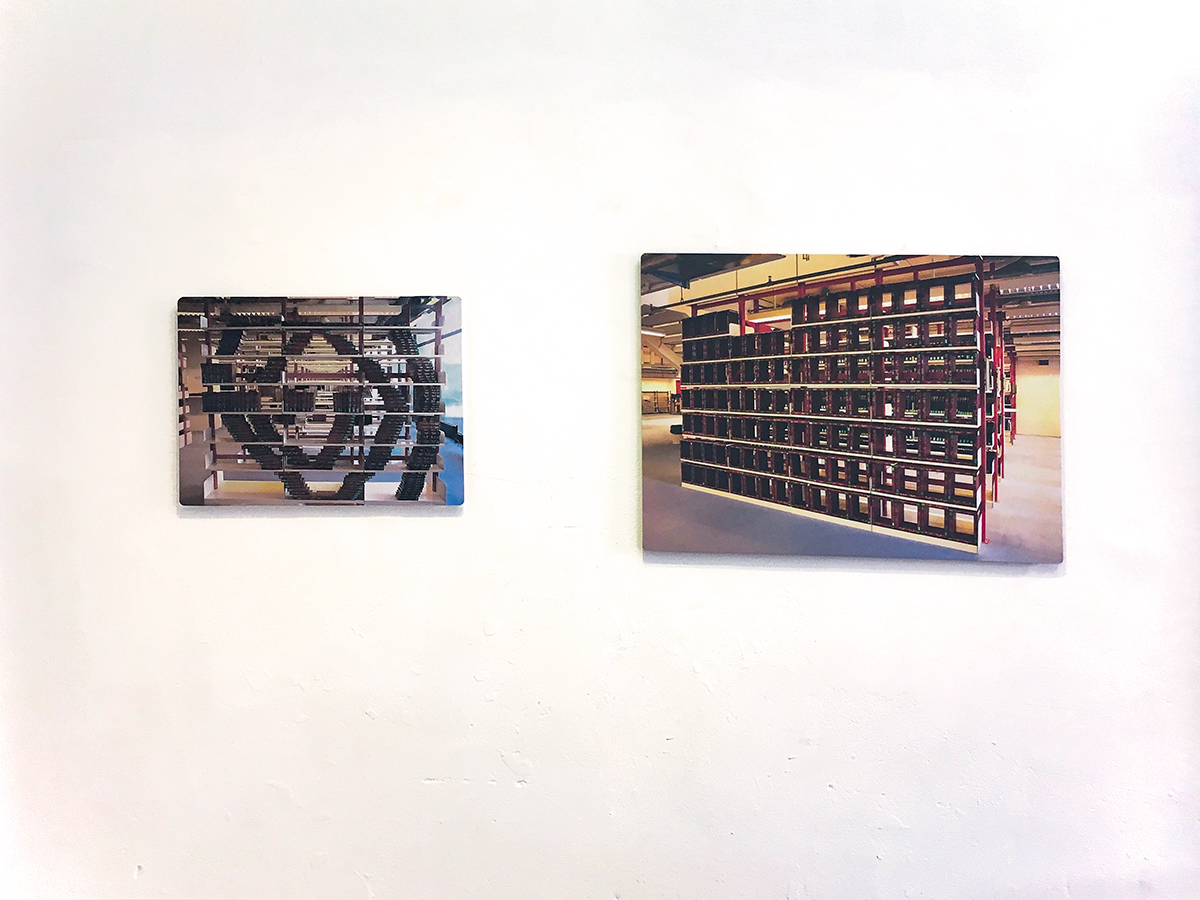

El nacimiento de las ciencias puede atribuírsele a la inquieta y curiosa naturaleza del ser humano quien en la historia se ha encargado de buscar la manera de responder a sus interrogantes creando mecanismos fundamentados en procesos. Dichos sistemas evolucionaron con el paso del tiempo dividiéndose en exactos y empíricos, este último ligado a la experiencia y lo sensorial, definiendo al método como una herramienta dinámica en el proceso investigativo. Francis Bacon (1561-1626) fue un re- conocido filósofo, político y literato inglés que acuñó el método científico mediante sus aportes desde el empirismo filosófico, describiendo al método como un conjunto de pasos que permiten no sólo medir sino también experimentar, formular, analizar y cambiar la hipótesis.
Sebastián Mejía recurre en su obra más temprana a una serie de experimentos que nacen a partir de su interés por cuestionar el estado total de la literatura en las artes, la ética en los procedimientos científicos, la naturalidad de las cosas y el error como gran acierto en la mayoría de las ocasiones.
Esta serie fotográfica que inicia en 2007, en lugares como Múnich, Düsseldorf, Colonia, y Dresden, tiene como objetivo documentar los procesos, que, a manera de pasos, el artista llevó a cabo para confrontar sus inquietudes desde acciones performaticas que modifican o alteran lo habitual a través del movimiento, generando nuevos lenguajes mediante acciones que redefinen el mensaje a través de lo estético.
Texto: Stiven Saldarriaga
Concepto curatorial: Norman Suescun
The birth of the sciences can be attributed to the restless and curious nature of the human being who in history has been in charge of finding ways to answer their questions by creating mechanisms based on processes. These systems evolved over time dividing into exact and empirical, the latter linked to experience and sensitivity, defining the method as a dynamic tool in the research process. Francis Bacon (1561-1626) was a renowned English philosopher, politician and writer who coined the scientific method through his contributions from philosophical empiricism, describing the method as a set of steps that allow not only to measure but also to experiment, formulate, analyze and change the hypothesis.
Sebastián Mejía resorts in his earliest work to a series of experiments that arise from his interest in questioning the total state of literature in the arts, ethics in scientific procedures, the naturalness of things and the error as a great success in most of the cases.
This photographic series that began in 2007, in places such as Munich, Düsseldorf, Cologne, and Dresden, aims to document the processes, which, as steps, the artist carried out to confront his concerns from performative actions that modify or alter the usual through movement, generating new languages through actions that redefine the message through the aesthetic.
Text: Stiven Saldarriaga
Curatorial concept: Norman Suescun